HR Business Plan Template: Everything You Need to Know
With an HR business plan template, you can help your company recruit new employees, retain existing employees, and guide the development of the workforce. 4 min read updated on February 01, 2023
With an HR business plan template, you can help your company recruit new employees, retain existing employees, and guide the development of the workforce so that you collectively meet your business objectives, regardless of any changes in the industry or economy.
When creating your HR business plan, you need to perform a needs analysis of your workplace to tailor the plan to your company's requirements. You'll also need to learn about the industry standards for your field to make sure you're competitive.
Without such a plan in place, your workers will feel unprepared and won't know how to work towards your company's overall goals.

Steps for Developing a Human Resources Department Business Plan
There are several steps to creating an HR business plan. They include:
- Clarify the requirements . While you might be tempted to create a detailed plan that encompasses the entire company's next 10 years, hold off. Always talk with your boss to see how much detail he or she would like in the plan. This will save you time and help streamline the process. However, there's no harm in creating your own personalized strategic plan for your specific department.
- Read through the HR job descriptions . The HR department typically has employees such as HR assistants, HR generalists, and an HR director . Read through the job descriptions for each worker in the department and see what kind of duties are missing. Brainstorm additional functions that each job role could provide to the company.
- Curate your list . Take the different functions you've brainstormed and compare them to what each member of the HR department is already doing. Are there functions you could add or subtract from each employee for more productivity? You don't have to go into detail here, but just think about how you could improve each role.
- Schedule a meeting with the executives . Before you make any changes, you'll obviously need to get input and approval from the company's executives. They may have more feedback on how the HR department can provide additional services and support the company's overall goals and mission.
- Create a feedback form . Come up with a list of questions to ask leadership about HR's role in the company and provide it to them in advance of the meeting so they have time to think it over and talk with their staff. You may even want to provide a rating and ranking format for the questions, as this will make their responses easy to understand and implement. Overall, this is a key process to understanding what management and employees want and need from the HR department.
- Look at external resources . While the internal information you're collecting is the most important, it also doesn't hurt to take a look at data from professional organizations and websites, such as the Society for Human Resource Management , The Balance , or HR Magazine . You can also ask colleagues from other local organizations for tips on creating your business plan.
- Use this information to make a plan . With your ideas, feedback from executives, and tips from external resources, you should have a clear idea of what your plan should look like. The things that are missing from the HR department should now be clear, and this should guide you on what to focus on to improve HR's contribution to the company.
- Identify goals for this year and next . While your plan can have long-term goals, keep the majority of them a little bit shorter in scope to see how things work out. This gives you the chance to reorganize and restructure if things aren't going right. Consider creating a list of accomplishments you can reach for the end of this year and into the next.
A Real Life Example
If you're seeking more guidance on how to create a successful HR business plan, look to Starbucks as an example.
As the world's largest coffee chain, Starbucks had $21.3 billion in sales in 2016.
Despite these massive numbers, Starbucks maintains the same approach to their human resources department. All of the HR planning is guided by the company's organizational strategy and brand.
Their strategy is to use specific interview techniques when hiring new employees. This lets them identify potential leaders and place them in a "New Partner Orientation and Immersion" training program. With this system, Starbucks has achieved the lowest employee turnover rate in the quick-service restaurant industry.
Starbucks also offers numerous employee perks and dedicates a lot of time to employee training through an online portal that teaches employees essential job skills.
If you need help with your HR business plan template, you can post your legal need on UpCounsel's marketplace. UpCounsel accepts only the top 5 percent of lawyers to its site. Lawyers on UpCounsel come from law schools such as Harvard Law and Yale Law and average 14 years of legal experience, including work with or on behalf of companies like Google, Menlo Ventures, and Airbnb.
Hire the top business lawyers and save up to 60% on legal fees
Content Approved by UpCounsel
- HR Compliance
- SPHR Certification
- Human Resources Management
- LLC Business Plan Template
- Details of a Business Plan
- Business Plan Management Structure: What You Need to Know
- CCP Certification
- Service Business Plan
- Creating a Business Plan

Prefer a self-guided tour?
In just 5 minutes (no strings attached!), learn how market leaders use Leapsome to build high-performing teams, enable managers and retain their best talent.
A complete guide to effective HR strategy planning (& a free template!)
Businesses are beginning to recognize the strategic value of human resources. In fact, our State of People Enablement Report found that 79% of people ops leaders felt their C-suite saw them as important.* They no longer viewed HR as an administrative or supportive department, but as vital to the organization’s success.
As the role people teams play expands and grows in importance, taking a more systematic, data-driven approach is essential. Effective, intentional strategies ensure your human resources department stays aligned with overarching company goals while positively impacting the employee experience and making your organization a truly enjoyable place to work.
To that end, this article covers the essential steps you need to take for successful HR strategy planning. We’ve also included a best practice HR strategy template you can customize or use as inspiration for your own team.
* Leapsome’s State of People Enablement Report , 2023
🤿 Dive right into HR strategy development Our customizable HR strategy template includes all the essential stages and action points you need to structure and flesh out your ideas. 👉 Download template here
What is an HR strategy & why does it matter?
An HR strategy is a comprehensive plan that aligns team management with organizational goals. By integrating the two, companies can ensure that they recruit and retain the right talent to keep their initiatives and long-term objectives on track.
However, an HR strategy goes beyond hiring and keeping positions filled — it can help you engage, empower, and develop employees in a way that supports sustainable growth and fosters a positive work environment.
When human resources plays a more strategic role, the company can also take a more proactive stance in its industry and build workplace resilience . People teams can forecast staffing needs and spot potential gaps and issues before they escalate into larger problems. For instance, you might anticipate turnover and escalate or adjust hiring efforts instead of scrambling to bring people on board as team members leave.
💭 “In the future of HR, the People function continues to be a strategic partner to the business that is highly integrated into company performance and no longer seen as just a support and administrative function. Well-supported People functions and teams will result in better business results, deeper engagement, high employee enablement, and happy customers.” — Luck Dookchitra , VP People at Leapsome
Last, remember that while HR managers may take the lead, the best strategies are a collaborative effort between leaders, team leads, and team members. Including stakeholders from every area of your business gives you a more holistic perspective, ensuring that your plan will benefit the entire company.
Free download: Our actionable HR strategy template
.webp)
Human resources strategies aren’t one-size-fits-all. It’s best to tailor them to your company’s unique needs, goals, and culture rather than adopting a generic blueprint.
That said, having a detailed template can provide you with a structure and save you time on planning. You can check that you haven’t missed any essential steps and customize the strategy to suit your context.
That’s why we’ve provided this free, downloadable template based on Leapsome’s own strategies and values.
🏆 Create a winning HR strategy Streamline your HR planning processes with our comprehensive template that covers every step and checkpoint. 👉 Download template here
8 steps to creating an effective HR strategy plan
Whether you’re working off a template or starting from scratch, there are some essential steps that should go into the development of any great human resources strategy . Here’s everything you need to consider at each stage.
1. Establish your HR strategy’s aims
Setting clear goals is essential as they will guide all the future decisions you make about your HR strategy. This step involves understanding your organization’s broad objectives and determining how you can support them, ensuring your plan contributes directly to the company’s aspirations and long-term success.
For example, your leadership team might clarify that their long-term objective is to enter the European market and establish a strong presence within the next two years. HR and the C-suite could collaboratively decide on the following aims:
- Hire 80% of the team for the new branch locally
- Relocate the remaining 20% of team members from existing branches
Speaking to other departments allows you to assess where your interests align and how you can support each other most effectively. In the example, HR might work alongside legal and accounting to find potential regulatory roadblocks to hiring in Europe.
When you’re developing cross-departmental aims and sharing them across the organization, tracking them can be challenging. Using goal-setting software like Leapsome allows you to establish complex objectives and track your progress toward them. Choose a platform that accommodates various methodologies, such as OKRs and SMART goals , so you can easily tailor your workflow to your company’s needs and preferences.

2. Review your industry
Staying up-to-date with industry happenings is essential to keeping your HR strategy relevant and competitive. You need to research the current state of recruitment, retention, and team management to understand what’s realistic before you develop any plans.
Going back to the example in step one, imagine you’re investigating the current European job market. You discover that there’s a talent shortage in your industry, which means that you may struggle to hire locally.
Look at official sites like Eurostat , the International Labor Organization (ILO), and the US Bureau of Labor Statistics (BLS) for the most recent information. HR thought leaders such as SHRM and the Harvard Business Review also report on job market trends.
Evaluating your position within the market can give you extra insights into developing a realistic strategy. You can see where you need to improve, where you already shine, and where competitors outmatch you. For instance, while looking into European expansion, you may notice that another company already has a strong foothold in the job market.
During your research, see where you can update your current HR tools and resources to support your strategizing. People enablement platforms like Leapsome can automate time-consuming parts of your workflow, such as distributing surveys, data collection, and scheduling meetings, so you can prioritize the planning itself. Automation also has the power to make you more adaptive to changes during the strategizing process — 63% of companies said it helped them to pivot.
3. Analyze & check in with your team
Consider your team’s composition to evaluate the talent you’ve got and look for gaps. You might look into:
- Employee demographics
- Tenure and experience levels
- Job performance
- Salary and benefits
Let’s say you’re considering which team members would be ideal candidates to relocate to your new European branches. You might note that a high percentage of the team are digital nomads who are highly likely to be interested in traveling and living abroad.
To conduct an effective analysis, you need to go deeper than superficial numbers to uncover your team’s needs and wants. Running engagement surveys can help you measure employee sentiment about upcoming company initiatives. Use a flexible tool like Leapsome’s Surveys module so you can come up with questions that are specific to your organizational goals and strategy or customize a ready-to-implement template. Setting up an anonymous suggestion box also creates a space where employees can share concerns that you haven’t covered in your survey.
To keep employees at the forefront of your initiatives, use their feedback to create action points for your strategy. For example, you might discover that team members would be willing to relocate to head an expansion abroad if it meant they were getting a promotion. Tools like Leapsome’s AI-powered sentiment analysis can help you summarize written responses while our post-survey action plans can analyze them to give you quick suggestions.
.png)
🎯 Put employees at the center of every plan Our engagement surveys can help you uncover your team’s concerns and align your strategies with their best interests. 👉 Learn more
4. Consider development opportunities
Now that you’ve got a better understanding of your current team, see whether your company has the skills and expertise it needs to meet its objectives in-house. If not, determine how quickly you can fill any gaps through learning and development initiatives.
Start by conducting a skills gap analysis to compare the talent you need against your team’s current capabilities. Visualizing the knowledge and expertise you need for your company initiatives on a competency framework can help you spot areas for development. You’ll also see how many steps employees need to take to reach an optimal skill level. Leapsome’s AI-powered competency framework can help you get started — just input your department name, number of competencies, and number of levels to generate a framework in minutes.

Let’s say that you’re looking for employees to manage payroll for new branches in the United Kingdom. While no one in the existing accounting department is familiar with British regulations, one person has experience in international finance.
Once you’ve got a clearer idea of your talent needs, explore how effectively you can meet them by developing existing team members. For instance, you might:
- Ask managers to hold career development talks and report on which team members would be open to learning new, critical skills.
- Assess your current learning and development programs to see if you can adjust them to include the desired expertise.
- Research which training courses on the market cover the competencies you need.
- Explore the possibility of creating personalized courses to equip team members with the specific skills they need.

5. Explore pathways for career progression
As you develop your HR strategy, decide how roles should change to align with organizational goals and employee needs. You may need to create new positions if your current team structure doesn’t support your plans, especially if you’re growing or expanding.
Again, a competency or career progression framework could help you determine which employees can be upskilled or are ready to move into the positions you need. Leapsome’s Compensation and Reviews modules could save you time here by providing you with relevant data on all your internal candidates. You can also use the platform to collaborate with each employee’s team lead to make informed, well-rounded decisions.
For example, your company might need a sales manager to head a new branch in another country. After looking at your employee data, you might identify a salesperson who’s got experience heading a team, and a quick chat with their team lead may reveal that they’re eager to advance professionally. You can then see how to support them and upskill them to move into the new role.
6. Examine recruitment & turnover
Hiring and retention are often at the heart of human resources initiatives. For example, reducing turnover can help businesses maintain a knowledgeable and experienced team while they launch new ventures. A stable team is also vital to protecting employee well-being and company culture during changes. When colleagues are constantly coming and going, surveys show that team members are up to 25% more likely to resign .
Using the following steps, you can get clarity into how hiring and retention may play into your HR strategy:
- Measure your recruitment and turnover levels
- Filter the results by department and role
- Benchmark your results against the industry standard
- Review reasons for job offer rejections and resignations
- Consider whether you can expect these numbers to change
- Estimate how many positions you’ll need to fill
A people analytics tool like Leapsome can help you implement many of these steps. Our platform not only collects and analyzes your HR data, but gives you AI-driven actionable insights . For instance, Leapsome can sort your information to indicate the biggest impact drivers and filter out less relevant details. You can also benchmark this data against competitors and use predictive analysis to uncover future trends in turnover.
Ultimately, you can see how to solve potential turnover issues at the same time as you discover them, saving valuable time.
7. Design HR initiatives & strategies
Now, you should be ready to translate all the aims and the insights you’ve collected into actionable steps. Write objectives that relate to both the overarching business goals and your team’s needs. If you’re using a cascading goal framework like OKRs, you can tie them directly to each of your company’s aims.
If you find the OKR methodology tricky to implement correctly, consider using Leapsome’s AI-powered OKR generation feature: Simply provide a descriptive objective as a prompt, and allow the AI tool to generate key results and initiatives tailored to your overall goal. You can then refine your choices from the generated list by selecting the most suitable key results, and include relevant and realistic deadlines and metrics for your organization.
Let’s return to our example of the organization that’s looking to expand abroad. You might establish the following objectives and key results:
Company-level
- Objective: We operate in the EU within the next two years to diversify our market presence and increase our resilience.
- Key result: We have five teams of 750 local hires and 250 relocated employees working across offices in London, Paris, Berlin, Madrid, and Rome.
- Objective: We have full teams with the best skills, experience, and culture add to run our European offices to ensure the success of our expansion.
- Key result: There are ten managers from our existing offices working in our new European ones who have successfully undergone our relocation program.
- Initiative: We arrange meetings to discuss career opportunities with the top 30 candidates.
Any key results should be measurable so you can track your progress and see whether you’re staying on course. For instance, the metrics in the examples above are the number of people hired and successful relocations.
Once you’ve written your objectives, finalize them with leadership, department heads, and employee representatives. You’ll need to double-check that everyone is aligned on the strategy. Returning to our example, perhaps the C-suite has agreed that ten managers can relocate and employees are on board, but department heads fear that it’ll leave them short-staffed. It’s essential to address these concerns: In this instance, you could consider implementing a transitional plan that outlines how the company will manage workload and resources during the relocation period.
8. Monitor progress & review
Your HR strategy plan doesn’t end with implementation — you need to decide how you’ll monitor how it’s going and potentially adjust your approach as your needs change and evolve.
💭 “We’ve emphasized continuous improvement since our first HR strategy. Our approaches evolved as we gained insights from experiences and integrated more comprehensive training and development programs. We also honed our communication channels: Fostering transparent dialogues with staff proved essential in understanding their changing needs. By adopting the right technology, we’ve made HR processes more efficient and user-friendly. Our HR strategies have ensured we attract the right individuals who align with our company ethos and contribute meaningfully to our mission. We’ve seen significant benefits: increased productivity, improved teamwork, and a notable boost in our quality of service.” — Sarah Jeffries, Managing Director, First Aid Course Leicester
Using data analytics, you can continue to observe trends in:
- Recruitment and retention
- Onboarding, training, and development
- Engagement levels
- Punctuality and absenteeism
Looking at the data, you can determine whether you’re seeing the expected results. For example, if you’re expanding your organization abroad, you should see changes in recruitment levels and employee demographics. You might be interested in investigating your onboarding times if you’re hiring a lot of candidates to check that training is running smoothly.
You can also use the data to evaluate how well your company has managed the changes. Retention and engagement levels are often telltale signs — if the initiatives have improved job satisfaction, you can expect an increase in both.

You can run surveys to get a clearer idea of employee responses toward the initiatives. When you’re managing hundreds of people over different locations, reading every answer won’t be feasible. Instead, turn answers to Likert and multiple choice questions into data to gauge your team’s overall sentiment using data analytics.
If you ask open-ended questions, you could use a tool like Leapsome’s AI survey comment summaries . Our Natural Language Processor interprets qualitative survey results to give you a deep analysis of written responses.

How Leapsome enables HR professionals

Human resource teams should be a vital part of any business’s big-picture strategies. With their input, organizations can strike an ideal balance between working toward ambitious company objectives and supporting team members.
To enable HR professionals to thrive as they take on more strategic roles within your organization, you need the right tools. Our people enablement platform is ideal for creating HR plans that are tailored to your specific business needs. We allow you to manage:
- Company-wide goals and OKRs
- Employee feedback and surveys
- Career advancement processes
- Onboarding, learning, and development
- People analytics
With Leapsome, you can easily collaborate on any human resources strategy and get data-driven insights to make the best possible decisions for your organization’s future.
🖼️ Focus on the big picture, not the fine print Leapsome automates data collection, survey distribution, and review cycles so you’re free to strategize. 👉 Book a demo
Leapsome Team
.png)
Related Articles

Beyond job satisfaction: What employee experience is & why it’s important

People Over Perks podcast ep. 1 – Till Neatby, Co-Founder & Head of Culture at Marley Spoon

Navigating uncertainty: Four HR experts reveal strategies for fostering workplace resilience
Ready to upgrade your people enablement strategy.
Exlpore our performance reviews, goals & OKRs, engagement surveys, onboarding and more.
.webp)
The #1 rated HR platform for people enablement
Schedule a demo to find out why leading companies choose Leapsome, the intelligent HR platform that empowers managers to develop, align, and engage their teams.
- Get AI-powered recommendations 🪄
- Save countless hours with automations ⏱️
- Learn from industry best-practices and benchmarks 📊
1,600+ forward-thinking companies choose Leapsome

Schedule a demo
Our friendly team will be in touch right away!
.png)
Mitarbeiter entwickeln mit Leapsome
Stärken Sie Mitarbeiter-Engagement und Erfolg Ihres Unternehmens - wie andere führende Marken.
Interesse an Leapsome?
Unsere Produktexperten zeigen Ihnen gerne unsere Plattform oder eröffnen einen Account.
10+ SAMPLE HR Business Plan in PDF
Hr business plan, 10+ sample hr business plan, what is a hr business plan, areas of human resources, tips to improve human resource management , how to create a hr business plan, what is a hr business plan, how do you write a human resources business plan, what are the 7 major hr activities.
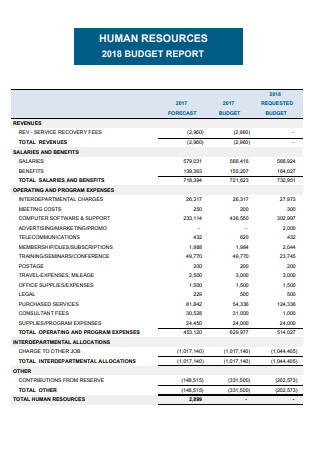
HR Business Plan And Budget
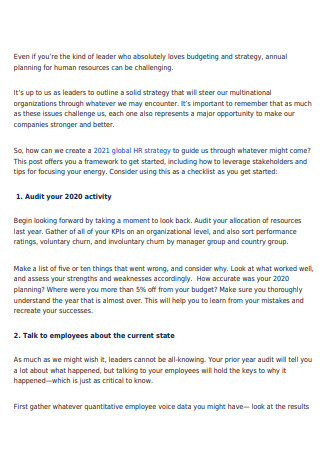
7 Steps for HR Business Plan
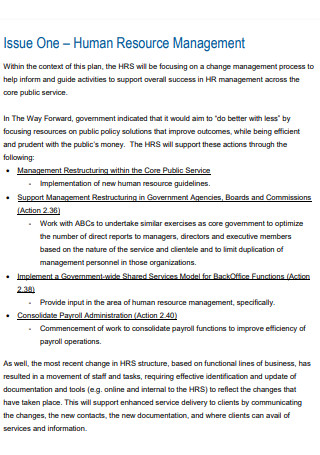
HR Secretariat Business Plan
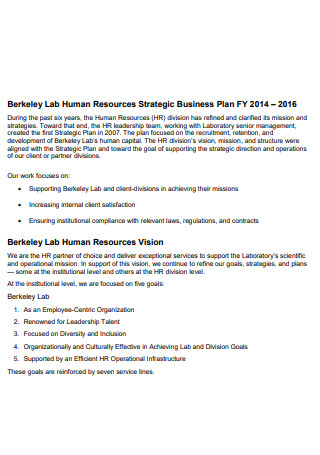
HR Strategic Business Plan
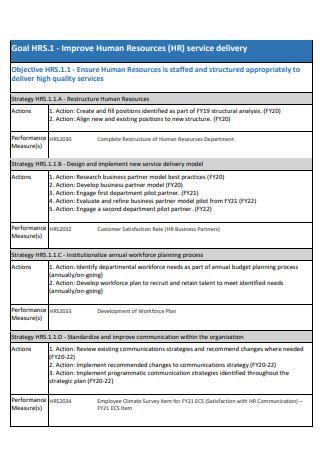
Sample HR Business Plan
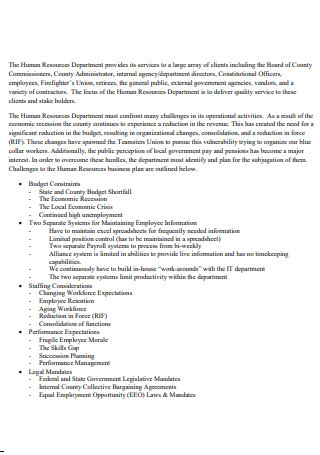
HR Business Plan Example

HR Department Business Plan
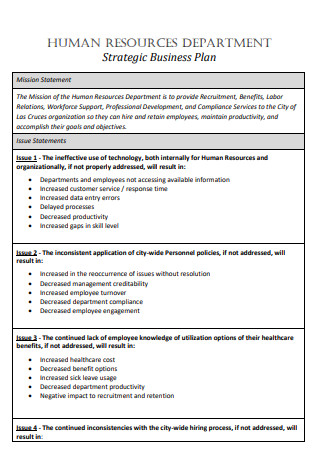
HR Approved Strategic Business Plan
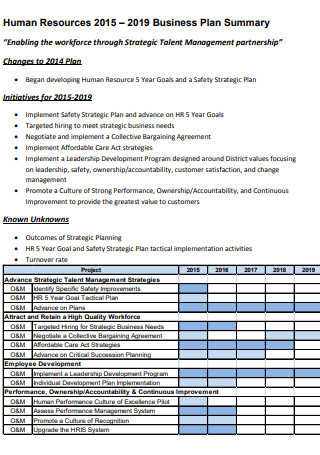
HR Business Plan Summary
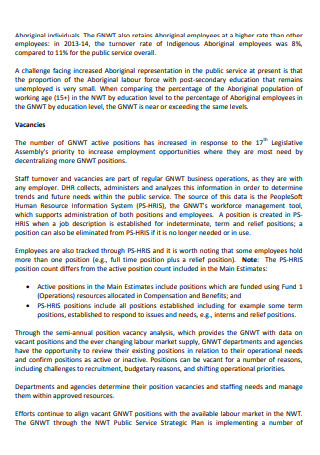
HR Budget and Business Plan
Step 1: establish the objectives, step 2: clarify the roles and job descriptions, step 3: assess the programs and resources, step 4: identify the strategies , share this post on your network, you may also like these articles.

In this comprehensive guide, we explore the essentials of creating an effective Floor Plan. Whether you are designing a new home, renovating an existing space, or planning an office…
Nursing Care Plan

In this comprehensive guide, we explore the essentials of creating an effective Nursing Care Plan. Whether you are a nursing student, a new graduate, or an experienced nurse, this…
browse by categories
- Questionnaire
- Description
- Reconciliation
- Certificate
- Spreadsheet
Information
- privacy policy
- Terms & Conditions

HR Strategy Template

What Is a Human Resources Strategy?
A Human Resources Strategy is an overall plan focused on managing human capital to align with the business's core activities, with the ultimate goal of achieving the business mission. This usually revolves around the members who make up the organization as the most important division of an organization, and the best practices to implement.
What's Included In This Human Resources Strategy Template?
This template is pre-filled with examples, which you can use as inspiration for your own HR plan.
Within seconds of setting up your template, you’ll get immediate access to:
- 4x Human Resources Focus Areas
- 12x Human Resources Objectives
- 16x Human Resources Projects
- 19x Human Resources KPIs
Once you have set your template, you can also create up to two dashboards for real-time performance monitoring.
And yes - you get free access with no credit card required. ✅
Who Is This HR Strategy Template For?
The underlying definition of Human Resources (HR) is employee-oriented and focuses on the employment process all the way through to fair pay and ultimately managing your employees. Our simple HR strategy template can be applied to any industry and almost every organization within that industry. Line managers, human resource managers and other HR professionals, CEOs, department managers, team leaders, and unions are all examples of professionals who could use such a template.
You can use our HR strategic plan template to improve your company’s workforce management, achieve common business goals, and maximize your human capital.
How Is This Human Resources Strategy Template Relevant To Your Organization?
Human Resources is a holistic department that is part of every organization. A good HR strategic plan can help with not only the hiring process, but also in establishing the culture of the workforce and the types of people with whom your organization wants to be associated. This is why Human Resources is relevant to any and every organization, including yours. At Cascade, we understand that every organization has a different way of leading, training, and recruiting its employees. This is why we believe that using this Human Resources strategy template will be useful for you to better understand your employees and identify what factors may be affecting your success rate in hiring and retaining your staff. It will help you increase employee satisfaction, decrease turnover rates, and provide a better overall company culture.
How To Use the HR Strategy Template?
1. define clear examples of your focus areas.
Focus areas are strategic ways of addressing an organization's targets. Begin thinking about what comes to mind for your organization when you think of Human Resources and note down some keywords, i.e. people, culture, fair work, retention, and loyalty. Now, reflecting on these words, they are both values and focus areas that your company is trying to identify and associate its organization with. Next, ask yourself, "Am I struggling to address any of these areas?" Those areas are usually the ones that you should focus on. An example of HR focus areas includes talent acquisition, culture, and employee efficiency.
2. Think about the objectives that could fall under that focus area
When coming up with a strategic objective, it is important to ensure they are SMART goals, i.e. Specific, Measurable, Attainable, Relevant, and Time-Bound. The main idea behind creating an objective is to have some form of direction and drive to strive toward. Within your HR strategy, these objectives will have to directly relate to the focus area of choice. Otherwise, there’s a huge chance that your strategic plan will fail.
Objective example: Develop a World-Class Employee Onboarding Program
The above objective would fall under the focus area of talent acquisition and is one target that needs to be met to address that focus area.
3. Set yourself measurable targets (KPIs) to tackle the objective
A KPI is a key performance indicator that is measurable and evaluates the success rate of an organization in relation to the task at hand. With reference to the Human Resources strategy template, organizations can use Key Performance Indicators as a way to track whether their key business objectives are on track, behind, ahead, or have been achieved. Need help on how to write KPIs? To assist you with this, Cascade has written 84 Key Performance Indicators that can be used within your HR strategy template.
Two example KPIs you can include in your HR plan to achieve the above objective are:
- Increase the percentage of 'Cherish & Retain' Employees
- Increase Internal to External Hiring Ratio
It is important to remember that under each objective, there will usually be more than one KPI to achieve that objective. This is because KPIs act as the building blocks in creating and reaching the Strategic Objective. Depending on the size of your organization, a time frame will also be required in order to measure the success rate and progress of the given target.
Check out a few other Human Resources KPIs written by Cascade that can also be incorporated into your HR strategy.
4. Implement related projects to achieve the KPIs
Creating effective projects will describe what you will do to accomplish your objectives. It is at this point in your strategic planning process that you will start to scope out exactly what actions you will take in order to achieve certain objectives. In relation to the Human Resources Strategy, these projects have to be directly related to achieving the KPIs.
An example project for your Human Resources Strategy could be: Utilize the 9-Box Talent Grid for employee retention or 360-degree feedback communication exchange between employer and employee.
Both projects fall under talent acquisition and are directly related to how your organization can create the best environment for your employees while ensuring that the employees you recruit are people who want to work for your organization because of its reputation and brand image.
5. Utilize Cascade tools to track and visualize performance
Under Cascade, the creation of dashboards and snapshots is available. These visual tools, which mostly focus on dashboards, can help track the progress of KPIs and projects graphically. By adding a 'widget', you have the ability to graph out your measurable target and, more specifically, choose which target you want to focus on. Not all KPIs have to be tracked if they aren't of huge priority or relevance at the moment. This tool is a great way to keep your team accountable and on top of the tasks at hand.
Using dashboards in your Human Resources strategy will help your management team keep track of employee performance and gain a better understanding of what seems to attract employees to your organization and what changes could be made. For example, using a graphical table to track projects like 360-degree feedback and seeing how much of the project is implemented can allow employers to gain feedback as to whether or not the project is successful and boosts employee morale, efficiency, and productivity. This will prove to be a great way to make quick changes to your business's core activities relating to human resources strategy without having huge implications on your expenses.
HR Strategy Template FAQs
How do i start creating an hr strategy.
The main goal of an HR strategy is to maximize your human capital so you can achieve your overall business goals. That said, a good HR strategic plan starts with your “why”—the reason your business exists and what you want to achieve. From there, figure out where your HR strategy needs to fill in the gaps to help your business reach its goals. Use our template as a good starting point for creating your HR plan.
What are the important elements of an HR strategic plan?
Much like a strategic business plan, an HR strategic plan is composed of the following key elements:
- Goals and Objectives: Specific, measurable, and time-bound targets that the HR function aims to achieve to support the overall business goals.
- KPIs: This will help you keep track of whether or not you are achieving your goals.
- Budget: A detailed plan for allocating financial and other resources to support the HR function's strategies and action plans.
How often should we revisit or update the HR strategy?
Definitely not once a year. Executives, managers, and the HR department must ensure that HR goals are always aligned with business goals, which can change throughout the year. While reviewing your KPIs, revisit the entire strategic plan to see if it still makes sense in the current business environment.
Related Templates
- People & Culture Strategy Template
- New Employee Onboarding Strategy Template
- REQUEST DEMO
- Platform Overview
- Time and Attendance
- Compensation
- Payroll Hub
- Performance
- People Analytics
- Workforce Planning
- HR Automation
- Pay transparency
- Strategic Hiring
- Integrations
- News and Awards
- RESOURCE CENTER
- CASE STUDIES
- PRODUCT BRIEFS
- WEBINARS & EVENTS
Creating your strategic HR plan

What is an HR plan?
An HR plan provides a clear roadmap for HR professionals to deliver on their organization’s business goals. It encompasses the programs and plans around things like culture, tools, internal comms, hybrid/remote work, and benefits that the HR team owns. The introduction of an HR plan helps modern businesses prevent staffing shortages and surpluses—and ensures the best fit between employees and jobs.
HR plans consider your organization’s people today and forecast future work demands. With a clear HR plan, companies can remain productive and profitable. An HR plan supports the company’s business strategy for the coming year by ensuring a steady stream of skilled people is in place to keep everything on track.
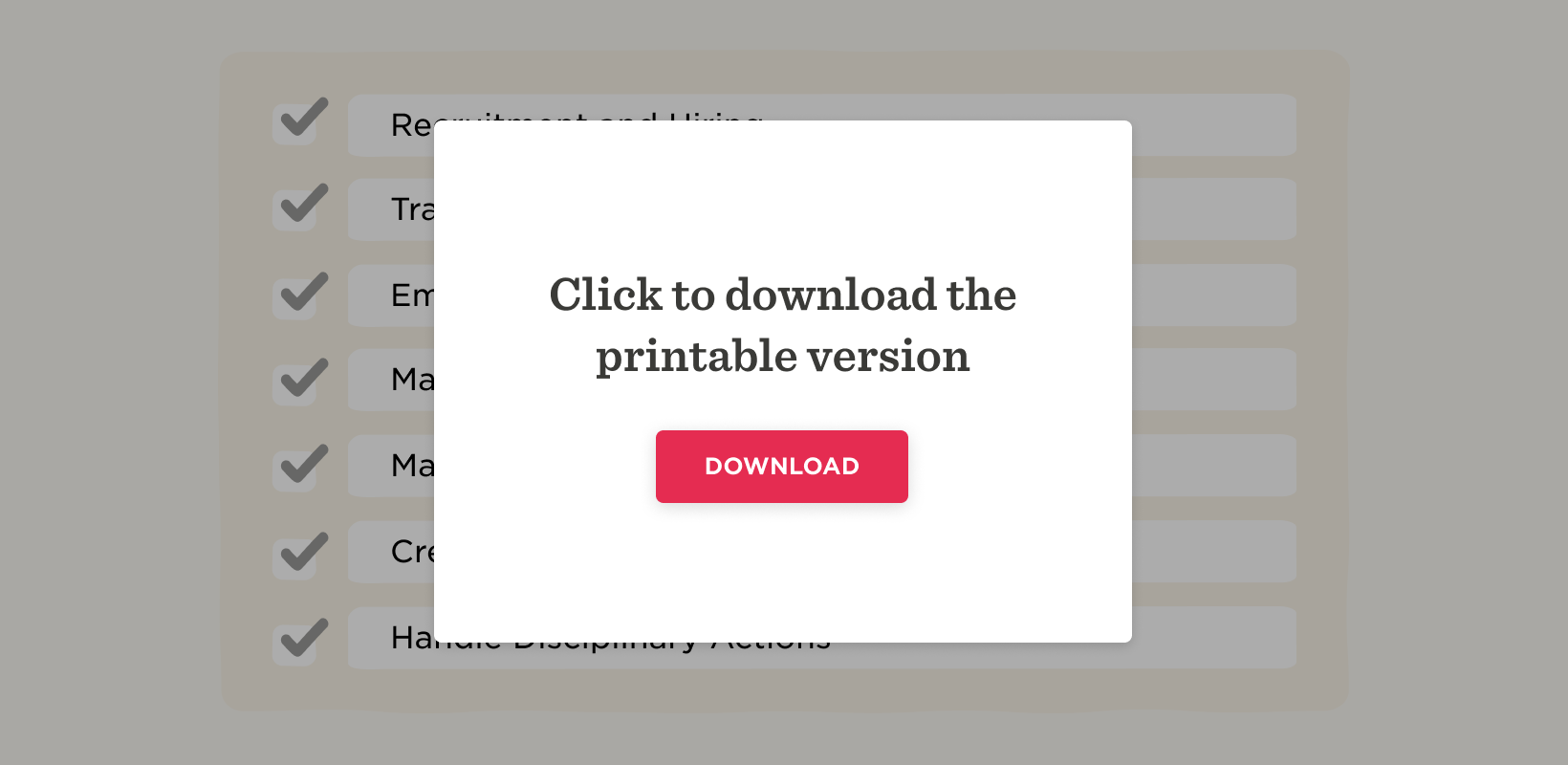
Why is a strategic HR plan important?
Developing a strategic HR plan that connects your HR strategy with your broader business initiatives is invaluable. A strategic HR plan is a document that drives your business forward by evaluating where your workforce is at and comparing it to future needs. It sets out your organizational goals—and outlines how your HR team will help achieve them.
A strategic HR plan requires your company’s HR department to act as a strategic rather than an administrative business function. And it demands HR’s active involvement in wider discussions throughout your business. In short, strategic planning for HR demonstrates how the HR function can support broad organizational initiatives and help your company thrive.
Planning your HR activity in this way and being proactive rather than reactive enables HR professionals to solve significant business challenges—from costly employee turnover to productivity pitfalls. And it helps to achieve organizational goals with strategic recruitment, compensation, talent management, and succession planning.
How to plan your HR strategy
Want to get HR a seat at the table? You need to be strategic. Set aside time to plan out your biggest goals for the year. This way, you can hit the ground running with all the facts, figures, and strategies you need to succeed.
Here’s a checklist to help you structure your strategic HR plan. You’ll need to block out some time to do this effectively, so make sure you allow yourself a few focused hours.
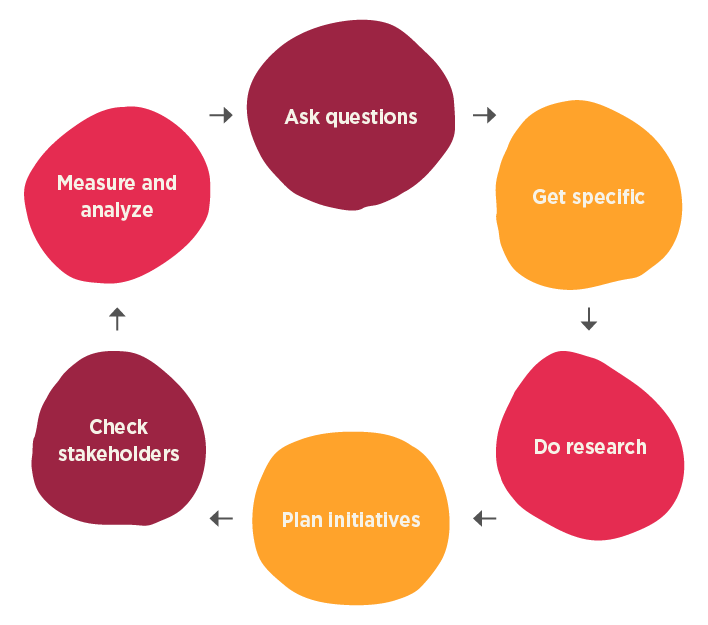
1. Ask the relevant questions
This first step is when you’ll define your priorities for creating an effective strategy that helps you reach your goals. Build a thorough overview of the organization’s challenges, opportunities, and capability gaps to plan how to overcome them during the year.
Ask yourself:
- What capabilities in the business need to be strengthened?
- Will these capabilities be improved through development or by hiring new talent?
- How does culture impact your HR goals ?
- What elements of your culture require bolstering?
- What tools, programs, comms, and strategies will be required to engage the organization at every level?
Gather as many facts and figures as you can, getting specific about teams, job roles, and territories
2. Do research
It’s also important to consider the world beyond your organization, including trends and factors to take into account when considering your strategic plan. This will involve some research via third-party organizations such as government, independent research bodies, and consultancies.
- Any new legal requirements or regulations to consider
- Demographic trends in your territories
- Social and technological changes in the short- and mid-term
- Political movements within your business footprint
- Salary expectations for business-critical roles
3. Plan your initiatives
Based on your priorities and the micro and macro trends, it’s now time to start planning what strategies, projects, and initiatives you’ll put into place to achieve your goals for the year:
- What hiring strategies, development , pipelining, training, and compensation will be required to achieve your goals?
- What external and internal resources will be required to implement your strategies and projects?
- What is the anticipated budget requirement?
4. Check-in with your stakeholders
Often you’ll need buy-in from different parts of the organization to achieve your goals. This means you need to represent to the C-suite what your team’s contributions will be to achieving business goals.
5. Measure and analyze
HR strategies live and die by their data and analytics, so it’s important to rigorously plan out how you intend to capture, measure, and analyze the effectiveness of your strategies to report back to stakeholders.
It could be useful to compare this data to any external data you can find from other organizations, for example, via case studies. Measurement metrics can be collected through the following steps:
- Identifying and measuring KPIs
- Determining the different kinds of data that will need and compare it with? to be gathered, such as qualitative, quantitative, and self-reported from employees and team leaders.
- Establishing how your statistics will be measured. What software or platforms will you gather, measure,and compare it with?
What are the benefits of strategic human resources planning?
Strategic planning for HR syncs your HR strategy with your broader business initiatives.
As an HR professional, taking a strategic approach to planning offers many benefits, like improving levels of engagement within your organization, attracting superior talent, and reducing turnover.
Strategic analysis helps you determine if your people have everything they need to be productive—and identify the need for added resources to enhance productivity where necessary.
Assessing your existing talent and auditing compensation , benefits, work environments, and levels of engagement helps you enact better policies and retain valued talent. And introducing development plans can further support people’s professional growth within your business.
Best practices for implementing an HR strategy
While there isn’t a right or wrong way to build a successful HR strategy, you can follow certain best practices when developing and implementing yours.
- Align your HR strategy to your business needs by activating your people and processes to reach the goals and growth outlined in your business strategy
- Know your budget and focus on strategic initiatives that fit within your organization’s budget
- Identify what success looks like, establish key performance indicators, and track progress against them over the year
- Focus on collaboration and involve your key stakeholders and other business partners across your organization to get their support, buy-in, and sign-off
- Drive engagement through communication and use multiple channels to encourage everyone in your organization to support your HR strategy
- Measure your results in real-time and study what the data tells you to strengthen and reinforce your HR strategy with your stakeholders
- Monitor and adjust your HR strategy over time and revise it to achieve your desired results
Your strategic HR plan template
Practical and actionable—HR professionals can use this strategic HR plan template to ensure their business is well-staffed and well-served.
1. Look at your business—identify what you want to achieve
Start your strategic HR plan by establishing your current state, outlining what you’d like to achieve, and identifying the metrics to get you there. Focus on:
- Clarifying your overarching business strategy and goals
- Identifying the metrics related to your desired outcomes
2. Look at your people—and identify their skill sets
Next, consider your people and their collective performance, productivity, and skill sets. Your HR plan will support your company’s business strategy for the coming year by ensuring a steady stream of skilled people is ready to keep everything on track.
3. Do your people need anything?
A skills gap analysis will help you identify if your people could benefit from additional help, training, or resources to increase their productivity, knowledge, or abilities.
4. Where do you shine?
Assess your work environments and levels of engagement and audit the compensation and benefits you offer. Understanding your current state of where you stand can help you retain the people you value—and compete for new talent in the job market.
5. Grow your talent
Reviewing and understanding your current state allows HR professionals to look at their people, identify anyone ready to grow, and create a talent development plan.
6. Leaving so soon?
Your HR plan supports your company’s business strategy by ensuring a steady stream of skilled people is ready to keep everything on track. If you’re seeing a high talent turnover, now’s the time to investigate what’s happening and why— finding out what’s causing people to leave and addressing the root cause of their unhappiness.
7. Looking ahead
Succession planning can help HR professionals to reduce disruption. Identifying those people who could fill positions if they became vacant can smooth the way for people in the event of a sudden departure from the business.
8. Make data-driven decisions
Use data and analytics to guide your strategic decision-making. You can access a wealth of information by analyzing your compensation history, turnover rates, levels of engagement, and other HR metrics.
9. Where you’re going, why—and how
Developing mission and vision statements can help HR professionals stay on course as they implement a strategic HR plan. Refer to your mission and vision statements to check that you align with the broader business initiatives and connect with your strategic HR plan.
Documenting your strategic HR plan
HR strategy plans can be any length, but it’s helpful when thinking about writing an HR strategic plan to focus on clarity and simplicity so that HR leaders and the wider business can easily refer to the contents.
Try to be concise, relay the facts, and, where possible, use data visualizations to illustrate your point. By documenting your HR strategic plan, you also have a record of where you started and can course-correct where and when necessary as time passes.
Keep your mission and vision statements to hand as you deliver the organizational business goals outlined in your strategic HR plan. Referring to the statements often will ensure you align with the broader corporate strategy as you go.
What does a good HR strategy look like?
While a business strategy outlines how a business will achieve its goals and growth, a good HR strategy creates the internal structures needed to activate people and processes to reach those goals.
VaynerMedia
VaynerMedia is a mid-size marketing and advertising agency based in New York City, with additional offices in Los Angeles, London, Singapore, and Mexico City. The company’s strategy is all about people, putting human beings at the forefront of everything it does—ensuring its ideas and plans are culturally rich and consumer-led.
VaynerMedia approaches strategy with practicality, humility, and empathy and believes the most effective way to drive relevance and growth is by speaking specifically and differently to people based on who they are, by listening and understanding.
VaynerMedia is a perfect example of how an HR strategy can align seamlessly with a company’s broader business goals. Its people are not just its greatest asset—they’re a community. With an HRIS that manages the entire employee lifecycle, VaynerMedia puts its own people front and center and welcomes new hires into its positive culture and inclusive and friendly workplace.
Fiverr’s culture is built around its people-first perspective. The company’s mission is to change how the world works together, and it has fundamentally changed the way businesses and freelancers work with each other.
Fiverr prioritizes the individual members of its community and continuously strives to build an atmosphere of connection and inclusivity. The ‘people company’ loves its team members for who they are and celebrates their diverse backgrounds.
Fiverr’s HR strategy and mindset focus on the personal touch. With an HR team made up of 25 professionals, the company is dedicated to supporting its people. It sought a powerful HRIS to support its people throughout their entire employee lifecycle and provide a friendly and engaging way to communicate with its people worldwide.
Save the Children Italia
For over 100 years, Save the Children has been improving the lives of children and provides emergency aid during times of natural disaster, war, and other conflicts. Save the Children Italia , the organization’s Italian branch, has sites in Rome and Milan and employs 219 permanent employees and 84 temporary workers with fixed-term contracts.
Following a period of growth in headcount and projects, Save the Children Italia decided to implement a modern HR platform to replace their spreadsheets and manual processes, modernize their performance management process, and create a sense of community for their people working remotely and in the field. They were passionate about moving from annual performance reviews to a continuous feedback model and replacing their top-down approach with 360-degree feedback for a more holistic and engaging experience.
At HiBob, we’ve built a modern HR platform designed for modern business needs—today and beyond.
An HR platform such as Bob offers a one-stop shop for all things HR. It sits at the center of your HR ecosystem, is fully customizable, and grows with your organization.
For HR, it delivers automation of many common processes, allows greater oversight and visibility of the business, and centralizes all people data in a secure, user-friendly environment.
For managers, it provides access to data and insights to help them lead more effectively and streamline processes.
For employees, it’s the tools and information they need to connect, develop, and grow throughout their journey.
In a short time, Bob can be deployed to enable communication, collaboration, and connectivity that drives stronger engagement, productivity, and business outcomes.
Choose a language
- Español (España)
Request a demo
Claim your spot today!
By submitting your details you hereby agree to our Terms & Conditions and Privacy Policy . You may always opt-out from our mailing lists in accordance with the Privacy Policy.
Welcome back, !
Tell us a bit about your company..
Pick your ideal time here:
You already have a meeting scheduled.
To reschedule, go to the confirmation email in your inbox and click on the link.
Your form has been submitted.
We're on top of this and will get back to you quickly.
You're all set.
Watch a demo video here.
A demo of Bob is coming your way. Go ahead and watch a demo video here.
Oops, the calendar timed out.
It’s all good. A HiBob expert will contact you soon! Until then, check your inbox for an email with the video.
Sign up here!
Join 50,000 HR leaders who get our monthly newsletter.
You’re in! Can’t wait to read more? Go to our resource center here
Watch a demo
See how Bob can help your company.
Tell us a bit about your company:
Before you watch the video, you can pick a time for an expert to call you:
Your meeting is set
Now, choose your video to start your journey - a quick overview or a strategic run-through.
Choose your adventure
A quick overview or a strategic run-through—your journey starts here!
If you like to dive deeper, watch our 20-minute demo webinar.
Hope you enjoyed the demo. For more, check out how our customers use Bob.
Download your PDF here
Download, print, and follow the steps in this guide to get started.

HR Consulting Business Plan Template
Written by Dave Lavinsky

Human Resources Consulting Business Plan
Over the past 20+ years, we have helped over 1,000 entrepreneurs and business owners create business plans to start and grow their human resources consulting businesses. On this page, we will first give you some background information with regards to the importance of business planning. We will then go through an HR consulting business plan template step-by-step so you can create your plan today.
Download our Ultimate Business Plan Template here >
What is an HR Consulting Business Plan?
A business plan provides a snapshot of your human resources consulting business as it stands today, and lays out your growth plan for the next five years. It explains your business goals and your strategy for reaching them. It also includes market research to support your plans.
Why You Need a Business Plan for an HR Consulting Firm
If you’re looking to start an HR consulting business or grow your existing business, you need to write your own business plan. A business plan will help you raise funding, if needed, and plan out the growth of your HR consulting business in order to improve your chances of success. Your business plan is a living document that should be updated annually as your company grows and changes.
Sources of Funding for Human Resources Consulting Businesses
With regards to funding, the main sources of funding for a human resources consulting business are personal savings, credit cards, bank loans and angel investors. With regards to bank loans, banks will want to review your business plan and gain confidence that you will be able to repay your loan and interest. To acquire this confidence, the lender will not only want to confirm that your financials are reasonable, but they will also want to see a professional plan. Such a plan will give them the confidence that you can successfully and professionally operate a business. Personal savings is the most common form of funding for a human resources consulting business. Personal savings and bank loans are the most common funding paths for HR consulting businesses.
Finish Your Business Plan Today!
If you want to start an HR consulting business or expand your current one, you need a business plan. Below we detail what should be included in your own business plan for an HR consulting firm.
Executive Summary
Your executive summary provides an introduction to your own business plan, but it is normally the last section you write because it provides a summary of each key section of your plan.
The goal of your Executive Summary is to quickly engage the reader. Explain to them the type of HR consulting business you are operating and its status. For example, are you a startup, do you have an HR consulting firm that you would like to grow, or are you operating human resources consulting firms in multiple markets?
Next, provide an overview of each of the subsequent sections of your plan. For example, give a brief overview of the HR consulting industry. Discuss the type of HR consulting business you are operating. Detail your direct competitors. Give an overview of your target customers. Provide a snapshot of your marketing plan. Identify the key members of your team. And offer an overview of your financial plan.
Company Analysis
In your company analysis, you will detail the type of HR consulting business you are operating.
For example, you might operate one of the following types of human resources consulting businesses:
- Human Capital Strategy : this type of business focuses on strategic matters such as corporate culture, diversity, and organization design.
- Compensation & Benefits: this type of business involves analyzing and consulting on all aspects of employee compensation, from base pay to secondary benefits, as well as pension and retirement.
- Talent Management: this type of business focuses primarily on recruitment and retention of talent, as well as on talent development.
- Professional Development: this type of business offers services ranging from leadership coaching and development to developing learning management systems.
In addition to explaining the type of HR consulting business you will operate, the Company Analysis section of your business plan needs to provide background on the business.
Include answers to questions such as:
- When and why did you start the business?
- What milestones have you achieved to date? Milestones could include the number of websites launched, the types of sites developed, etc.
- Your legal structure. Are you incorporated as an S-Corp? An LLC? A sole proprietorship? Explain your legal structure here.
Industry Analysis
In your industry analysis, you need to provide an overview of the HR industry.
While this may seem unnecessary, it serves multiple purposes.
First, researching the HR industry educates you. It helps you understand the market in which you are operating.
Secondly, market research can improve your strategy, particularly if your research identifies market trends.
The third reason for market research is to prove to readers that you are an expert in your industry. By conducting the research and presenting it in your plan, you achieve just that.
The following questions should be answered in the industry analysis section of your HR consulting business plan:
- How big is the human resources industry (in dollars)?
- Is the market declining or increasing?
- Who are the key competitors in the market?
- Who are the key suppliers in the market?
- What trends are affecting the industry?
- What is the industry’s growth forecast over the next 5 – 10 years?
- What is the relevant market size? That is, how big is the potential market for your human resources consulting business? You can extrapolate such a figure by assessing the size of the market in the entire country and then applying that figure to your local population.
Customer Analysis
The customer analysis section of your HR consulting business plan must detail the customers you serve and/or expect to serve.
The following are examples of customer segments: financial services companies, government entities, healthcare institutions, and technology companies.
As you can imagine, the customer segment(s) you choose will have a great impact on the type of human resource consulting business you operate. Clearly, government entities would respond to different marketing promotions than technology companies, for example.
Try to break out your target customers in terms of their demographic and psychographic profiles. With regards to demographics, include a discussion of the ages, genders, locations, and income levels of the customers you seek to serve. Because most HR consulting businesses primarily serve customers living in the same city or town, such demographic information is easy to find on government websites.
Psychographic profiles explain the wants and needs of your target customers. The more you can understand and define these needs, the better you will do in attracting and retaining your customers.
Finish Your HR Consulting Business Plan in 1 Day!
Don’t you wish there was a faster, easier way to finish your business plan?
With Growthink’s Ultimate Business Plan Template you can finish your plan in just 8 hours or less!
Competitive Analysis
Your competitive analysis should identify the indirect and direct competitors your business faces and then focus on the latter.
Direct competitors are other human resource consulting firms.
Indirect competitors are other options that customers have to purchase from that aren’t direct competitors. This includes more generalized management consultants or dedicated in-house HR teams.
With regards to direct competition, you want to describe the other HR consulting businesses with which you compete. Most likely, your direct competitors will be human resource consulting businesses located very close to your location.

For each such competitor, provide an overview of their businesses and document their strengths and weaknesses. Unless you once worked at your competitors’ businesses, it will be impossible to know everything about them. But you should be able to find out key things about them such as:
- What types of customers do they serve?
- Do they specialize in specific industries (i.e. healthcare, technology, etc.)?
- What is their pricing (premium, low, etc.)?
- What are they good at?
- What are their weaknesses?
With regards to the last two questions, think about your answers from the customers’ perspective. And don’t be afraid to ask your competitors’ customers what they like most and least about them.
The final part of your competitive analysis section is to document your areas of competitive advantage. For example:
- Will you provide either a wider range or more specialized range of services?
- Will you offer virtual service options?
- Will you provide superior customer service?
- Will you offer better pricing?
Think about ways you will outperform your competition and document them in this section of your plan.
Marketing Plan
Traditionally, a marketing plan includes the four P’s: Product, Price, Place, and Promotion. For an human resource consulting business, your marketing plan should include the following:
Product : In the product section, you should reiterate the type of HR consulting company that you documented in your Company Analysis. Then, detail the specific products you will be offering. For example, in addition to strategic consulting, will your HR consulting business provide compliance consulting?
Price : Document the prices you will offer and how they compare to your competitors. Essentially in the product and price sub-sections of your marketing plan, you are presenting the services you offer and their prices.
Place : Place refers to the location of your company. Document your location and mention how the location will impact your success. For example, will you operate from a physical office, or will you primarily interact with clients online and/or at their place of business? In this section, discuss how your location will affect the demand for your services.
Promotions : The final part of your marketing plan is the promotions section. Here you will document how you will drive customers to your location(s). The following are some promotional methods you might consider:
- Advertising in local papers and magazines
- Reaching out to local websites
- Signs and billboards
- Social media marketing
- Local radio advertising
Operations Plan
While the earlier sections of your business plan explained your goals, your operations plan describes how you will meet them. Your operations plan should have two distinct sections as follows.
Everyday short-term processes include all of the tasks involved in running your HR consulting business, including marketing, providing consultations, building analytics processes, developing and presenting recommendations, etc.
Long-term goals are the milestones you hope to achieve. These could include the dates when you expect to sign your 50 th consulting contract, or when you hope to reach $X in revenue. It could also be when you expect to open an HR consulting business in a new location.
Management Team
To demonstrate your HR consulting business’ ability to succeed, a strong management team is essential. Highlight your key players’ backgrounds, emphasizing those skills and experiences that prove their ability to grow your business.
Ideally you and/or your team members have direct experience in human resources and/or managing HR consulting businesses. If so, highlight this experience and expertise. But also highlight any experience that you think will help your business succeed.
If your team is lacking, consider assembling an advisory board. An advisory board would include 2 to 8 individuals who would act like mentors to your business. They would help answer questions and provide strategic guidance. If needed, look for advisory board members with experience in Human Resources, or successfully running small businesses.
Financial Plan
Your financial plan should include your 5-year financial statement broken out both monthly or quarterly for the first year and then annually. Your financial statements include your income statement, balance sheet and cash flow statements.

In developing your income statement, you need to devise assumptions. For example, will you focus on one client at a time, or will you have teams working on multiple projects at once? And will sales grow by 2% or 10% per year? As you can imagine, your choice of assumptions will greatly impact the financial forecasts for your business. As much as possible, conduct research to try to root your assumptions in reality.
Balance Sheets : Balance sheets show your assets and liabilities. While balance sheets can include much information, try to simplify them to the key items you need to know about. For instance, if you spend $50,000 on building out your business, this will not give you immediate profits. Rather it is an asset that will hopefully help you generate profits for years to come. Likewise, if a bank writes you a check for $50,000, you don’t need to pay it back immediately. Rather, that is a liability you will pay back over time.

In developing your Income Statement and Balance Sheets be sure to include several of the key costs needed in starting or growing an hr consulting business:
- Office build-out
- Cost of buying or leasing a company vehicle
- Cost of office supplies such as computers and software
- Payroll or salaries paid to staff
- Business insurance
- Taxes and permits
- Legal expenses
Attach your full financial projections in the appendix of your plan along with any supporting documents that make your plan more compelling. For example, you might include your office lease, any notable clients you’ve served, or an overview of the services you offer.
Putting together a business plan for your HR consulting business is a worthwhile endeavor. If you follow the template above, by the time you are done, you will have an expert HR consulting business plan; download it to PDF to show banks and investors. You will really understand the HR industry, your competition, and your customers. You will have developed a marketing plan and will really understand what it takes to launch and grow a successful HR consulting business.
Don’t you wish there was a faster, easier way to finish your HR Consulting business plan?
OR, Let Us Develop Your Plan For You
Since 1999, Growthink has developed business plans for thousands of companies who have gone on to achieve tremendous success. Click here to learn about Growthink’s business plan writing service .
Other Helpful Business Plan Articles & Templates

HR Consulting Business plan Template
Written by Dave Lavinsky
HR Consulting Business Plan
You’ve come to the right place to create your Human Resources Consulting business plan.
We have helped over 1,000 entrepreneurs and business owners create business plans and many have used them to start or grow their HR Consulting businesses.
Below is a template to help you create each section of your Human Resource business plan.
Executive Summary
Business overview.
HR Solutions is a startup human resources company located in Spokane, Washington. The company is founded by Tremaine Jackson, a former human resources manager in a large retail company. Tremaine led a team of twenty human resources employees in overseeing all aspects of human resources for the employer and developed a unique application that he has decided to introduce in his new company, HR Solutions.
HR Solutions will be the comprehensive leader in human resource training, management, negotiations, and solutions-finding company in the state of Washington. They will provide everything human resource personnel need to hire and effectively onboard new employees, as well as everything needed to maintain proper records, effectively cover communication and employee relations, and become proactive about potential conflicts.
Product Offering
The following are the services that HR Solutions will provide:
- Proprietary app that creates comprehensive HR management plans
- Training to maximize personnel potential
- Assistance in compliance with laws and regulations
- Curated HR solutions to solve employee issues
- Assistance in establishing productive work environments
- Onboarding from A to Z
- “Support Cadre” for HR management personnel
- Recruitment and talent acquisition training
- Organizational process-and-procedure manual
Customer Focus
HR Solutions will target small-to-large businesses in the Spokane, Washington region. HR Solutions will also target Washington state with select online training programs and sales of the proprietary HR app. HR Solutions will target C-suite executives in Spokane.
Management Team
HR Solutions will be owned and operated by Tremaine Jackson. He recruited his former administrative assistant, Sharlene Harris, to be his Administrative Manager in HR Solutions, where she will provide oversight of all personnel and HR responsibilities within the company itself. He also recruited Mason Wright, a former associate and HR manager, to be the Senior HR Advisor within the startup; he will lead the other HR managers in their roles as client-focused solution providers.
Tremaine Jackson is a graduate of the University of Washington in Seattle, where he majored in Human Resource Development. He has been a human resources manager in a large retail company, where he led a team of twenty human resources employees in overseeing all aspects of human resources for his employer and he developed a unique application that he has decided to introduce in his new company, HR Solutions. Former clients and associates have indicated they will follow him when he establishes HR Solutions.
Sharlene Harris holds a bachelor’s degree in Business Administration from Spokane College. She has been Tremaine’s administrative assistant for ten years and her new role will be the Administrative Manager in HR Solutions. She will provide oversight of all personnel and HR responsibilities within the company itself.
Mason Wright, a former associate and HR manager, developed a large following of loyal clients. He will be the Senior HR Advisor within the startup; he will lead the other HR managers in their roles as client-focused solution providers. His clients have indicated that they will follow him into the startup business.
Success Factors
HR Solutions will be able to achieve success by offering the following competitive advantages:
- Friendly, knowledgeable, and highly-qualified team of HR Solutions
Financial Highlights
HR Solutions is seeking $200,000 in debt financing to launch HR Solutions. The funding will be dedicated toward securing the office space and purchasing office equipment and supplies. Funding will also be dedicated toward three months of overhead costs to include payroll of the staff, rent, and marketing costs for the print ads and marketing costs. The breakout of the funding is below:
- Office space build-out: $20,000
- Office equipment, supplies, and materials: $10,000
- Three months of overhead expenses (payroll, rent, utilities): $150,000
- Marketing costs: $10,000
- Working capital: $10,000
The following graph outlines the financial projections for HR Solutions.
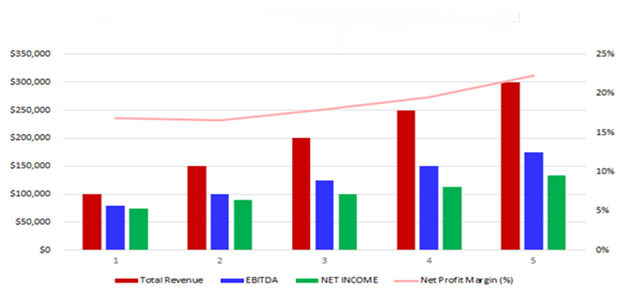
Company Overview
Who is hr solutions.
HR Solutions is a newly established, full-service human resource company in Spokane, Washington. HR Solutions will be the most reliable, cost-effective, and effective choice for HR managers and leaders in Spokane. Certain online programs and the proprietary app will also be the most effective and productive options for HR personnel throughout the state of Washington. HR Solutions will provide a comprehensive menu of training, recruitment, personnel, solution-finding services for any company to utilize. Their full-service approach includes a comprehensive set of training, management, and solution options.
HR Solutions will be able to provide superior HR support and solutions to every business. The team of professionals are highly qualified and experienced in onboarding, training and creating solutions for every human resource quandary. HR Solutions removes all headaches and issues of the human resource personnel and ensures clients find the best answers to all their HR needs with the outstanding customer service found at HR Solutions.
HR Solutions History
HR Solutions is owned and operated by Tremaine Jackson. Tremaine Jackson is a graduate of the University of Washington in Seattle, where he majored in Human Resource Development. He has been a human resources manager in a large retail company, where he led a team of twenty human resources employees in overseeing all aspects of human resources for his employer and he developed a unique application that he has decided to introduce in his new company, HR Solutions. Former clients and associates have indicated they will follow him when he establishes HR Solutions.
Since incorporation, HR Solutions has achieved the following milestones:
- Registered HR Solutions, LLC to transact business in the state of Washington.
- Has a contract in place for a 20,000 square foot office space within a downtown Spokane building.
- Reached out to numerous former clients and contacts to include those who will refer and recommend HR Solutions.
- Began recruiting a staff of ten HR managers and three office personnel to work at HR Solutions.
HR Solutions Services
The following will be the services HR Solutions will provide:
Industry Analysis
The human resources industry is expected to grow during the next five years to over $35 billion. The growth will be driven by an increased number of young employees who require extensive training and onboarding. The growth will be driven by an increased need for employees as the older demographic employee retires. The growth will be driven by an increase in the number of employees who are new to the U.S. and require assistance in onboarding and training. The growth will be driven by new technological advances that are not yet known. Costs will likely be reduced as new applications, such as the one created by HR Solutions, are created and introduced into the industry.
Customer Analysis
Demographic profile of target market.
| Total | Percent | |
|---|---|---|
| Total population | 1,680,988 | 100% |
| Male | 838,675 | 49.9% |
| Female | 842,313 | 50.1% |
| 20 to 24 years | 114,872 | 6.8% |
| 25 to 34 years | 273,588 | 16.3% |
| 35 to 44 years | 235,946 | 14.0% |
| 45 to 54 years | 210,256 | 12.5% |
| 55 to 59 years | 105,057 | 6.2% |
| 60 to 64 years | 87,484 | 5.2% |
| 65 to 74 years | 116,878 | 7.0% |
| 75 to 84 years | 52,524 | 3.1% |
Customer Segmentation
HR Solutions will primarily target the following customer profiles:
- Small-to-large businesses in the Spokane region
- Small-to-large businesses throughout Washington (select programs/app)
- C-suite executives in Spokane
Competitive Analysis
Direct and indirect competitors.
HR Solutions will face competition from other companies with similar business profiles. A description of each competitor company is below.
Human Resource RX
Human Resource RX was founded in 2005 by Reme and Janette Choux. As former human resource negotiators within a large firm, they developed distinctive programs that can help HR managers reduce conflicts in the workplace. In addition, the programs assist personnel in recuperating from workplace trauma and other difficulties or issues that arise in the office.
Human Resource RX, headquartered in Spokane, claims to be the “Best HR Prescription” for companies that require assistance in the form of management and oversight in trauma or difficulty. Human Resource RX also assists in compliance issues within the state of Washington, bringing expert advice into thorny issues that can potentially lead to litigation. The company has three offices throughout Washington, each with a staff of twelve “HR managers” who service local businesses. The company has maintained a good standing within the state of Washington, although there have been two separate issues of incorrect legal advice offered to clients. The matters were both brought by former clients to the court system and eventually resolved.
Premier Human Resource Associates
Premier Human Resource Associates is owned and operated by Tami Watson, an HR executive with over thirty years of experience. She is joined in the company by her daughter, Reyna Watson, a recent graduate of Spokane College, where she earned a bachelor’s degree in Communication. Premier Human Resource Associates is located in Spokane and offers an extensive onboarding and training program to support HR managers within local hospitals and medical clinics.
The bulk of services provided to HR managers includes various specific onboarding and training needs of nurses, LVNs, and other care providers. Attention is given in particular to the processes of sanitation and hygienic practices, along with the methods of communication used within these specific businesses. To date, the company has assisted in successfully onboarding over 5,000 nurses and other caregivers.
Transport HR Training
Transport HR Training was started in 1997 as a result of multiple difficult issues within the truck driving industry in Washington. In the decades since, Transport HR Training has established the full spectrum of services and products for HR associates in the long-haul and short-transport businesses. Specific practices and procedures relating to, in particular, medical issues of drivers, have been developed to smooth the HR process and align truck drivers with services they need. Transport HR Training offers a comprehensive package of services that includes negotiation in conflict, onboarding specifics, driver training, legal procedures and processes, and other truck driver-specific conditions.
Competitive Advantage
HR Solutions will be able to offer the following advantages over their competition:
Marketing Plan
Brand & value proposition.
HR Solutions will offer the unique value proposition to its clientele:
Promotions Strategy
The promotions strategy for HR Solutions is as follows:
Word of Mouth/Referrals
HR Solutions has built up an extensive list of clients and contacts over the years by providing exceptional service and expertise to their clients. Associates will follow them to their new company and help spread the word of HR Solutions.
Professional Associations and Networking
HR Solutions will extensively network throughout HR association and industry events. They will take an active role in leadership wherever invited to do so and will work to support the efforts of all associates or members.
Website/SEO Marketing
HR Solutions will fully utilize their website. The website will be well organized, informative, and list all the services that HR Solutions provides. The website will also list their contact information and list their available times to make reservations during the week. This will allow HR managers to speak with HR Solutions when most beneficial to the client. The website presence will engage SEO marketing tactics so that anytime someone types in the Google or Bing search engine “Human Resources company” or “HR near me”, HR Solutions will be listed at the top of the search results.
The pricing of HR Solutions will be moderate and on par with competitors so customers feel they receive excellent value when purchasing their services.
Operations Plan
The following will be the operations plan for HR Solutions. Operation Functions:
- Tremaine Jackson will be the Owner and President of the company. He will oversee all staff and manage client relations. He has spent the past year recruiting the following staff:
Milestones:
HR Solutions will have the following milestones completed in the next six months.
- 5/1/202X – Finalize contract to lease office space
- 5/15/202X – Finalize personnel and staff employment contracts for the HR Solutions
- 6/1/202X – Finalize contracts for new HR Solutions clients
- 6/15/202X – Begin networking at industry events
- 6/22/202X – Begin moving into HR Solutions office
- 7/1/202X – HR Solutions opens its office for business
Financial Plan
Key revenue & costs.
The revenue drivers for HR Solutions are the fees they will charge to clients for their services, online training and proprietary app.
The cost drivers will be the overhead costs required in order to staff HR Solutions. The expenses will be the payroll cost, rent, utilities, office supplies, and marketing materials.
Funding Requirements and Use of Funds
HR Solutions is seeking $200,000 in debt financing to launch its human resources company. The funding will be dedicated toward securing the office space and purchasing office equipment and supplies. Funding will also be dedicated toward three months of overhead costs to include payroll of the staff, rent, and marketing costs for the print ads and association memberships. The breakout of the funding is below:
Key Assumptions
The following outlines the key assumptions required in order to achieve the revenue and cost numbers in the financials and in order to pay off the startup business loan.
- Number of Clients Per Month: 40
- Average Revenue per Month: $80,000
- Office Lease per Year: $100,000
Financial Projections
Income statement.
| FY 1 | FY 2 | FY 3 | FY 4 | FY 5 | ||
|---|---|---|---|---|---|---|
| Revenues | ||||||
| Total Revenues | $360,000 | $793,728 | $875,006 | $964,606 | $1,063,382 | |
| Expenses & Costs | ||||||
| Cost of goods sold | $64,800 | $142,871 | $157,501 | $173,629 | $191,409 | |
| Lease | $50,000 | $51,250 | $52,531 | $53,845 | $55,191 | |
| Marketing | $10,000 | $8,000 | $8,000 | $8,000 | $8,000 | |
| Salaries | $157,015 | $214,030 | $235,968 | $247,766 | $260,155 | |
| Initial expenditure | $10,000 | $0 | $0 | $0 | $0 | |
| Total Expenses & Costs | $291,815 | $416,151 | $454,000 | $483,240 | $514,754 | |
| EBITDA | $68,185 | $377,577 | $421,005 | $481,366 | $548,628 | |
| Depreciation | $27,160 | $27,160 | $27,160 | $27,160 | $27,160 | |
| EBIT | $41,025 | $350,417 | $393,845 | $454,206 | $521,468 | |
| Interest | $23,462 | $20,529 | $17,596 | $14,664 | $11,731 | |
| PRETAX INCOME | $17,563 | $329,888 | $376,249 | $439,543 | $509,737 | |
| Net Operating Loss | $0 | $0 | $0 | $0 | $0 | |
| Use of Net Operating Loss | $0 | $0 | $0 | $0 | $0 | |
| Taxable Income | $17,563 | $329,888 | $376,249 | $439,543 | $509,737 | |
| Income Tax Expense | $6,147 | $115,461 | $131,687 | $153,840 | $178,408 | |
| NET INCOME | $11,416 | $214,427 | $244,562 | $285,703 | $331,329 |
Balance Sheet
| FY 1 | FY 2 | FY 3 | FY 4 | FY 5 | ||
|---|---|---|---|---|---|---|
| ASSETS | ||||||
| Cash | $154,257 | $348,760 | $573,195 | $838,550 | $1,149,286 | |
| Accounts receivable | $0 | $0 | $0 | $0 | $0 | |
| Inventory | $30,000 | $33,072 | $36,459 | $40,192 | $44,308 | |
| Total Current Assets | $184,257 | $381,832 | $609,654 | $878,742 | $1,193,594 | |
| Fixed assets | $180,950 | $180,950 | $180,950 | $180,950 | $180,950 | |
| Depreciation | $27,160 | $54,320 | $81,480 | $108,640 | $135,800 | |
| Net fixed assets | $153,790 | $126,630 | $99,470 | $72,310 | $45,150 | |
| TOTAL ASSETS | $338,047 | $508,462 | $709,124 | $951,052 | $1,238,744 | |
| LIABILITIES & EQUITY | ||||||
| Debt | $315,831 | $270,713 | $225,594 | $180,475 | $135,356 | |
| Accounts payable | $10,800 | $11,906 | $13,125 | $14,469 | $15,951 | |
| Total Liability | $326,631 | $282,618 | $238,719 | $194,944 | $151,307 | |
| Share Capital | $0 | $0 | $0 | $0 | $0 | |
| Retained earnings | $11,416 | $225,843 | $470,405 | $756,108 | $1,087,437 | |
| Total Equity | $11,416 | $225,843 | $470,405 | $756,108 | $1,087,437 | |
| TOTAL LIABILITIES & EQUITY | $338,047 | $508,462 | $709,124 | $951,052 | $1,238,744 |
Cash Flow Statement
| FY 1 | FY 2 | FY 3 | FY 4 | FY 5 | ||
|---|---|---|---|---|---|---|
| CASH FLOW FROM OPERATIONS | ||||||
| Net Income (Loss) | $11,416 | $214,427 | $244,562 | $285,703 | $331,329 | |
| Change in working capital | ($19,200) | ($1,966) | ($2,167) | ($2,389) | ($2,634) | |
| Depreciation | $27,160 | $27,160 | $27,160 | $27,160 | $27,160 | |
| Net Cash Flow from Operations | $19,376 | $239,621 | $269,554 | $310,473 | $355,855 | |
| CASH FLOW FROM INVESTMENTS | ||||||
| Investment | ($180,950) | $0 | $0 | $0 | $0 | |
| Net Cash Flow from Investments | ($180,950) | $0 | $0 | $0 | $0 | |
| CASH FLOW FROM FINANCING | ||||||
| Cash from equity | $0 | $0 | $0 | $0 | $0 | |
| Cash from debt | $315,831 | ($45,119) | ($45,119) | ($45,119) | ($45,119) | |
| Net Cash Flow from Financing | $315,831 | ($45,119) | ($45,119) | ($45,119) | ($45,119) | |
| Net Cash Flow | $154,257 | $194,502 | $224,436 | $265,355 | $310,736 | |
| Cash at Beginning of Period | $0 | $154,257 | $348,760 | $573,195 | $838,550 | |
| Cash at End of Period | $154,257 | $348,760 | $573,195 | $838,550 | $1,149,286 |
Human Resource Business Plan FAQs
What is a human resource business plan.
A human resource business plan is a plan to start and/or grow your human resource business. Among other things, it outlines your business concept, identifies your target customers, presents your marketing plan and details your financial projections.
You can easily complete your Human Resource business plan using our Human Resource Business Plan Template here .
What are the Main Types of Human Resource Businesses?
There are a number of different kinds of human resource businesses , some examples include: Human Capital Strategy, Compensation & Benefits, Talent Management, and Professional Development.
How Do You Get Funding for Your Human Resource Business Plan?
Human Resource businesses are often funded through small business loans. Personal savings, credit card financing and angel investors are also popular forms of funding.
What are the Steps To Start a Human Resource Business?
Starting a human resource business can be an exciting endeavor. Having a clear roadmap of the steps to start a business will help you stay focused on your goals and get started faster.
1. Develop A Human Resource Business Plan - The first step in starting a business is to create a detailed human resource business plan that outlines all aspects of the venture. This should include potential market size and target customers, the services or products you will offer, pricing strategies and a detailed financial forecast.
2. Choose Your Legal Structure - It's important to select an appropriate legal entity for your human resource business. This could be a limited liability company (LLC), corporation, partnership, or sole proprietorship. Each type has its own benefits and drawbacks so it’s important to do research and choose wisely so that your human resource business is in compliance with local laws.
3. Register Your Human Resource Business - Once you have chosen a legal structure, the next step is to register your human resource business with the government or state where you’re operating from. This includes obtaining licenses and permits as required by federal, state, and local laws.
4. Identify Financing Options - It’s likely that you’ll need some capital to start your human resource business, so take some time to identify what financing options are available such as bank loans, investor funding, grants, or crowdfunding platforms.
5. Choose a Location - Whether you plan on operating out of a physical location or not, you should always have an idea of where you’ll be based should it become necessary in the future as well as what kind of space would be suitable for your operations.
6. Hire Employees - There are several ways to find qualified employees including job boards like LinkedIn or Indeed as well as hiring agencies if needed – depending on what type of employees you need it might also be more effective to reach out directly through networking events.
7. Acquire Necessary Human Resource Equipment & Supplies - In order to start your human resource business, you'll need to purchase all of the necessary equipment and supplies to run a successful operation.
8. Market & Promote Your Business - Once you have all the necessary pieces in place, it’s time to start promoting and marketing your human resource business. This includes creating a website, utilizing social media platforms like Facebook or Twitter, and having an effective Search Engine Optimization (SEO) strategy. You should also consider traditional marketing techniques such as radio or print advertising.
Don't bother with copy and paste.
Get this complete sample business plan as a free text document.
Human Resources Consulting Business Plan
Start your own human resources consulting business plan
Human Capital Maximizers
Executive summary executive summary is a brief introduction to your business plan. it describes your business, the problem that it solves, your target market, and financial highlights.">.
Human Capital Maximizers (HCM) is a human resource consulting company located in Portland, Oregon. HCM has expertise in a wide range of HR areas and is targeting the emerging company market. HCM will offer this market the ability to compensate client’s employees with stock options from their company. This will be especially appealing to many start-up companies that find capital scarce.
Major Adversity, the founder and owner will be leveraging his past and current personal/professional relationships to generate business for Human Capital Maximizers. Major will be the sole employee until month six when he will be hiring a human resource specialist/manager to help out with the consulting. Human Capital Maximizers will show increasing profitability over the next three years.

1.1 Keys to Success
The keys to success are to provide a needed service while providing a flexible means of compensation.
1.2 Mission
Human Capital Maximizers’ mission is to provide human resource consulting for emerging companies. We exist to attract and maintain customers. When we adhere to this maxim, everything else will fall into place. Our services will exceed the expectations of our customers.
1.3 Objectives
The objectives for the first three years of operation include:
- To create a service-based company whose primary goal is to exceed customer’s expectations.
- To increase our number of clients served by 20% per year through superior performance and word-of-mouth referrals.
- To develop a sustainable start-up consultancy firm that can survive off its own cash flow and has significant equity holdings in emerging companies.
Company Summary company overview ) is an overview of the most important points about your company—your history, management team, location, mission statement and legal structure.">
Human Capital Maximizers is a HR consultancy firm serving the Portland area market. HCM will be set up as an Oregon Corporation owned by Major Adversity and will focus on emerging companies.
2.1 Company Ownership
Human Capital Maximizers is a privately held Oregon corporation founded and owned by Major Adversity.
2.2 Start-up Summary
Human Capital Maximizers will incur the following start-up expenses:
- Two desks, two chairs, and two lockable file cabinets.
- Two computer systems including a CD-RW, printer and a third computer to serve as a server.
- DSL router and DSL connections.
- Two telephones, fax machine, and copier.
Please note that the following items which are considered assets to be used for more than a year will labeled long-term assets and will be depreciated using G.A.A.P. approved straight-line depreciation method.

| Start-up | |
| Requirements | |
| Start-up Expenses | |
| Legal | $1,000 |
| Stationery etc. | $150 |
| Website development | $0 |
| Other | $0 |
| Total Start-up Expenses | $1,150 |
| Start-up Assets | |
| Cash Required | $10,050 |
| Other Current Assets | $0 |
| Long-term Assets | $4,800 |
| Total Assets | $14,850 |
| Total Requirements | $16,000 |
| Start-up Funding | |
| Start-up Expenses to Fund | $1,150 |
| Start-up Assets to Fund | $14,850 |
| Total Funding Required | $16,000 |
| Assets | |
| Non-cash Assets from Start-up | $4,800 |
| Cash Requirements from Start-up | $10,050 |
| Additional Cash Raised | $0 |
| Cash Balance on Starting Date | $10,050 |
| Total Assets | $14,850 |
| Liabilities and Capital | |
| Liabilities | |
| Current Borrowing | $0 |
| Long-term Liabilities | $0 |
| Accounts Payable (Outstanding Bills) | $0 |
| Other Current Liabilities (interest-free) | $0 |
| Total Liabilities | $0 |
| Capital | |
| Planned Investment | |
| Major | $16,000 |
| Investor 2 | $0 |
| Other | $0 |
| Additional Investment Requirement | $0 |
| Total Planned Investment | $16,000 |
| Loss at Start-up (Start-up Expenses) | ($1,150) |
| Total Capital | $14,850 |
| Total Capital and Liabilities | $14,850 |
| Total Funding | $16,000 |
Human Capital Maximizers provides human resource consulting to emerging companies in the Portland/Vancouver market. Human Capital Maximizers will charge a below market rate and take stock options in the company. Human Capital Maximizers will provide consulting for the following service areas:
- Human resource management.
- Organizational management.
- Professional development.
- Employee relations.
- Labor relations.
- Benefits and compensation.
- HR policy and procedure.
- Executive search.
- Sexual harassment.
- Position classification.
- Personnel management systems.
- Performance evaluations.
The pricing structure will either be an hourly rate or a per project fee. These options will be settled on in negotiation with the client. In general, Human Capital Maximizers is willing to be as flexible as possible.
Market Analysis Summary how to do a market analysis for your business plan.">
Emerging companies will be the target market for several reasons:
- They are in need of HR services as they are growing rapidly.
- They often do not have a large enough in-house solution as they are increasing in size.
- Capital is a scarce resource for emerging companies so the ability to accept stock options in replace of cash is appealing.
The emerging company market can be further broken down into two categories, technology and non-technology. The significance of the breakdown is not that significant because many of the networking activities are occurring in settings that do not differentiate between technology and non-technology.
4.1 Market Segmentation
Human Capital Maximizers market can be segmented into two different groups, emerging high-tech companies and emerging non-high tech companies. The emerging high-tech companies are going to be the larger of the two segments. Even with the Internet bubble bursting within the last year, there are still many different emerging high-tech companies proliferating. This is evidenced by the Business Journal of Portland which in their annual list of fastest growing companies for this year, 18 of the top 25 were technology companies.
There are also non-technology companies that are emerging in the Portland area and Human Capital Maximizers will be able to serve them as well.

| Market Analysis | |||||||
| Year 1 | Year 2 | Year 3 | Year 4 | Year 5 | |||
| Potential Customers | Growth | CAGR | |||||
| Emerging technology companies | 10% | 345 | 380 | 418 | 460 | 506 | 10.05% |
| Emerging non-technology companies | 9% | 225 | 245 | 267 | 291 | 317 | 8.95% |
| Other | 0% | 0 | 0 | 0 | 0 | 0 | 0.00% |
| Total | 9.62% | 570 | 625 | 685 | 751 | 823 | 9.62% |
4.2 Target Market Segment Strategy
Human Capital Maximizers’ two markets will be primarily targeted through networking activities. Some networking will be conducted through the Oregon Entrepreneur Association, an association that supports entrepreneurial ventures in the local area. This organization has monthly meetings that are in round-table format, allowing members to socialize.
Human Capital Maximizers will also be networking from personal/professional contacts that Major has developed professionally in the last five years in the HR/start-up industry. HCM will also be relying on word of mouth to grow its customer base.
Strategy and Implementation Summary
Human Capital Maximizers will use their competitive edge of compensation flexibility to attract emerging companies. This competitive advantage is especially valuable to emerging companies who are typically struggling to find enough capital to grow their business. Accepting stock options as compensation is useful because equity is one thing these companies have lots of (that is of course if they haven’t given it all away to the Venture Capitalists).
5.1 Milestones
Human Capital Maximizers will have several milestones early on:
- Business plan completion. This will be done as a roadmap for the organization. This will be an indispensable tool for the ongoing performance and improvement of the company.
- Set up office.
- HCM’s first five customers.
- Profitability.
| Milestones | |||||
| Milestone | Start Date | End Date | Budget | Manager | Department |
| Business plan completion | 1/1/2001 | 2/1/2001 | $0 | ABC | Marketing |
| Set up office | 1/1/2001 | 2/1/2001 | $0 | ABC | Department |
| HCM’s first five customers | 1/1/2001 | 3/31/2001 | $0 | ABC | Department |
| Profitability | 1/1/2001 | ****** | $0 | ABC | Department |
| Totals | $0 | ||||
5.2 Sales Strategy

Major will also be able to speak about Human Capital Maximizers ability to accept options in lieu of cash. This will be appealing to companies, particularly in the current capital market which is quite scarce. Since capital is more difficult to come by now than in the last few years, emerging companies will be excited about this option.
5.2.1 Sales Forecast
The first month will be used to set up the office. Additionally, during the first month Major will be working hard on developing contracts. The second month will see some activity, but it will not be until month six when business will be picking up at a higher rate. Sales will continue to grow through year three.

| Sales Forecast | |||
| Year 1 | Year 2 | Year 3 | |
| Sales | |||
| Emerging technology companies | $41,500 | $78,455 | $92,541 |
| Emerging non-technology companies | $16,600 | $31,382 | $37,016 |
| Total Sales | $58,100 | $109,837 | $129,557 |
| Direct Cost of Sales | Year 1 | Year 2 | Year 3 |
| Emerging technology companies | $2,075 | $3,923 | $4,627 |
| Emerging non-technology companies | $830 | $1,569 | $1,851 |
| Subtotal Direct Cost of Sales | $2,905 | $5,492 | $6,478 |
5.3 Competitive Edge
Human Capital Maximizers competitive edge is their flexibility for compensation. Most or all other companies require compensation to be in the form of cash, for them cash is king. Human Capital Maximizers is able to take stock options in lieu of some cash. While Human Capital Maximizers needs some cash to float the business, it can take up to 75% of its fees in equity. Human Capital Maximizers is able to do this because they have secured an office space that is low in cost, helping them reduce their overhead. In addition, Major’s wife contributes a significant portion of money to the household so Major is not in need of a lot of monthly compensation. This allows him to accept options as payment in hopes of an upside to come several years for now. (Please note the the HR industry, unlike law firms and accounting firms do not run into conflict of interests situations regarding receiving equity as compensation.)
Web Plan Summary
The website will be used as a resource that prospective companies can view to gain more information about the company. In essence it is Human Capital Maximizers’ brochure. On the site there will be information about the management of the company and corresponding bios indicating all of their experience. Also on the website will be a list of present and past clients and information regarding Human Capital Maximizers’ fee structure and willingness to accept stakes of option.
6.1 Website Marketing Strategy
The marketing of the website will consist of submitting it to the popular search engines. The website will be used more as a information tool that prospective companies can be sent to for more information about Human Capital Maximizers as opposed to marketing the website in order for the website to develop new leads.
6.2 Development Requirements
The development requirements will entail hiring an individual (preferably a student for cost saving purposes) to develop and produce the site.
Management Summary management summary will include information about who's on your team and why they're the right people for the job, as well as your future hiring plans.">
Major Adversity, the founder and owner received his undergraduate degree in marketing from Reed College. After completing college Major recognized that he would eventually need to go to graduate school but was not ready to yet.
Major worked in a large bicycle store for four years after college. Major started out as a mechanic but quickly moved up to manager where he was responsible for much of the operation. Some of the new responsibilities that Major enjoyed was the interviewing, selection & hiring, compensation, and employee relations. After fours years in the bike shop Major was looking for a new challenge so he entered the University of Portland to pursue his MBA.
Major received his MBA within two years and went to work for Nike out of school in their HR department. After a year and half Major left Nike to work for a HR consultancy boutique that worked primarily with technology companies, many of them start ups. Major enjoyed this thoroughly because of the dynamic environment that his clients worked in. Major stayed with this firm for a total of four years.
Toward the end of Major’s four years he got married and his wife, as a professional, was contributing large amounts of salary to the household. This led Major to consider opening his own HR consultancy because he would be able to undertake some risk since the household was supported to a large degree by his wife. Additionally, Major was could consider taking equity as compensation because a monthly salary was not a necessity.
7.1 Personnel Plan
Major will work full time for Human Capital Maximizers. By month six Major will have developed more work than he will be able to manage himself and he will hire an additional HR consultant to help him out. The employee will receive a straight salary and will have no future equity options in the client’s companies. This employee will be given HR projects and will do the research and sometimes present the findings to the client, other times will allow Major to present to the client.
| Personnel Plan | |||
| Year 1 | Year 2 | Year 3 | |
| Major | $24,000 | $24,000 | $24,000 |
| Full time employee | $24,500 | $42,000 | $42,000 |
| Total People | 2 | 2 | 2 |
| Total Payroll | $48,500 | $66,000 | $66,000 |
Financial Plan investor-ready personnel plan .">
The following sections will outline important financial information. Please note that the stock options granted in lieu of compensation are not entered into the financial plan as they are not yet of value. Upon exercising the options there will be tax consequences (because one of the realizing events has occurred) as well as assets to be accounted for.
8.1 Important Assumptions
The following table details important financial assumptions.
| General Assumptions | |||
| Year 1 | Year 2 | Year 3 | |
| Plan Month | 1 | 2 | 3 |
| Current Interest Rate | 10.00% | 10.00% | 10.00% |
| Long-term Interest Rate | 10.00% | 10.00% | 10.00% |
| Tax Rate | 30.00% | 30.00% | 30.00% |
| Other | 0 | 0 | 0 |
8.2 Break-even Analysis
The Break-even Analysis is shown below.

| Break-even Analysis | |
| Monthly Revenue Break-even | $5,766 |
| Assumptions: | |
| Average Percent Variable Cost | 5% |
| Estimated Monthly Fixed Cost | $5,478 |
8.3 Projected Profit and Loss
The following table will indicate projected profit and loss.

| Pro Forma Profit and Loss | |||
| Year 1 | Year 2 | Year 3 | |
| Sales | $58,100 | $109,837 | $129,557 |
| Direct Cost of Sales | $2,905 | $5,492 | $6,478 |
| Other Production Expenses | $0 | $0 | $0 |
| Total Cost of Sales | $2,905 | $5,492 | $6,478 |
| Gross Margin | $55,195 | $104,345 | $123,080 |
| Gross Margin % | 95.00% | 95.00% | 95.00% |
| Expenses | |||
| Payroll | $48,500 | $66,000 | $66,000 |
| Sales and Marketing and Other Expenses | $0 | $0 | $0 |
| Depreciation | $960 | $960 | $960 |
| Leased Equipment | $0 | $0 | $0 |
| Utilities | $1,200 | $1,200 | $1,200 |
| Insurance | $1,800 | $1,800 | $1,800 |
| Rent | $6,000 | $6,000 | $6,000 |
| Payroll Taxes | $7,275 | $9,900 | $9,900 |
| Other | $0 | $0 | $0 |
| Total Operating Expenses | $65,735 | $85,860 | $85,860 |
| Profit Before Interest and Taxes | ($10,540) | $18,485 | $37,220 |
| EBITDA | ($9,580) | $19,445 | $38,180 |
| Interest Expense | $0 | $0 | $0 |
| Taxes Incurred | $0 | $5,546 | $11,166 |
| Net Profit | ($10,540) | $12,940 | $26,054 |
| Net Profit/Sales | -18.14% | 11.78% | 20.11% |
8.4 Projected Cash Flow
The following chart and table will indicate projected cash flow.

| Pro Forma Cash Flow | |||
| Year 1 | Year 2 | Year 3 | |
| Cash Received | |||
| Cash from Operations | |||
| Cash Sales | $58,100 | $109,837 | $129,557 |
| Subtotal Cash from Operations | $58,100 | $109,837 | $129,557 |
| Additional Cash Received | |||
| Sales Tax, VAT, HST/GST Received | $0 | $0 | $0 |
| New Current Borrowing | $0 | $0 | $0 |
| New Other Liabilities (interest-free) | $0 | $0 | $0 |
| New Long-term Liabilities | $0 | $0 | $0 |
| Sales of Other Current Assets | $0 | $0 | $0 |
| Sales of Long-term Assets | $0 | $0 | $0 |
| New Investment Received | $0 | $0 | $0 |
| Subtotal Cash Received | $58,100 | $109,837 | $129,557 |
| Expenditures | Year 1 | Year 2 | Year 3 |
| Expenditures from Operations | |||
| Cash Spending | $48,500 | $66,000 | $66,000 |
| Bill Payments | $17,265 | $29,392 | $36,001 |
| Subtotal Spent on Operations | $65,765 | $95,392 | $102,001 |
| Additional Cash Spent | |||
| Sales Tax, VAT, HST/GST Paid Out | $0 | $0 | $0 |
| Principal Repayment of Current Borrowing | $0 | $0 | $0 |
| Other Liabilities Principal Repayment | $0 | $0 | $0 |
| Long-term Liabilities Principal Repayment | $0 | $0 | $0 |
| Purchase Other Current Assets | $0 | $0 | $0 |
| Purchase Long-term Assets | $0 | $0 | $0 |
| Dividends | $0 | $0 | $0 |
| Subtotal Cash Spent | $65,765 | $95,392 | $102,001 |
| Net Cash Flow | ($7,665) | $14,445 | $27,557 |
| Cash Balance | $2,385 | $16,830 | $44,387 |
8.5 Projected Balance Sheet
The following table will indicate the projected balance sheet.
| Pro Forma Balance Sheet | |||
| Year 1 | Year 2 | Year 3 | |
| Assets | |||
| Current Assets | |||
| Cash | $2,385 | $16,830 | $44,387 |
| Other Current Assets | $0 | $0 | $0 |
| Total Current Assets | $2,385 | $16,830 | $44,387 |
| Long-term Assets | |||
| Long-term Assets | $4,800 | $4,800 | $4,800 |
| Accumulated Depreciation | $960 | $1,920 | $2,880 |
| Total Long-term Assets | $3,840 | $2,880 | $1,920 |
| Total Assets | $6,225 | $19,710 | $46,307 |
| Liabilities and Capital | Year 1 | Year 2 | Year 3 |
| Current Liabilities | |||
| Accounts Payable | $1,915 | $2,461 | $3,004 |
| Current Borrowing | $0 | $0 | $0 |
| Other Current Liabilities | $0 | $0 | $0 |
| Subtotal Current Liabilities | $1,915 | $2,461 | $3,004 |
| Long-term Liabilities | $0 | $0 | $0 |
| Total Liabilities | $1,915 | $2,461 | $3,004 |
| Paid-in Capital | $16,000 | $16,000 | $16,000 |
| Retained Earnings | ($1,150) | ($11,690) | $1,250 |
| Earnings | ($10,540) | $12,940 | $26,054 |
| Total Capital | $4,310 | $17,250 | $43,303 |
| Total Liabilities and Capital | $6,225 | $19,710 | $46,307 |
| Net Worth | $4,310 | $17,250 | $43,303 |
8.6 Business Ratios
The following table outlines some of the more important ratios from the Management Consulting Resources industry. The final column, Industry Profile, details specific ratios based on the industry as it is classified by the Standard Industry Classification (SIC) code, 8742.
| Ratio Analysis | ||||
| Year 1 | Year 2 | Year 3 | Industry Profile | |
| Sales Growth | 0.00% | 89.05% | 17.95% | 8.60% |
| Percent of Total Assets | ||||
| Other Current Assets | 0.00% | 0.00% | 0.00% | 46.70% |
| Total Current Assets | 38.31% | 85.39% | 95.85% | 74.90% |
| Long-term Assets | 61.69% | 14.61% | 4.15% | 25.10% |
| Total Assets | 100.00% | 100.00% | 100.00% | 100.00% |
| Current Liabilities | 30.76% | 12.48% | 6.49% | 42.80% |
| Long-term Liabilities | 0.00% | 0.00% | 0.00% | 17.20% |
| Total Liabilities | 30.76% | 12.48% | 6.49% | 60.00% |
| Net Worth | 69.24% | 87.52% | 93.51% | 40.00% |
| Percent of Sales | ||||
| Sales | 100.00% | 100.00% | 100.00% | 100.00% |
| Gross Margin | 95.00% | 95.00% | 95.00% | 0.00% |
| Selling, General & Administrative Expenses | 113.14% | 83.22% | 74.89% | 83.50% |
| Advertising Expenses | 0.00% | 0.00% | 0.00% | 1.20% |
| Profit Before Interest and Taxes | -18.14% | 16.83% | 28.73% | 2.60% |
| Main Ratios | ||||
| Current | 1.25 | 6.84 | 14.78 | 1.59 |
| Quick | 1.25 | 6.84 | 14.78 | 1.26 |
| Total Debt to Total Assets | 30.76% | 12.48% | 6.49% | 60.00% |
| Pre-tax Return on Net Worth | -244.55% | 107.16% | 85.95% | 4.40% |
| Pre-tax Return on Assets | -169.32% | 93.78% | 80.38% | 10.90% |
| Additional Ratios | Year 1 | Year 2 | Year 3 | |
| Net Profit Margin | -18.14% | 11.78% | 20.11% | n.a |
| Return on Equity | -244.55% | 75.01% | 60.17% | n.a |
| Activity Ratios | ||||
| Accounts Payable Turnover | 10.02 | 12.17 | 12.17 | n.a |
| Payment Days | 27 | 27 | 27 | n.a |
| Total Asset Turnover | 9.33 | 5.57 | 2.80 | n.a |
| Debt Ratios | ||||
| Debt to Net Worth | 0.44 | 0.14 | 0.07 | n.a |
| Current Liab. to Liab. | 1.00 | 1.00 | 1.00 | n.a |
| Liquidity Ratios | ||||
| Net Working Capital | $470 | $14,370 | $41,383 | n.a |
| Interest Coverage | 0.00 | 0.00 | 0.00 | n.a |
| Additional Ratios | ||||
| Assets to Sales | 0.11 | 0.18 | 0.36 | n.a |
| Current Debt/Total Assets | 31% | 12% | 6% | n.a |
| Acid Test | 1.25 | 6.84 | 14.78 | n.a |
| Sales/Net Worth | 13.48 | 6.37 | 2.99 | n.a |
| Dividend Payout | 0.00 | 0.00 | 0.00 | n.a |
| Sales Forecast | |||||||||||||
| Month 1 | Month 2 | Month 3 | Month 4 | Month 5 | Month 6 | Month 7 | Month 8 | Month 9 | Month 10 | Month 11 | Month 12 | ||
| Sales | |||||||||||||
| Emerging technology companies | 0% | $1,000 | $1,500 | $1,900 | $2,600 | $2,800 | $3,200 | $3,800 | $4,100 | $4,300 | $5,100 | $5,400 | $5,800 |
| Emerging non-technology companies | 0% | $400 | $600 | $760 | $1,040 | $1,120 | $1,280 | $1,520 | $1,640 | $1,720 | $2,040 | $2,160 | $2,320 |
| Total Sales | $1,400 | $2,100 | $2,660 | $3,640 | $3,920 | $4,480 | $5,320 | $5,740 | $6,020 | $7,140 | $7,560 | $8,120 | |
| Direct Cost of Sales | Month 1 | Month 2 | Month 3 | Month 4 | Month 5 | Month 6 | Month 7 | Month 8 | Month 9 | Month 10 | Month 11 | Month 12 | |
| Emerging technology companies | $50 | $75 | $95 | $130 | $140 | $160 | $190 | $205 | $215 | $255 | $270 | $290 | |
| Emerging non-technology companies | $20 | $30 | $38 | $52 | $56 | $64 | $76 | $82 | $86 | $102 | $108 | $116 | |
| Subtotal Direct Cost of Sales | $70 | $105 | $133 | $182 | $196 | $224 | $266 | $287 | $301 | $357 | $378 | $406 | |
| Personnel Plan | |||||||||||||
| Month 1 | Month 2 | Month 3 | Month 4 | Month 5 | Month 6 | Month 7 | Month 8 | Month 9 | Month 10 | Month 11 | Month 12 | ||
| Major | 0% | $2,000 | $2,000 | $2,000 | $2,000 | $2,000 | $2,000 | $2,000 | $2,000 | $2,000 | $2,000 | $2,000 | $2,000 |
| Full time employee | 0% | $0 | $0 | $0 | $0 | $0 | $3,500 | $3,500 | $3,500 | $3,500 | $3,500 | $3,500 | $3,500 |
| Total People | 1 | 1 | 1 | 1 | 1 | 2 | 2 | 2 | 2 | 2 | 2 | 2 | |
| Total Payroll | $2,000 | $2,000 | $2,000 | $2,000 | $2,000 | $5,500 | $5,500 | $5,500 | $5,500 | $5,500 | $5,500 | $5,500 | |
| General Assumptions | |||||||||||||
| Month 1 | Month 2 | Month 3 | Month 4 | Month 5 | Month 6 | Month 7 | Month 8 | Month 9 | Month 10 | Month 11 | Month 12 | ||
| Plan Month | 1 | 2 | 3 | 4 | 5 | 6 | 7 | 8 | 9 | 10 | 11 | 12 | |
| Current Interest Rate | 10.00% | 10.00% | 10.00% | 10.00% | 10.00% | 10.00% | 10.00% | 10.00% | 10.00% | 10.00% | 10.00% | 10.00% | |
| Long-term Interest Rate | 10.00% | 10.00% | 10.00% | 10.00% | 10.00% | 10.00% | 10.00% | 10.00% | 10.00% | 10.00% | 10.00% | 10.00% | |
| Tax Rate | 30.00% | 30.00% | 30.00% | 30.00% | 30.00% | 30.00% | 30.00% | 30.00% | 30.00% | 30.00% | 30.00% | 30.00% | |
| Other | 0 | 0 | 0 | 0 | 0 | 0 | 0 | 0 | 0 | 0 | 0 | 0 | |
| Pro Forma Profit and Loss | |||||||||||||
| Month 1 | Month 2 | Month 3 | Month 4 | Month 5 | Month 6 | Month 7 | Month 8 | Month 9 | Month 10 | Month 11 | Month 12 | ||
| Sales | $1,400 | $2,100 | $2,660 | $3,640 | $3,920 | $4,480 | $5,320 | $5,740 | $6,020 | $7,140 | $7,560 | $8,120 | |
| Direct Cost of Sales | $70 | $105 | $133 | $182 | $196 | $224 | $266 | $287 | $301 | $357 | $378 | $406 | |
| Other Production Expenses | $0 | $0 | $0 | $0 | $0 | $0 | $0 | $0 | $0 | $0 | $0 | $0 | |
| Total Cost of Sales | $70 | $105 | $133 | $182 | $196 | $224 | $266 | $287 | $301 | $357 | $378 | $406 | |
| Gross Margin | $1,330 | $1,995 | $2,527 | $3,458 | $3,724 | $4,256 | $5,054 | $5,453 | $5,719 | $6,783 | $7,182 | $7,714 | |
| Gross Margin % | 95.00% | 95.00% | 95.00% | 95.00% | 95.00% | 95.00% | 95.00% | 95.00% | 95.00% | 95.00% | 95.00% | 95.00% | |
| Expenses | |||||||||||||
| Payroll | $2,000 | $2,000 | $2,000 | $2,000 | $2,000 | $5,500 | $5,500 | $5,500 | $5,500 | $5,500 | $5,500 | $5,500 | |
| Sales and Marketing and Other Expenses | $0 | $0 | $0 | $0 | $0 | $0 | $0 | $0 | $0 | $0 | $0 | $0 | |
| Depreciation | $80 | $80 | $80 | $80 | $80 | $80 | $80 | $80 | $80 | $80 | $80 | $80 | |
| Leased Equipment | $0 | $0 | $0 | $0 | $0 | $0 | $0 | $0 | $0 | $0 | $0 | $0 | |
| Utilities | $100 | $100 | $100 | $100 | $100 | $100 | $100 | $100 | $100 | $100 | $100 | $100 | |
| Insurance | $150 | $150 | $150 | $150 | $150 | $150 | $150 | $150 | $150 | $150 | $150 | $150 | |
| Rent | $500 | $500 | $500 | $500 | $500 | $500 | $500 | $500 | $500 | $500 | $500 | $500 | |
| Payroll Taxes | 15% | $300 | $300 | $300 | $300 | $300 | $825 | $825 | $825 | $825 | $825 | $825 | $825 |
| Other | $0 | $0 | $0 | $0 | $0 | $0 | $0 | $0 | $0 | $0 | $0 | $0 | |
| Total Operating Expenses | $3,130 | $3,130 | $3,130 | $3,130 | $3,130 | $7,155 | $7,155 | $7,155 | $7,155 | $7,155 | $7,155 | $7,155 | |
| Profit Before Interest and Taxes | ($1,800) | ($1,135) | ($603) | $328 | $594 | ($2,899) | ($2,101) | ($1,702) | ($1,436) | ($372) | $27 | $559 | |
| EBITDA | ($1,720) | ($1,055) | ($523) | $408 | $674 | ($2,819) | ($2,021) | ($1,622) | ($1,356) | ($292) | $107 | $639 | |
| Interest Expense | $0 | $0 | $0 | $0 | $0 | $0 | $0 | $0 | $0 | $0 | $0 | $0 | |
| Taxes Incurred | $0 | $0 | $0 | $0 | $0 | $0 | $0 | $0 | $0 | $0 | $0 | $0 | |
| Net Profit | ($1,800) | ($1,135) | ($603) | $328 | $594 | ($2,899) | ($2,101) | ($1,702) | ($1,436) | ($372) | $27 | $559 | |
| Net Profit/Sales | -128.57% | -54.05% | -22.67% | 9.01% | 15.15% | -64.71% | -39.49% | -29.65% | -23.85% | -5.21% | 0.36% | 6.88% | |
| Pro Forma Cash Flow | |||||||||||||
| Month 1 | Month 2 | Month 3 | Month 4 | Month 5 | Month 6 | Month 7 | Month 8 | Month 9 | Month 10 | Month 11 | Month 12 | ||
| Cash Received | |||||||||||||
| Cash from Operations | |||||||||||||
| Cash Sales | $1,400 | $2,100 | $2,660 | $3,640 | $3,920 | $4,480 | $5,320 | $5,740 | $6,020 | $7,140 | $7,560 | $8,120 | |
| Subtotal Cash from Operations | $1,400 | $2,100 | $2,660 | $3,640 | $3,920 | $4,480 | $5,320 | $5,740 | $6,020 | $7,140 | $7,560 | $8,120 | |
| Additional Cash Received | |||||||||||||
| Sales Tax, VAT, HST/GST Received | 0.00% | $0 | $0 | $0 | $0 | $0 | $0 | $0 | $0 | $0 | $0 | $0 | $0 |
| New Current Borrowing | $0 | $0 | $0 | $0 | $0 | $0 | $0 | $0 | $0 | $0 | $0 | $0 | |
| New Other Liabilities (interest-free) | $0 | $0 | $0 | $0 | $0 | $0 | $0 | $0 | $0 | $0 | $0 | $0 | |
| New Long-term Liabilities | $0 | $0 | $0 | $0 | $0 | $0 | $0 | $0 | $0 | $0 | $0 | $0 | |
| Sales of Other Current Assets | $0 | $0 | $0 | $0 | $0 | $0 | $0 | $0 | $0 | $0 | $0 | $0 | |
| Sales of Long-term Assets | $0 | $0 | $0 | $0 | $0 | $0 | $0 | $0 | $0 | $0 | $0 | $0 | |
| New Investment Received | $0 | $0 | $0 | $0 | $0 | $0 | $0 | $0 | $0 | $0 | $0 | $0 | |
| Subtotal Cash Received | $1,400 | $2,100 | $2,660 | $3,640 | $3,920 | $4,480 | $5,320 | $5,740 | $6,020 | $7,140 | $7,560 | $8,120 | |
| Expenditures | Month 1 | Month 2 | Month 3 | Month 4 | Month 5 | Month 6 | Month 7 | Month 8 | Month 9 | Month 10 | Month 11 | Month 12 | |
| Expenditures from Operations | |||||||||||||
| Cash Spending | $2,000 | $2,000 | $2,000 | $2,000 | $2,000 | $5,500 | $5,500 | $5,500 | $5,500 | $5,500 | $5,500 | $5,500 | |
| Bill Payments | $37 | $1,121 | $1,156 | $1,185 | $1,232 | $1,264 | $1,800 | $1,842 | $1,862 | $1,878 | $1,933 | $1,954 | |
| Subtotal Spent on Operations | $2,037 | $3,121 | $3,156 | $3,185 | $3,232 | $6,764 | $7,300 | $7,342 | $7,362 | $7,378 | $7,433 | $7,454 | |
| Additional Cash Spent | |||||||||||||
| Sales Tax, VAT, HST/GST Paid Out | $0 | $0 | $0 | $0 | $0 | $0 | $0 | $0 | $0 | $0 | $0 | $0 | |
| Principal Repayment of Current Borrowing | $0 | $0 | $0 | $0 | $0 | $0 | $0 | $0 | $0 | $0 | $0 | $0 | |
| Other Liabilities Principal Repayment | $0 | $0 | $0 | $0 | $0 | $0 | $0 | $0 | $0 | $0 | $0 | $0 | |
| Long-term Liabilities Principal Repayment | $0 | $0 | $0 | $0 | $0 | $0 | $0 | $0 | $0 | $0 | $0 | $0 | |
| Purchase Other Current Assets | $0 | $0 | $0 | $0 | $0 | $0 | $0 | $0 | $0 | $0 | $0 | $0 | |
| Purchase Long-term Assets | $0 | $0 | $0 | $0 | $0 | $0 | $0 | $0 | $0 | $0 | $0 | $0 | |
| Dividends | $0 | $0 | $0 | $0 | $0 | $0 | $0 | $0 | $0 | $0 | $0 | $0 | |
| Subtotal Cash Spent | $2,037 | $3,121 | $3,156 | $3,185 | $3,232 | $6,764 | $7,300 | $7,342 | $7,362 | $7,378 | $7,433 | $7,454 | |
| Net Cash Flow | ($637) | ($1,021) | ($496) | $455 | $688 | ($2,284) | ($1,980) | ($1,602) | ($1,342) | ($238) | $127 | $666 | |
| Cash Balance | $9,413 | $8,392 | $7,896 | $8,351 | $9,038 | $6,754 | $4,774 | $3,172 | $1,829 | $1,592 | $1,719 | $2,385 | |
| Pro Forma Balance Sheet | |||||||||||||
| Month 1 | Month 2 | Month 3 | Month 4 | Month 5 | Month 6 | Month 7 | Month 8 | Month 9 | Month 10 | Month 11 | Month 12 | ||
| Assets | Starting Balances | ||||||||||||
| Current Assets | |||||||||||||
| Cash | $10,050 | $9,413 | $8,392 | $7,896 | $8,351 | $9,038 | $6,754 | $4,774 | $3,172 | $1,829 | $1,592 | $1,719 | $2,385 |
| Other Current Assets | $0 | $0 | $0 | $0 | $0 | $0 | $0 | $0 | $0 | $0 | $0 | $0 | $0 |
| Total Current Assets | $10,050 | $9,413 | $8,392 | $7,896 | $8,351 | $9,038 | $6,754 | $4,774 | $3,172 | $1,829 | $1,592 | $1,719 | $2,385 |
| Long-term Assets | |||||||||||||
| Long-term Assets | $4,800 | $4,800 | $4,800 | $4,800 | $4,800 | $4,800 | $4,800 | $4,800 | $4,800 | $4,800 | $4,800 | $4,800 | $4,800 |
| Accumulated Depreciation | $0 | $80 | $160 | $240 | $320 | $400 | $480 | $560 | $640 | $720 | $800 | $880 | $960 |
| Total Long-term Assets | $4,800 | $4,720 | $4,640 | $4,560 | $4,480 | $4,400 | $4,320 | $4,240 | $4,160 | $4,080 | $4,000 | $3,920 | $3,840 |
| Total Assets | $14,850 | $14,133 | $13,032 | $12,456 | $12,831 | $13,438 | $11,074 | $9,014 | $7,332 | $5,909 | $5,592 | $5,639 | $6,225 |
| Liabilities and Capital | Month 1 | Month 2 | Month 3 | Month 4 | Month 5 | Month 6 | Month 7 | Month 8 | Month 9 | Month 10 | Month 11 | Month 12 | |
| Current Liabilities | |||||||||||||
| Accounts Payable | $0 | $1,083 | $1,117 | $1,144 | $1,191 | $1,204 | $1,739 | $1,780 | $1,800 | $1,813 | $1,868 | $1,888 | $1,915 |
| Current Borrowing | $0 | $0 | $0 | $0 | $0 | $0 | $0 | $0 | $0 | $0 | $0 | $0 | $0 |
| Other Current Liabilities | $0 | $0 | $0 | $0 | $0 | $0 | $0 | $0 | $0 | $0 | $0 | $0 | $0 |
| Subtotal Current Liabilities | $0 | $1,083 | $1,117 | $1,144 | $1,191 | $1,204 | $1,739 | $1,780 | $1,800 | $1,813 | $1,868 | $1,888 | $1,915 |
| Long-term Liabilities | $0 | $0 | $0 | $0 | $0 | $0 | $0 | $0 | $0 | $0 | $0 | $0 | $0 |
| Total Liabilities | $0 | $1,083 | $1,117 | $1,144 | $1,191 | $1,204 | $1,739 | $1,780 | $1,800 | $1,813 | $1,868 | $1,888 | $1,915 |
| Paid-in Capital | $16,000 | $16,000 | $16,000 | $16,000 | $16,000 | $16,000 | $16,000 | $16,000 | $16,000 | $16,000 | $16,000 | $16,000 | $16,000 |
| Retained Earnings | ($1,150) | ($1,150) | ($1,150) | ($1,150) | ($1,150) | ($1,150) | ($1,150) | ($1,150) | ($1,150) | ($1,150) | ($1,150) | ($1,150) | ($1,150) |
| Earnings | $0 | ($1,800) | ($2,935) | ($3,538) | ($3,210) | ($2,616) | ($5,515) | ($7,616) | ($9,318) | ($10,754) | ($11,126) | ($11,099) | ($10,540) |
| Total Capital | $14,850 | $13,050 | $11,915 | $11,312 | $11,640 | $12,234 | $9,335 | $7,234 | $5,532 | $4,096 | $3,724 | $3,751 | $4,310 |
| Total Liabilities and Capital | $14,850 | $14,133 | $13,032 | $12,456 | $12,831 | $13,438 | $11,074 | $9,014 | $7,332 | $5,909 | $5,592 | $5,639 | $6,225 |
| Net Worth | $14,850 | $13,050 | $11,915 | $11,312 | $11,640 | $12,234 | $9,335 | $7,234 | $5,532 | $4,096 | $3,724 | $3,751 | $4,310 |

The quickest way to turn a business idea into a business plan
Fill-in-the-blanks and automatic financials make it easy.
No thanks, I prefer writing 40-page documents.

Discover the world’s #1 plan building software

HR Strategic Plan

There are many aspects of business that you have to get right consistently. Due to the number of people that will be involved in your company, human resources should be among the top of those aspects. Flip through almost any corporate magazine and you should see successful HR strategies examples clear as day. They may not always spell it out, but read between the lines and you should find them. With that said, any company can make good use of a HR strategic plan. If you want to get your own sample of HR strategic plan templates and learn more, you best scroll on.
HR Strategic Plan Example
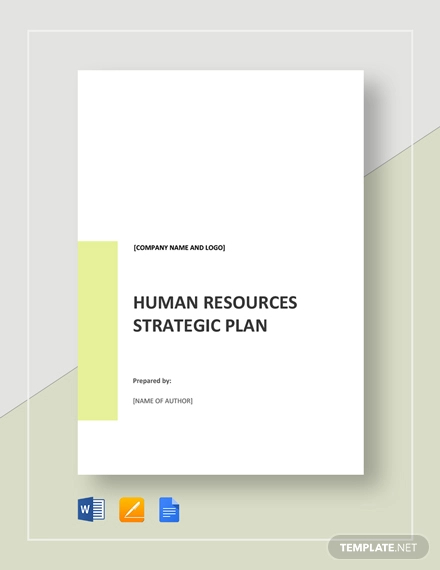
- Apple Pages
- Google Docs
Size: A4, US
Recruitment Strategic Plan Template
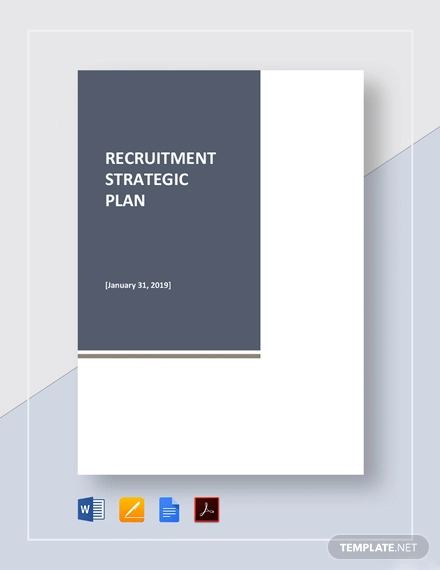
Construction HR Strategic Plan Template

Possible Human Resource Management Strategies Template
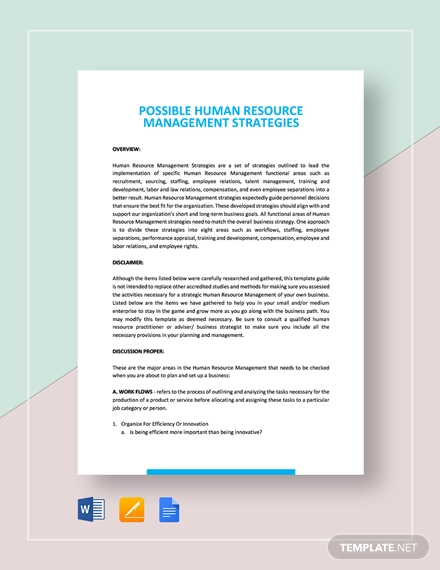
Free Sample HR Strategy Plan Template
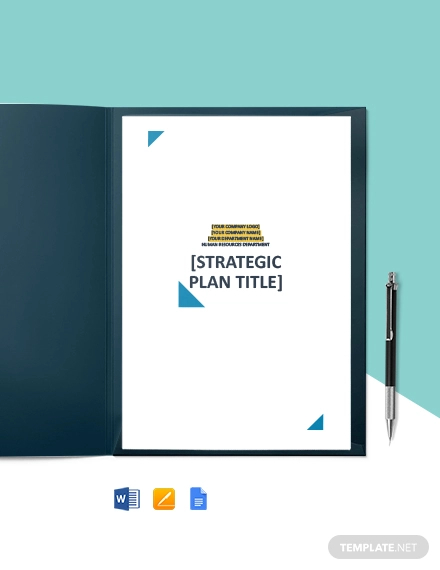
Free Download
HR Strategic Plan Template for Retail Business

Size: 41 KB
HR Strategic Plan Template for Small Business

Size: 34 KB
Hospital HR Strategic Plan Template
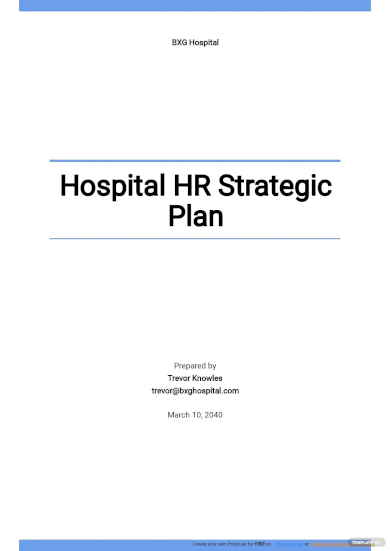
Size: 24 KB
Healthcare HR Strategic Plan Template
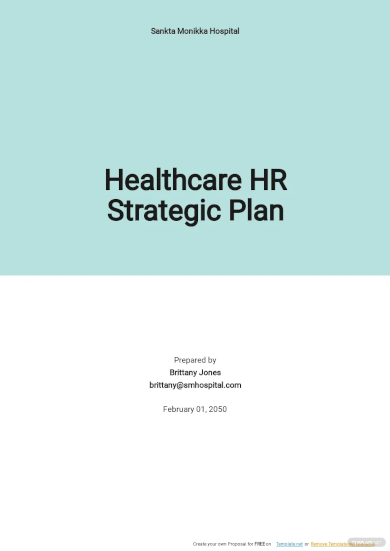
Size: 33 KB
Five Year HR Strategic Plan Template
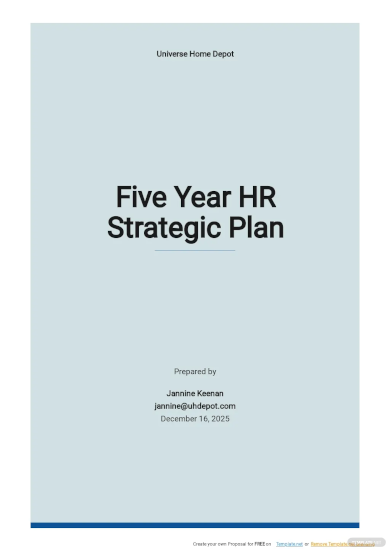
Size: 36 KB
Free Simple HR Strategic Plan Template
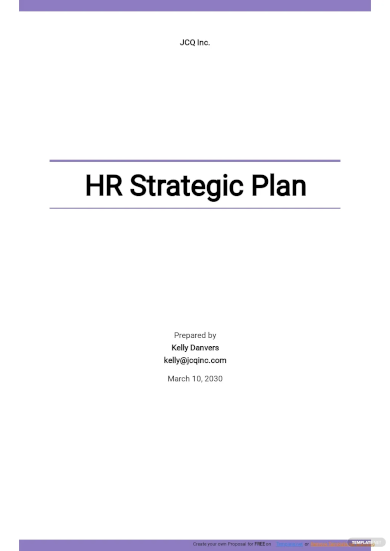
Size: 20 KB
Free University HR Strategic Plan Template
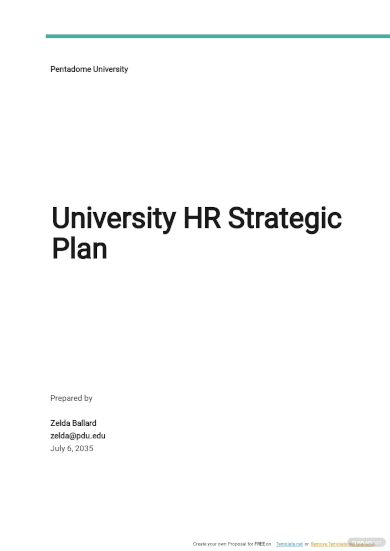
Size: 23 KB
HR Strategy Plan Template
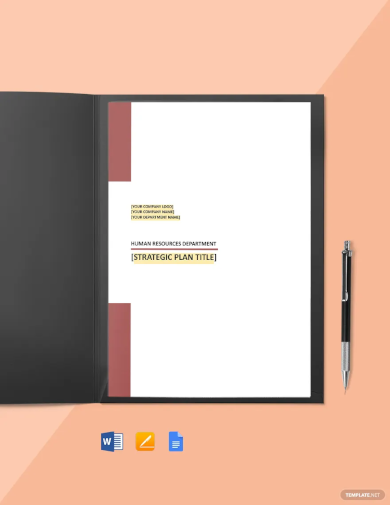
HR Strategic Action Plan Template
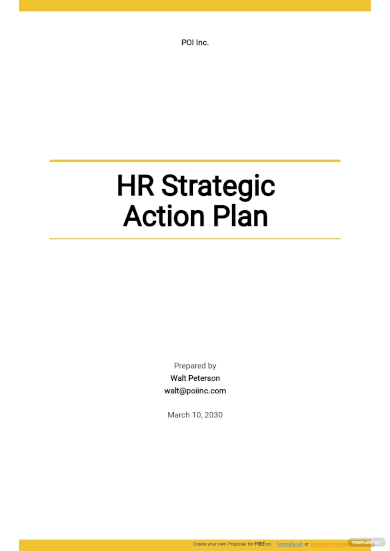
HR Strategic Communications Plan Template
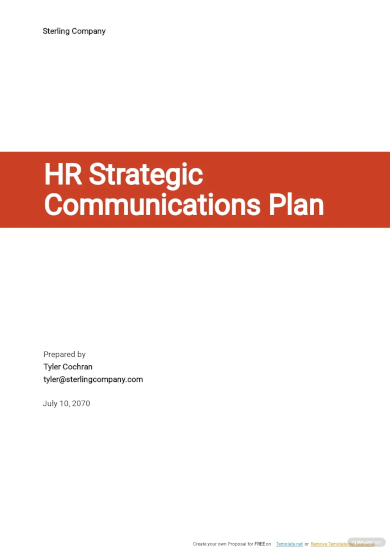
Size: 37 KB
HR Strategic Business Plan Template
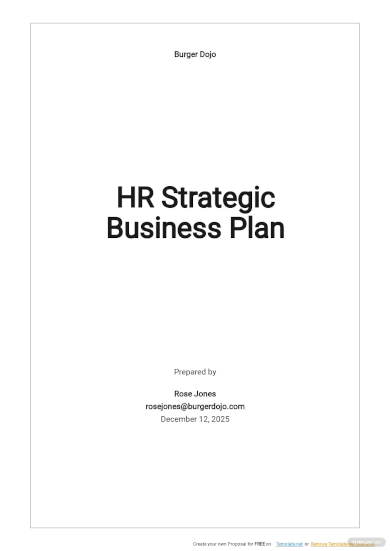
Human Resource Strategic Implementation Plan Example
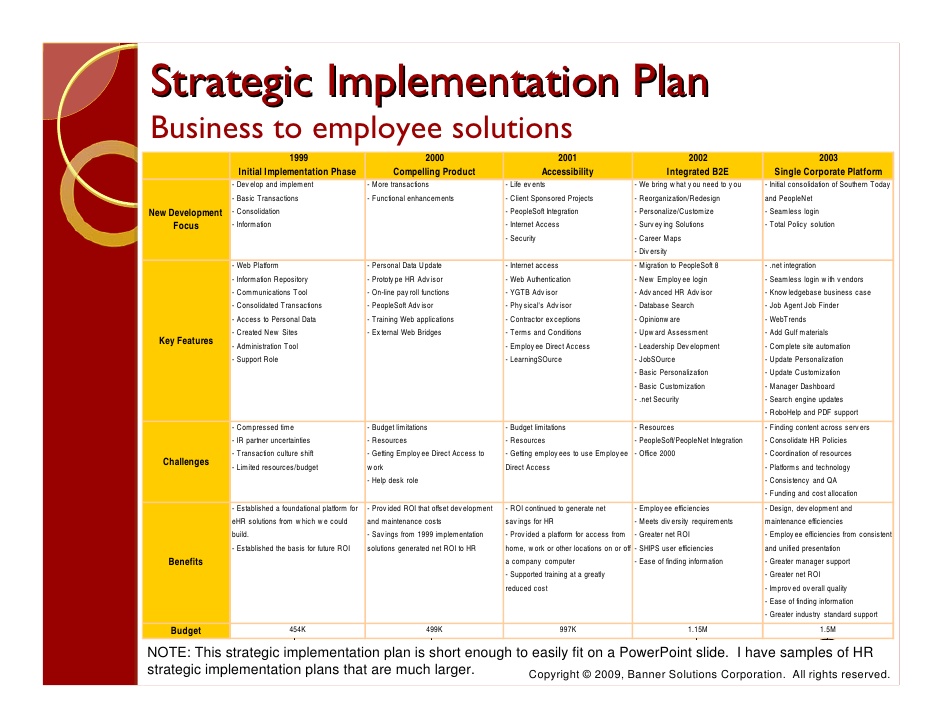
Size: 107 KB
New Human Resource Management Plan Example

Size: 73 KB
Basic Human Resource Strategic Plan Example
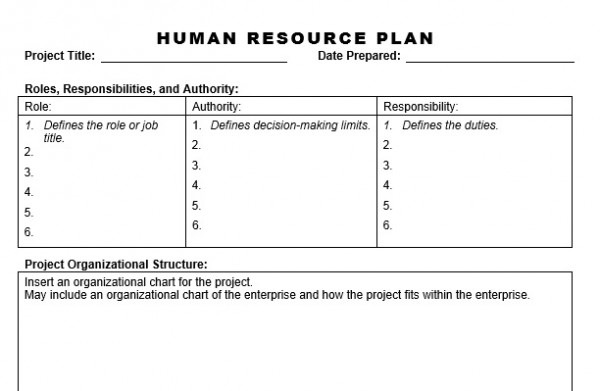
New HR Workforce Plan Example
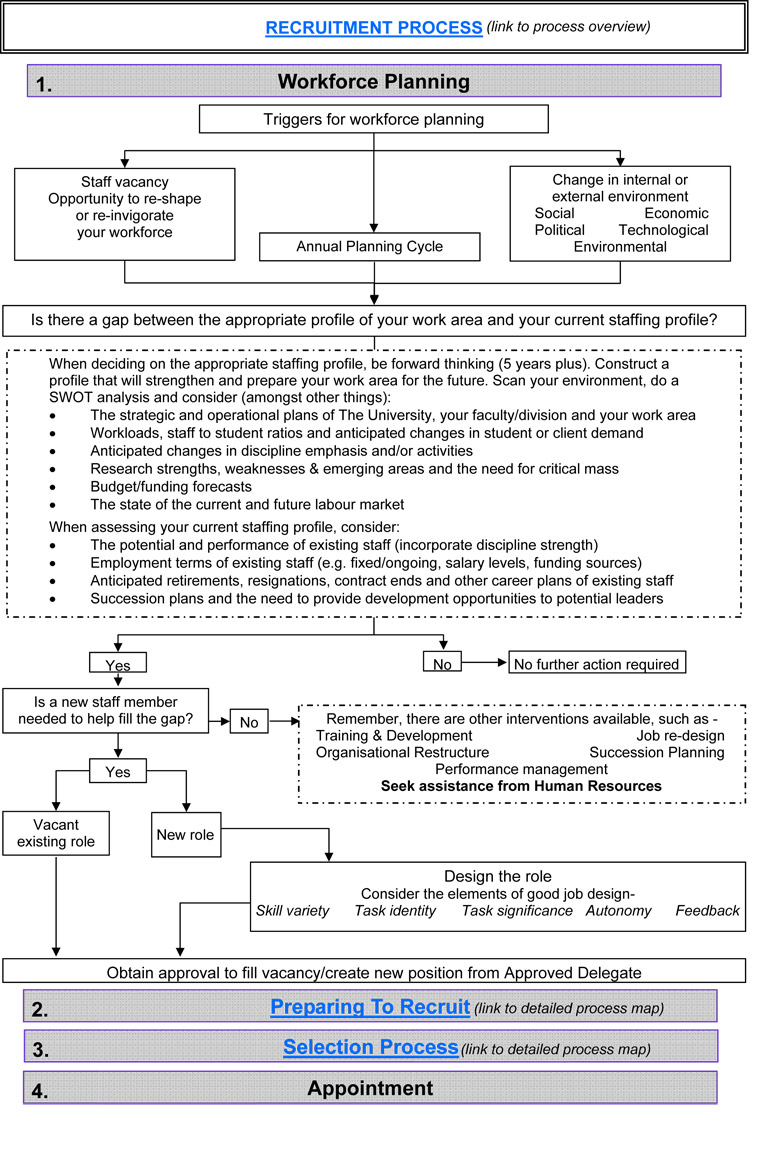
Size: 172 KB
Project HR Strategic Plan Example
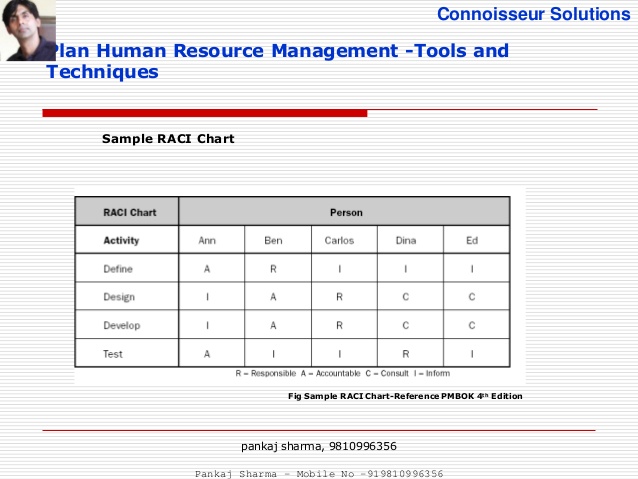
Size: 31 KB
Sample Human Resource Strategic Plan Example
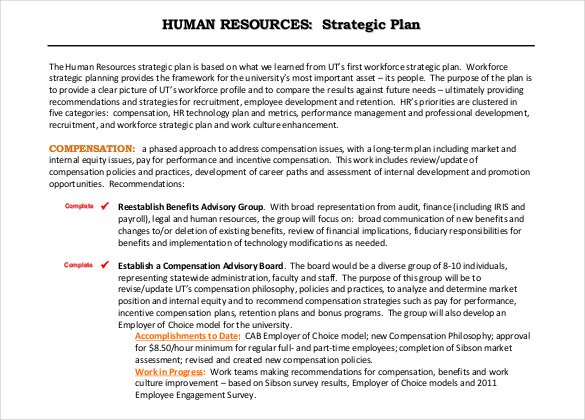
Size: 66 KB
Process Human Resource Strategic Plan Example
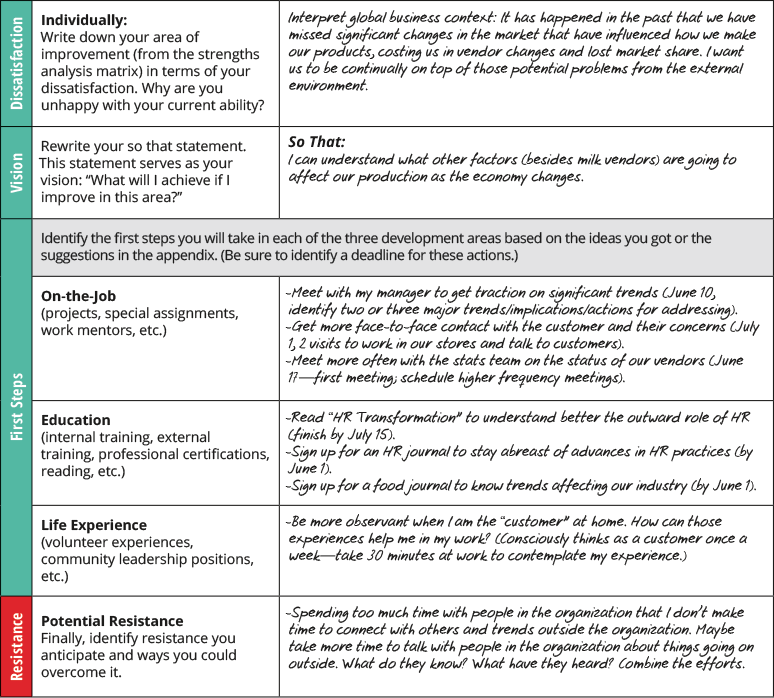
Size: 97 KB
HR Planning Model Example
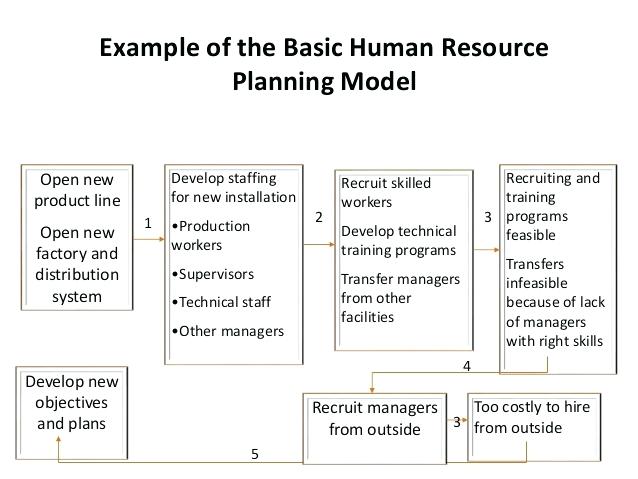
Size: 46 KB
HR Strategic Plan Chart Example
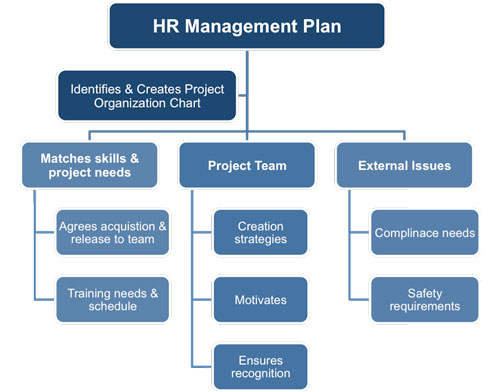
Size: 25 KB
HR Warn Decision Matrix Example
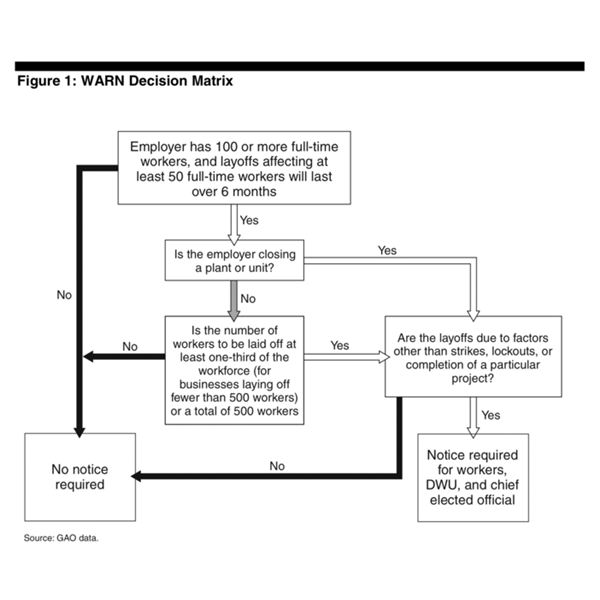
Size: 30 KB
The Importance of a Human Resource Department
There are various reasons why a human resource department is important to a company’s success and survival. First, there’s its responsibility as far as recruitment is concerned. This is the most basic task of any individual working in a human resource department. Anybody looking to find and edit an HR strategic plan template should always keep recruitment policies in mind. Another important function of a HR department is employee engagement . Together with management, HR officers formulate policies to keep employees motivated and productive. Lastly, there is counseling. HR departments must also aim to create a positive working environment for all employees in the company. To achieve this, HR people do counseling and discuss with employees their issues or other problems being encountered in the office.
Tips for Creating an HR Strategic Plan
Acquiring an HR strategy template or a downloadable HR strategic plan PDF sample is easy. Coming up with your own strategic plan from scratch is hard. However, it doesn’t have to be too difficult. Below are some tips that are bound to come in handy down the line.
Tip 1: Always Think of Your Future Needs
Being proactive and thinking of the future is often the right way to go whenever you develop any kind of strategic plan. The same goes for HR-related issues. When planning, ask yourself specific questions like ‘what skills will we require in the future?’ or ‘how large do we want our company to be?’

Tip 2: Consider What Your Company is Presently Capable of
Although thinking of the future is a must, you must also not neglect to look into what your present needs and capabilities are. You can even perform a SWOT analysis of your overall workforce to determine your strengths and weaknesses. Consider the risks and look for where your future opportunities are realistically. In learning both your present and future needs, you can better bridge the gap.
Tip 3: Lay Out Specific Plans
Having assessed what you need and what you are capable of, the next thing we can advise you to do is to lay out your specific plans. Keep them as detailed and realistic as possible. This should be easier for you to do now that you are better aware of your present capabilities. Another tip would be to keep the SMART acronym in mind: make sure everything is specific, measurable, achievable, relevant, and timely.
Tip 4: Re-evaluate as Often as Needed
Even when you think you already have the most well-thought-out plan, there may be parts of it that still require tinkering in the future. Or perhaps new developments will arise that make your plans less than ideal. Since no action plan can be accurately called foolproof, then you must prepare to adapt to any new circumstances that you and your company find yourselves in.
What are the essential components of a human resource strategic plan?
A developed vision-mission statement for your company is one. Without that component, your strategies won’t be guided in a proper manner. Then there is the intimate knowledge of what your HR department has at its disposal.
What role does HR play in a company’s overall planning process?
HR professionals often contribute to a company’s plans in various ways. One, they often formulate tactics designed to encourage greater interaction within the company. Their recruitment tasks also lead to the right people entering into the company’s plans as those professionals get slotted into key roles in the organization.
What are the two types of strategies employed by HR departments?
HR departments often employ two general kinds of strategies: one is called overarching strategies and the other is called specific strategies. The latter hones in on particular HR strategies and tactics while the latter branches off and involve the other departments of the company.
Any human resource strategic plan sample is always going to be better than having no plan at all. HR is a nuanced department with several pitfalls to navigate away from. Do it right and you set your company on the path of greater success. Do it wrong, and you should see yourself riddled with excruciating problems to solve. Which situation do you prefer? Take what you’ve learned from this article, along with any human resource strategic plan template or human resource strategic plan sample, and act on them today!
Text prompt
- Instructive
- Professional
Create a study plan for final exams in high school
Develop a project timeline for a middle school science fair.
HR Strategy & Processes Templates
Form a strong foundation for your HR practices and achieve organizational excellence with our HR strategy & processes templates. Quickly design comprehensive HR strategies, streamline essential processes, and align HR initiatives with your overall business goals. Whether you’re designing employee policies, refining compensation structures, or creating diversity and inclusion strategies, use these templates as a roadmap for creating a well-structured and efficient HR framework.

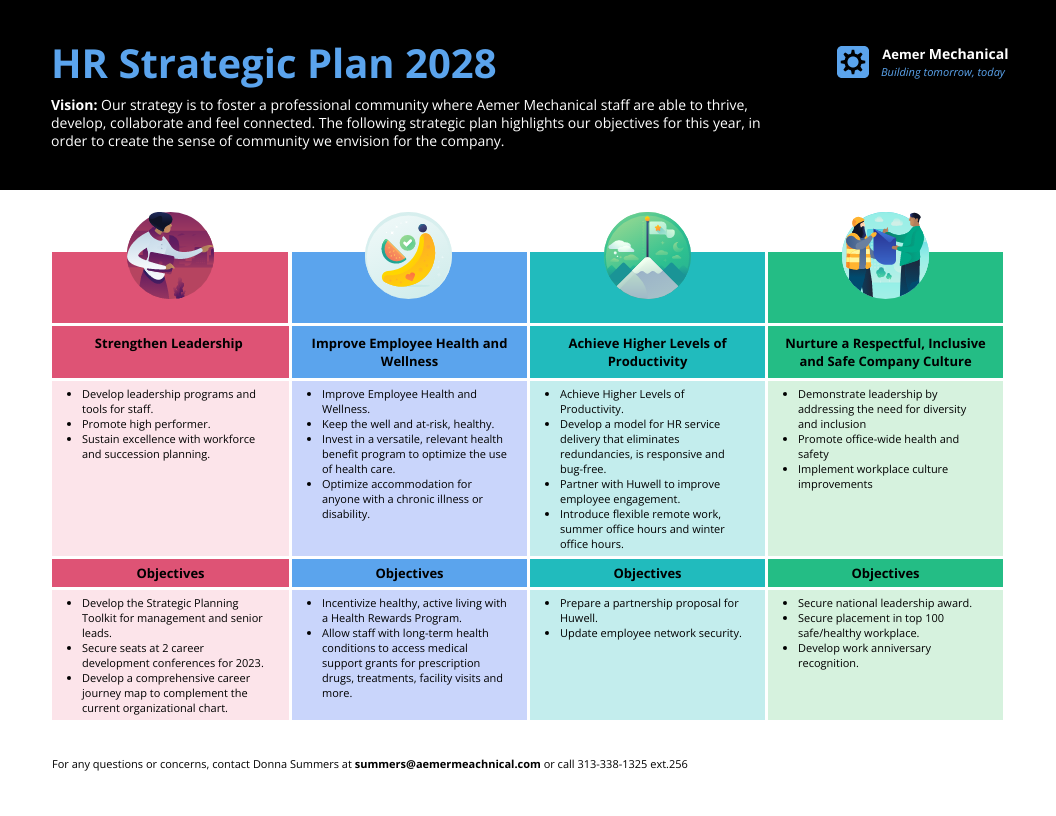
HR Strategic Plan Template
Create a clear hr stategic plan with venngage's hr strategic plan template..
- Design style modern
- Colors light
- Size Letter (11 x 8.5 in)
- File type PNG, PDF, PowerPoint
- Plan business
This HR strategic plan template is a great starting point for visualizing and communicating your own HR strategic plan. An HR strategic plan allows HR to communicate how HR operates and identify areas of improvement. HR Strategic Plan Template HR personnel should look at the HR strategy every year, maybe more than once a year. An HR Strategic Plan Template can be used to guide short and long term planning. HR must complete an HR strategic plan template for HR management purposes HR must conduct research before developing this HR strategy because it will help with specifying goals and outlining HR initiatives. HR may also use HR research to identify HR hiring methods and HR skills that will be needed in the future. HR needs this HR strategic plan template to increase organizational success and improve HR procedures among its employees. To get started you won't need any design experience. Venngge's online editor and professionally-designed HR strategic plan template is perfect for non-designers. Just click on ""create"" to begin customizing the template. To start, make your own content. You can stick
Read more >
Explore more

Item added to your cart
Here is a free business plan sample for a hr consulting practice.

Embarking on the journey to become a human resources consultant can be both exciting and daunting.
In the following paragraphs, we will present you with a comprehensive business plan outline tailored for a human resources consulting firm.
As an aspiring consultant, you're likely aware that a robust business plan is crucial for laying the foundation of your consulting practice. It serves as a roadmap, guiding you through setting objectives, developing strategies, and establishing a clear plan of action.
To streamline your planning process, feel free to utilize our human resources consulting business plan template. Our team is also on standby to provide a complimentary review and fine-tuning of your plan.

How to draft a great business plan for your human resources consulting practice?
A good business plan for a human resources consultancy must reflect the unique aspects of the HR services industry.
To start, it is crucial to provide a comprehensive overview of the HR consultancy market. This includes current statistics and the identification of emerging trends within the industry, as illustrated in our human resources consultancy business plan template .
Your business plan should articulate your vision clearly, define your target market (such as small to medium-sized enterprises, large corporations, or startups), and establish your consultancy's unique value proposition (specialization in certain industries, bespoke HR solutions, legal compliance, etc.).
Market analysis is a key component. This requires a thorough understanding of the competitive landscape, industry trends, and the specific HR needs of potential clients.
For an HR consultancy, it is important to detail the services you intend to offer. These might include recruitment, training and development, performance management, employee relations, compliance, and strategic HR consulting. Explain how these services will address the needs and challenges of your clients.
The operational plan should outline your consultancy's structure, including the location, the team's expertise, the technology and tools you will use, and your approach to client projects.
Quality of service is paramount in HR consultancy. Emphasize your commitment to ethical standards, confidentiality, and continuous professional development to stay abreast of HR best practices and legal requirements.
Discuss your marketing and sales strategy next. How will you build your client base and maintain long-term relationships? Consider networking, partnerships, content marketing, and the role of professional associations.
Incorporating digital strategies, such as a professional website, online content, and a social media presence, is also vital in the modern marketplace.
The financial plan is another critical element. It should include your startup costs, revenue projections, operating expenses, and the point at which you expect to break even.
In an HR consultancy, it's essential to understand your service pricing structure and to manage cash flow effectively. For assistance with this, you can refer to our financial forecast for an HR consultancy .
Compared to other business plans, an HR consultancy's plan must pay special attention to professional qualifications, industry accreditation, and the development of intellectual property, such as proprietary training programs or HR tools.
A well-crafted business plan will not only help you clarify your strategy and approach but also attract clients and secure financing or investment.
Lenders and investors are looking for a solid understanding of the HR services market, realistic financial projections, and a clear plan for delivering high-quality services.
By presenting a detailed and substantiated business plan, you demonstrate your expertise and dedication to the success of your HR consultancy.
To achieve these goals while saving time, you can simply fill out our human resources consultancy business plan template .

A free example of business plan for a HR consulting practice
Here, we will provide a concise and illustrative example of a business plan for a specific project.
This example aims to provide an overview of the essential components of a business plan. It is important to note that this version is only a summary. As it stands, this business plan is not sufficiently developed to support a profitability strategy or convince a bank to provide financing.
To be effective, the business plan should be significantly more detailed, including up-to-date market data, more persuasive arguments, a thorough market study, a three-year action plan, as well as detailed financial tables such as a projected income statement, projected balance sheet, cash flow budget, and break-even analysis.
All these elements have been thoroughly included by our experts in the business plan template they have designed for a human resources consultant .
Here, we will follow the same structure as in our business plan template.

Market Opportunity
Industry overview and dynamics.
The human resources (HR) consulting industry plays a pivotal role in the modern business landscape, offering expertise in talent management, organizational development, employee relations, and compliance with labor laws.
As of recent estimates, the global HR consulting market size is valued at several billion dollars and is expected to grow steadily. This growth is driven by the increasing complexity of labor legislation, the need for talent optimization, and the strategic importance of human capital in achieving business objectives.
In the United States, there are thousands of HR consulting firms, ranging from large, multinational corporations to small, specialized boutiques, contributing significantly to the economy and employment.
The data underscores the critical function of HR consultants in supporting businesses to navigate the ever-evolving workforce landscape.
Emerging Trends
The HR consulting sector is witnessing several emerging trends that are reshaping the industry.
There is a growing emphasis on data analytics and artificial intelligence to inform talent acquisition strategies, predict employee turnover, and enhance performance management.
Diversity, equity, and inclusion (DEI) initiatives are becoming central to organizational strategies, with consultants playing a key role in implementing effective DEI programs.
The rise of remote and hybrid work models has prompted a need for new HR policies and practices to manage distributed teams effectively.
Employee well-being and mental health are also gaining prominence, with businesses seeking expert advice on creating supportive work environments.
Moreover, the gig economy and the rise of freelance work are creating new challenges and opportunities in talent management that HR consultants are uniquely positioned to address.
These trends highlight the dynamic nature of the HR consulting industry and its responsiveness to the changing needs of the workforce and businesses.
Key Success Factors
Several factors contribute to the success of an HR consulting firm.
Expertise and specialization in specific HR domains can set a consultancy apart, allowing it to offer tailored solutions and deep insights.
Building strong client relationships is essential, as trust and understanding form the foundation of effective HR advisory services.
Staying abreast of legal changes and compliance requirements ensures that clients receive up-to-date advice, protecting them from potential liabilities.
Adopting technology to streamline processes and deliver data-driven insights can enhance the value proposition of HR consultants.
Finally, the ability to adapt to industry shifts, such as changes in workforce dynamics or emerging HR technologies, is crucial for long-term sustainability and growth.
These success factors are integral to the development and prosperity of HR consulting firms in a competitive and fast-changing business environment.
The Project
Project presentation.
Our human resources consultancy project is designed to address the critical needs of businesses in managing their most valuable asset: their people. Situated in a business district or operating virtually to cater to a global clientele, this consultancy will offer a comprehensive suite of HR services, from talent acquisition and management to employee engagement, training, and development. Our services will be tailored to the unique needs of each client, ensuring that they are equipped with the best strategies and practices to manage their workforce effectively.
We will focus on delivering personalized, strategic HR solutions that enhance organizational performance and employee satisfaction.
Our consultancy aims to become a trusted partner for businesses, guiding them through the complexities of human resources management and helping them to foster a productive and positive work environment.
Value Proposition
The value proposition of our human resources consultancy is centered on providing expert, tailored HR solutions that drive business success. We understand the challenges that companies face in attracting, retaining, and developing talent in a competitive market.
Our commitment to delivering strategic HR services is designed to enhance organizational capabilities, improve employee engagement, and ensure compliance with employment laws and regulations.
We are dedicated to fostering a culture of continuous improvement and innovation in HR practices, enabling our clients to focus on their core business activities while we manage their human resources needs.
As a pillar of support for businesses, we strive to be more than just consultants; we aim to be partners in our clients' growth, contributing to the development of their human capital and the overall success of their organization.
Project Owner
The project owner is a seasoned human resources professional with a wealth of experience in various industries. With a strong background in strategic HR management and a passion for organizational development, they are well-equipped to lead a consultancy that provides effective solutions to complex HR challenges.
Armed with a deep understanding of labor laws, best practices in talent management, and employee relations, the project owner is committed to helping businesses achieve their objectives through effective people management.
With a vision of empowering businesses to maximize their human capital, the project owner is dedicated to providing innovative HR strategies and fostering a culture of excellence within the consultancy and its client organizations.
Their commitment to professional integrity and a results-driven approach makes them the driving force behind this project, aiming to elevate the standard of human resources management for businesses seeking to thrive in today's competitive landscape.
The Market Study
Market segments.
The market segments for a human resources consultancy are diverse and multifaceted.
Firstly, there are small to medium-sized enterprises (SMEs) that may not have in-house HR capabilities and require external expertise to manage their workforce effectively.
Secondly, large corporations seeking specialized HR services such as leadership development, change management, or talent acquisition strategies form another significant segment.
Startups and fast-growing companies also represent a market segment, as they often need assistance with scaling their teams and establishing robust HR processes.
Lastly, individual professionals seeking career coaching, resume building, and personal branding services can be targeted as a niche segment within the broader market.
SWOT Analysis
A SWOT analysis of the human resources consultancy business reveals several key points.
Strengths include a deep understanding of HR laws and best practices, a network of industry contacts, and the ability to offer personalized services tailored to each client's needs.
Weaknesses might encompass the challenge of staying updated with constantly evolving HR regulations and the potential for high client dependency.
Opportunities can be found in the growing trend of outsourcing HR functions, the increasing complexity of employment legislation, and the rising focus on employee well-being and development.
Threats may include intense competition from other HR consultancies and the possibility of economic downturns affecting clients' budgets for consultancy services.
Competitor Analysis
Competitor analysis in the human resources consultancy space indicates a market with both large, established firms and smaller, niche consultancies.
Direct competitors include other HR consulting firms offering a similar range of services, as well as online platforms providing automated HR solutions.
These competitors vie for clients by showcasing their expertise, client testimonials, and success stories.
Potential competitive advantages for our consultancy could be specialized knowledge in certain industries, a personalized approach to client service, and innovative solutions to HR challenges.
Understanding the unique selling propositions and weaknesses of competitors is crucial for carving out a distinct market position and ensuring client loyalty.
Competitive Advantages
Our human resources consultancy stands out due to our comprehensive approach to HR management and our commitment to delivering measurable results.
We offer a suite of services that includes not only traditional HR functions but also cutting-edge solutions like data-driven talent analytics and employee engagement strategies.
Our dedication to staying ahead of HR trends and investing in continuous professional development means that we can provide our clients with the most current and effective advice.
Moreover, our personalized service model ensures that each client receives attention tailored to their specific challenges and goals, fostering strong, long-term partnerships.
You can also read our articles about: - how to start an HR consulting practice: a complete guide - the customer segments of a HR consulting practice - the competition study for a HR consulting practice
The Strategy
Development plan.
Our three-year development plan for the human resources consultancy is designed to establish us as a leader in the HR solutions industry.
In the first year, we will concentrate on building a robust client portfolio by offering bespoke HR services and solutions tailored to the specific needs of businesses.
The second year will be focused on expanding our services to include online HR tools and resources, as well as developing training programs for HR professionals and management.
In the third year, we aim to broaden our reach by forming strategic alliances with industry associations and expanding our team to include specialized consultants in areas such as diversity and inclusion, talent acquisition, and employee wellness programs.
Throughout this period, we will uphold our dedication to excellence, client satisfaction, and staying ahead of HR trends to serve our clients effectively.
Business Model Canvas
The Business Model Canvas for our human resources consultancy targets small to medium-sized enterprises in need of professional HR services and larger corporations seeking specialized HR projects or training.
Our value proposition is delivering expert HR advice, compliance, employee development, and performance management to enhance our clients' workforce and operations.
We offer our services through direct consultancy, online platforms, and interactive workshops, utilizing our key resources such as our experienced HR professionals and our network of industry experts.
Key activities include HR audits, policy development, employee training, and legal compliance checks.
Our revenue streams are derived from consultancy fees, subscription-based online resources, and training program enrollments, while our costs are mainly associated with professional staff, marketing, and technology investments.
Access a complete and editable real Business Model Canvas in our business plan template .
Marketing Strategy
Our marketing strategy is centered on demonstrating the tangible benefits of professional HR services.
We aim to educate potential clients on the importance of effective HR management and the value it adds to their business. Our approach includes targeted LinkedIn campaigns, HR workshops, and thought leadership articles.
We will also establish partnerships with business networks to gain referrals and credibility.
Additionally, we plan to leverage testimonials and case studies from satisfied clients to showcase our expertise and results.
Risk Policy
The risk policy for our human resources consultancy focuses on mitigating risks associated with regulatory compliance, client confidentiality, and service quality.
We adhere to strict confidentiality agreements and data protection laws to safeguard client information. Our consultants are well-versed in employment law and stay updated on legislative changes to ensure compliance.
We maintain high service quality through continuous training and professional development of our consultants. We also have a financial management strategy to ensure stability and growth.
Professional indemnity insurance is in place to protect against potential legal claims, ensuring we can provide top-tier HR services with confidence.
Why Our Project is Viable
We are committed to establishing a human resources consultancy that addresses the evolving challenges faced by businesses in managing their human capital.
With our expertise in HR practices, dedication to client success, and adaptive service offerings, we are poised to make a significant impact in the market.
We are enthusiastic about the opportunity to enhance the operational efficiency of our clients' businesses and are prepared to adapt our strategies to meet their changing needs.
We are optimistic about the future of our human resources consultancy and the value it will bring to our clients and the industry as a whole.
You can also read our articles about: - the Business Model Canvas of a HR consulting practice - the marketing strategy for a HR consulting practice
The Financial Plan
Of course, the text presented below is far from sufficient to serve as a solid and credible financial analysis for a bank or potential investor. They expect specific numbers, financial statements, and charts demonstrating the profitability of your project.
All these elements are available in our business plan template for a human resources consultant and our financial plan for a human resources consultant .
Initial expenses for our human resources consultancy include setting up a professional office environment, investing in HR-specific software and technology, legal and compliance costs, developing a strong online presence, and engaging in networking events to establish connections with potential clients. Additionally, costs will be incurred for branding, website development, and targeted marketing strategies to reach our intended market.
Our revenue assumptions are based on a thorough market analysis of the demand for HR consulting services, taking into account the increasing complexity of employment laws and the need for specialized HR expertise among small and medium-sized enterprises (SMEs).
We anticipate a gradual increase in client acquisition, starting conservatively and expanding as our reputation as a trusted HR advisor grows.
The projected income statement reflects expected revenues from our consulting services, direct costs (such as salaries of consultants and administrative staff), and operating expenses (office rent, marketing, professional development, etc.).
This results in a forecasted net profit that is essential for assessing the long-term viability of our consultancy.
The projected balance sheet presents assets unique to our consultancy, such as office equipment, software licenses, and liabilities including any loans and anticipated operational costs.
It provides a snapshot of the financial standing of our human resources consultancy at the end of each fiscal period.
Our projected cash flow statement details the inflows and outflows of cash, enabling us to predict our financial needs at any point. This is crucial for maintaining a healthy cash balance and steering clear of liquidity issues.
The projected financing plan outlines the specific sources of funding we intend to tap into to cover our initial costs.
The working capital requirement for our consultancy will be diligently tracked to ensure we have sufficient funds to support our day-to-day activities, such as paying for office utilities, consultant salaries, and other recurring expenses.
The break-even analysis for our venture will show the level of service engagement necessary to cover all our costs, including the initial investments, and to begin generating profits.
It will signal the point at which our consultancy becomes financially sustainable.
Key performance indicators we will monitor include the client retention rate, the average revenue per consultant, the profitability margin on our services, and the return on investment to gauge the efficiency of the capital we have deployed into the business.
These metrics will assist us in measuring the financial health and overall success of our human resources consultancy.
If you want to know more about the financial analysis of this type of activity, please read our article about the financial plan for a HR consulting practice .
- Choosing a selection results in a full page refresh.
- Opens in a new window.
- Sample Business Plans
- IT, Staffing & Customer Service
HR Consultancy Business Plan

Thinking about establishing your own HR consultancy business? Well, that’s a great idea!
Starting an HR consultancy can be a rewarding business venture as more and more organizations seek expert guidance to navigate the complexities of human resources.
But the first thing you’ll need is a well-written business plan to make it successful. It helps you set up and manage your services effectively, from strategic planning to talent management and employee relations.
Need help crafting your plan in order?
Not to worry. This HR consultancy business plan template will help you get started and guide you on what to include in a comprehensive plan.
Sounds good? Let’s dive right in!
Why Need a Business Plan for Your HR Consultancy
A strong business plan is not just a written document; it serves as a strategic tool for starting and growing an HR consultancy firm. It covers all the essential aspects of your business and aligns with the market needs & opportunities.
Here are several key reasons why you need a business plan for your HR consultancy business:
Clarity and direction
A business plan provides a clear roadmap and highlights your consultancy business’s mission, vision, goals, and strategies to achieve them. This will help you define the steps you need to take while establishing your business, navigating you to the right direction.
Raise funding
If you need capital investment or loans to get off the ground, you’ll need a well-crafted business plan in place. It provides a detailed analysis of the financial feasibility and sustainability of your business. This will help you demonstrate the profitability of your HR consultancy and gain the confidence of potential investors or banks.
Operational efficiency
A comprehensive business plan can help you provide valuable insights into the operational aspects of an HR consultancy company. This key element of a business plan allows you to manage resources effectively. Also, it helps in overall operational efficiency and ensures your business runs smoothly.
Risk management
With the help of a business plan, you can identify the potential risks and challenges that might affect your business. This understanding helps you develop risk mitigation strategies effectively and makes you prepare for unforeseen circumstances. Also, it ensures that your business can succeed over the long term.
Informed decision-making
An effective business plan helps you specify clear, measurable, and attainable goals for your HR consultancy business. It lets you assess the business performance and track the progress against the defined goals. This way, you can make well-informed decisions and revise the strategies as needed.
In short, having a business plan can greatly benefit you and effectively navigate the complexities of HR consulting practices.
Now that you understand the importance, let’s check out what are the key elements of an HR consulting business plan.
Key Elements of an HR Consultancy Business Plan
While writing an actionable business plan, you should consider including all the critical details you need to establish a successful HR consultancy business.
Here is a list of the most important sections for a comprehensive and compelling business plan:
1. Executive Summary
An executive summary is a quick, concise overview of the HR consultancy business plan, highlighting the most essential aspects of your HR consulting firm.
Though it is the first section, writing your plan summary would be more convenient at the end once the entire doc is ready. This is so because it summarizes all the key sections you mentioned in the rest of the plan.
So, this section is your chance to provide a clear and persuasive introduction to your business that can grab the reader’s attention. Also, make sure that you keep it short and simple.
You may consider including details like your business name, location, concept, core values, vision statement, services offered, market opportunities, target customers, competitive advantages, marketing efforts, and financial highlights.
Say goodbye to boring templates
Build your business plan faster and easier with AI
Plans starting from $7/month

2. Company Overview
The company overview section provides a detailed description of your HR consultancy firm, giving an in-depth understanding of your business concept and nature.
You may describe every foundational element in this section, including the legal structure, specific niche, background & history, mission statement, company owners, short-term goals, and long-term objectives.
Moreover, explain what milestones you have achieved to date and clearly outline what sets your business apart from others.
In short, this section helps readers comprehend your company’s foundation, capabilities, and areas of specialty. So keep it impressive yet to the point.
3. Market Research
The market analysis section provides a thorough explanation of the industry and market in which your HR consulting business intends to operate.
To plan this section, you’ll need to conduct detailed market research for your HR consulting services and demonstrate its positioning within the market. Consider adding the following components:
- Industry size & growth potential using recent data and statistics
- Current trends in the human resources consulting practice
- Target market segments and client needs
- Direct & indirect competitors
- SWOT analysis to identify the internal & external factors
- Regulatory environment
You can even outline the market gaps and opportunities to ascribe your competitive advantages and USPs.
Here, you should note that this market analysis showcases your deep understanding of the HR consulting industry, so try to present research-backed data and charts to impress potential investors or partners.
4. Service Offerings
In this section, you may clearly define what type of services your business will offer and how these services will meet the potential client needs.
For example, give a brief description of each service, including employee recruitment, training & development programs, compliance consulting, performance management procedures, and strategic HR planning.
Apart from that, you may highlight pricing strategies, unique methodologies, or potential upselling opportunities(if any).
5. Marketing Strategy
A robust marketing strategy is vital if you want to establish a strong presence in a competitive industry. In fact, it involves the strategies you’ve decided to capture and maintain client interest that can promote business growth.
Your marketing plan should summarize the online and offline methods, sales tactics, or external promotional campaigns you will use to market or advertise your business.
For instance,
- Social media & content marketing to engage potential clients
- Search engine optimization (SEO) to enhance online visibility
- Networking at industry workshops or events to build relationships
- Cold calling, targeted email campaigns, and direct meetings for effective communication
- Loyalty programs or referral incentives to reward existing customers
Furthermore, you can discuss the customer journey from awareness to decision and integrate strategies for customer relationship management & personalized services.
6. Operations Plan
The operations plan outlines the day-to-day operations and activities required for smooth business functioning.
For an HR consulting company, you should describe your business operational details such as staffing needs, office layout, equipment & technology used, client engagement processes, and service delivery strategies.
Overall, a well-developed operations plan will not only help you draft how HR consulting services will be delivered but also ensure that your business operations are streamlined and effective.
7. Management Team
As the name suggests, you will introduce your management team in this section. And strong management is essential for your HR consultancy’s ultimate success.
You should provide a resume-styled summary or bios of the founder(s), key executives, the general manager, and the rest of the management team members, detailing their roles & responsibilities, experience, qualifications, and skills.
Also, explain how each member fits their role and how their expertise contributes to your business growth. Consider adding an organizational chart that shows your company’s hierarchical structure.
If applicable, you can mention details about compensation plans and any external support systems like advisory board members or consultants.
8. Financial Projections
To launch a successful business, you’ll need to craft a strong financial plan, along with realistic financial projections. This will help you map out the financial viability and sustainability of your business.
Generally, it covers several critical statements and financial reports for the next three to five years of operation, including detailed startup costs, financial needs, revenue forecasts, projected cash flow, profit & loss statements, and balance sheets.
Likewise, this section provides a break-even analysis, financial ratios, scenario analysis, and other metrics required for demonstrating your HR consultancy company’s financial health to potential investors or lenders.
9. Appendix
In the appendix section , you may attach any additional information or supporting documents that don’t fit into specific sections but support your plan. It includes
- Resumes of key personnel
- Market research data
- Legal documents
- Client contracts and testimonials
- Partnership agreements
Readers might use these documents or attachments for their reference as they provide additional depth to the information presented in the main text.
Download a Sample HR Consultancy Business Plan
Need a sample business plan to start drafting your plan? Well, here you go; download our free HR consultancy business plan pdf and get started now.
This advanced business plan template has been specifically designed for HR consulting businesses. With step-by-step instructions and examples, it assists you in developing your own plan. Simply import data into your editor and use it as a reference!
The Quickest Way to turn a Business Idea into a Business Plan
Fill-in-the-blanks and automatic financials make it easy.
Start Creating Your Business Plan with AI
Drafting a comprehensive business plan from scratch can be a daunting and intimidating task, right? But not to worry; Upmetrics could be a great help here!
It is a modern AI business plan generator that supports small business owners and new-age entrepreneurs to create investment-ready plans in minutes.
With its easy-to-follow guides, 400+ sample business plans, and financial forecasting software, Upmetrics will make the entire business plan writing process a lot easier for you.
So, wait no longer; start planning now !
Related Posts
IT Consulting Business Plan
Staffing Agency Business Plan
Operation Plan Writing Guide
Guide to Writing a Business Plan
Frequently asked questions, what are the essential financial projections i need in my hr consultancy business plan.
Following are some of the essential financial projections that you should include in your HR consultancy business plan:
- Startup costs
- Sales and revenue forecasts
- Profit and loss statement
- Cash flow projections
- Balance sheet
- Break-even analysis
How do I find and secure funding for my HR consultancy business?
If you want to find and secure funding for your HR consultancy business, consider these options:
- Self-funding
- Small business grants
- Angel investors
- Venture capital
While seeking funding, you’ll need to create an effective business plan backed by detailed financial documents. This will improve your chances of getting the expected capital.
What market analysis is necessary for an HR consultancy business plan?
While writing an HR consultancy business plan, you’ll need to conduct a thorough market analysis and focus on the following key areas:
- Explore HR consultancy industry size, trends, and growth rate
- Analyze and define the target market
- Assess the specific needs of potential clients
- Identify the top competitors and differentiate services
- Understand the legal and regulatory requirements
About the Author
Upmetrics Team
Upmetrics is the #1 business planning software that helps entrepreneurs and business owners create investment-ready business plans using AI. We regularly share business planning insights on our blog. Check out the Upmetrics blog for such interesting reads. Read more
Plan your business in the shortest time possible
No Risk – Cancel at Any Time – 15 Day Money Back Guarantee

Create a great Business Plan with great price.
- 400+ Business plan templates & examples
- AI Assistance & step by step guidance
- 4.8 Star rating on Trustpilot
Streamline your business planning process with Upmetrics .

HR Strategic Plan Templates
HR Managers Need Great HR Strategic Plans. Create One with Template.net’s Free Sample Human Resource Strategic Planning Templates, HR Business Partner Management Plans, Annual HR Implementation Plans, Workforce Planning, Strategic Action Plans, and Strategy Roadmaps, You Can Make Great of Your HR Departments Plans. Create with Template.net and Start the Journey Towards Greatness. Download Our HR Strategic Plan Templates Today!
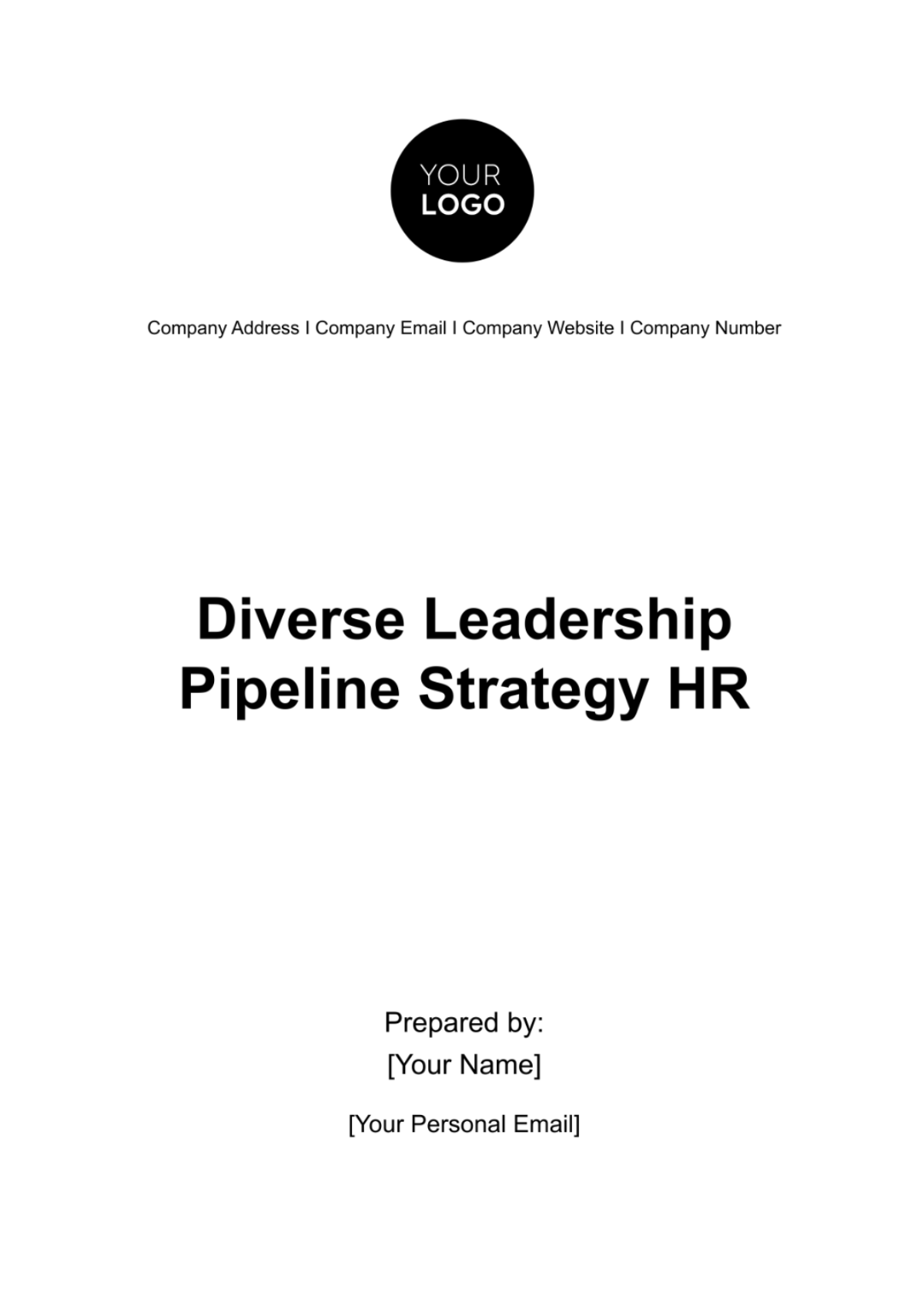
- HR Templates
- HR Health & Safety Guide
- HR Agreement
- HR Brochure
- HR Business Card
- HR Calculator
- HR Calendar
- HR Certificate
- HR Checklist
- HR Compensation & Benefits
- HR Complaint
- HR Consultant
- HR Consulting
- HR Cover Letter
- HR Dashboard
- HR Department
- HR Diversity & Inclusion
- HR Employee
- HR Employee Engagement
- HR Employee Letter
- HR Employee Management
- HR Employee Relation
- HR Employee Relationship
- HR Firing and Termination
- HR FlowChart
- HR Gantt Chart
- HR Internship
- HR Invitation
- HR Legal & Compliance
- HR Letterhead
- HR Management
- HR Manager Cover Letter
- HR Manager Resume
- HR Meeting Minutes
- HR Monthly Report
- HR Name Tag
- HR Newsletter
- HR Onboarding & Orientation
- HR Payroll and Scheduling
- HR Performance Management
- HR Policy & Procedure
- HR Presentation
- HR Proposal
- HR Recruitment
- HR Recruitment & Staffing
- HR Reward and Recognition
- HR Services
- HR Spreadsheet
- HR Strategic Plan
- HR Training
- HR Training & Development
- HR Training and Development
When you are involved in a business of any type, it is very common to come across Strategy Plans . This aims to help in the development of the company and ensure that all resources are managed and distributed properly. Like any department, the HR division also needs to create its own strategic plan that focuses on the growth and development of the workforce. While it is not hard to create a plan, you'll still need something, such as a template, to guide you in the process.
Here at Template.net, we believed that time management is very important, that's why our designers made sure that you won't have to write your plans from scratch again. Our HR Strategic Plan Templates is a collection of preformatted plans that are based on legitimate sources that focuses mainly on helping develop any businesses. Our user-friendly templates have a customizable layout that you can modify anytime when you need, making it convenient when you want to present a plan on time.
We also included HR Roadmaps and charts so that it would be easier for you to plot the details and information on the spot. With any version of Microsoft Word, Adobe Illustrator, Adobe Photoshop, and Apple Pages, you can download and edit our templates effortlessly. And lastly, if you subscribe to our website, you'll get full access to even more templates that are beneficial to you as an HR manager and to the entire business. What are you waiting for? Hurry and avail yourself of a template today!
Get Access to World's largest Template Library & Tools
- Access to 1 Million+ Templates & Tools
- Unlimited access to Design & Documents AI editors
- Professionally Made Content and Beautifully Designed
- Instant Download & 100% Customizable

HR Plan Templates
- May 15, 2024
- HR Template

Human Resources (HR) planning is crucial for any organization, as it ensures that the right people are in the right roles at the right time to achieve business objectives. HR Plan Templates serve as a blueprint for HR managers to strategize, implement, and evaluate HR practices effectively
Importance of HR Planning:
Human Resources (HR) planning is vital for several reasons:
Anticipating and Meeting Organizational Needs: HR planning helps anticipate future workforce requirements based on organizational goals and changes in the business environment. By understanding staffing needs in advance, HR can ensure that the right talent is available when needed.
Talent Acquisition and Retention: Effective HR planning enables organizations to attract, recruit, and retain top talent. It helps identify the skills and competencies required for various roles, allowing HR to develop recruitment strategies to fill those positions.
Optimal Resource Utilization: HR planning ensures that resources, including human capital, are utilized efficiently. It helps prevent understaffing or overstaffing situations, optimizing workforce productivity and cost-effectiveness.
Succession Planning and Talent Development: HR planning involves identifying and developing future leaders within the organization. By implementing succession planning initiatives, HR ensures a smooth transition when key positions become vacant. Additionally, it facilitates the development of employee skills through training and career development programs.
Adapting to Change: In today’s dynamic business environment, organizations frequently face changes such as technological advancements, market shifts, or regulatory requirements. HR planning allows organizations to adapt to these changes by adjusting their workforce strategies accordingly.
Related Article: 10 Tips To Build An Employee Task Tracker Template – PMITOOLS
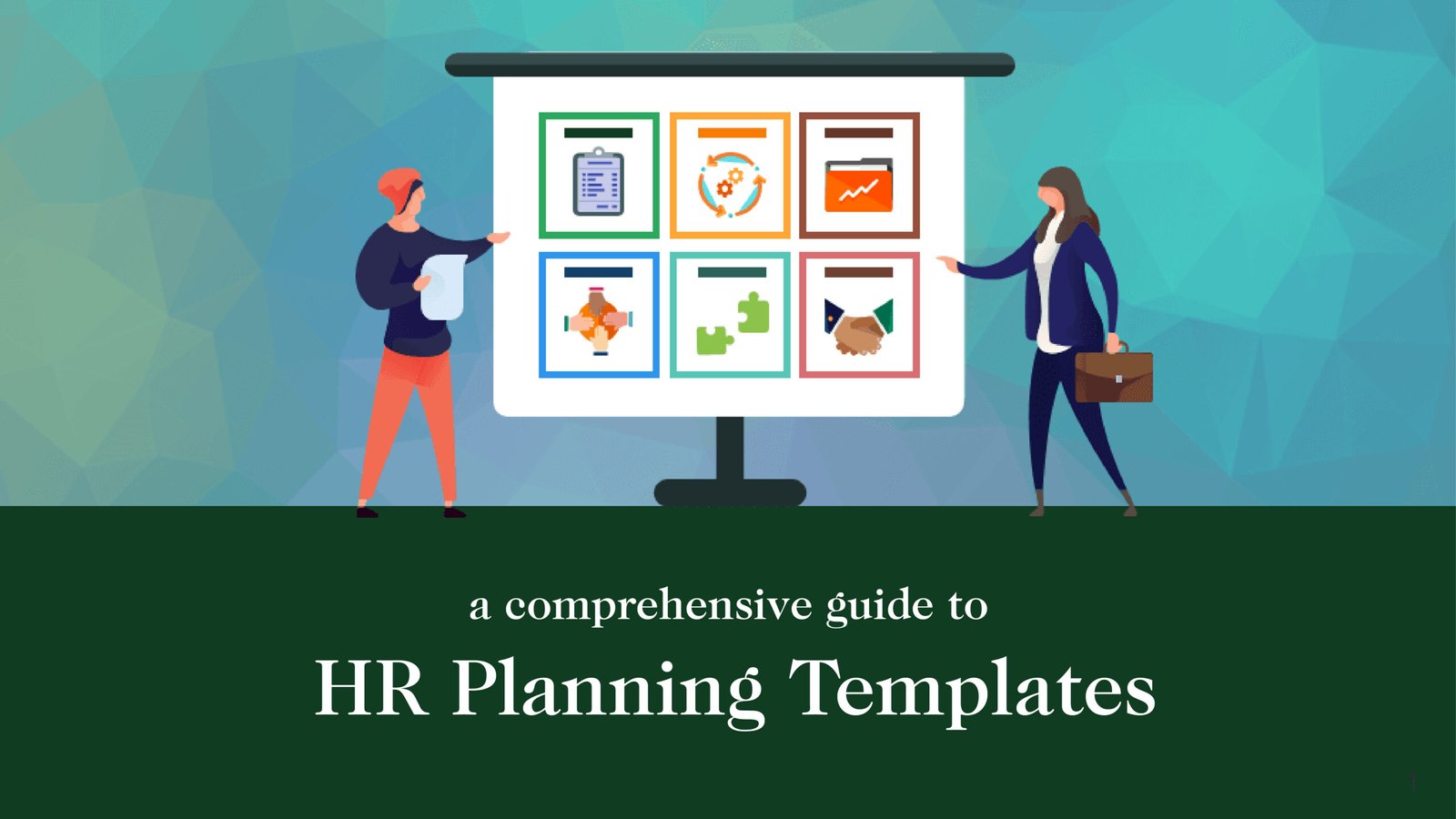
How can HR Planning uplift our business?
HR planning can uplift a business in several ways:
1. Aligning Human Capital with Business Objectives: Effective HR planning ensures that the organization has the right people in the right positions to achieve its strategic goals. By aligning HR strategies with business objectives, HR helps maximize employee contributions to the company’s success.
2. Optimizing Workforce Productivity: HR planning helps prevent under- or over-staffing situations, ensuring optimal workforce productivity. By accurately forecasting staffing needs, HR can avoid costly inefficiencies and ensure that resources are utilized efficiently.
3. Attracting and Retaining Top Talent: A well-developed HR plan includes strategies for attracting, recruiting, and retaining top talent. By offering competitive compensation, benefits, and career development opportunities, HR can attract skilled employees who are committed to the organization’s success.
4. Fostering Employee Engagement: Engaged employees are more productive, innovative, and committed to their work. HR planning includes initiatives to enhance employee engagement, such as training and development programs, recognition and rewards, and opportunities for career advancement.
Related Article: Top 3 Employee Performance Report Templates – PMITOOLS
5. Supporting Organizational Growth: As businesses grow and evolve, their HR needs change accordingly. HR planning anticipates future workforce requirements and develops strategies to support organizational growth, whether through expansion into new markets, launching new products/services, or scaling operations.
6. Enhancing Organizational Agility: In today’s fast-paced business environment, agility is essential for success. HR planning enables organizations to adapt quickly to changes in the market, technology, or regulatory environment by adjusting staffing levels, skills, and competencies as needed.
7. Improving Decision-Making: HR planning provides valuable data and insights that support informed decision-making. By analyzing workforce trends, skills gaps, and performance metrics, HR helps leaders make strategic decisions that drive business success.
8. Cultivating a Positive Workplace Culture: A strong workplace culture fosters teamwork, innovation, and employee satisfaction. HR planning includes initiatives to promote a positive culture, such as diversity and inclusion programs, employee wellness initiatives, and effective communication strategies.
10. Building a Strong Employer Brand: A positive employer brand attracts top talent and enhances the organization’s reputation in the marketplace. HR planning includes initiatives to build and maintain a strong employer brand, such as employer branding campaigns, employee referral programs, and positive employee experiences.
Related Article: PMO Dashboard Template – PMITOOLS
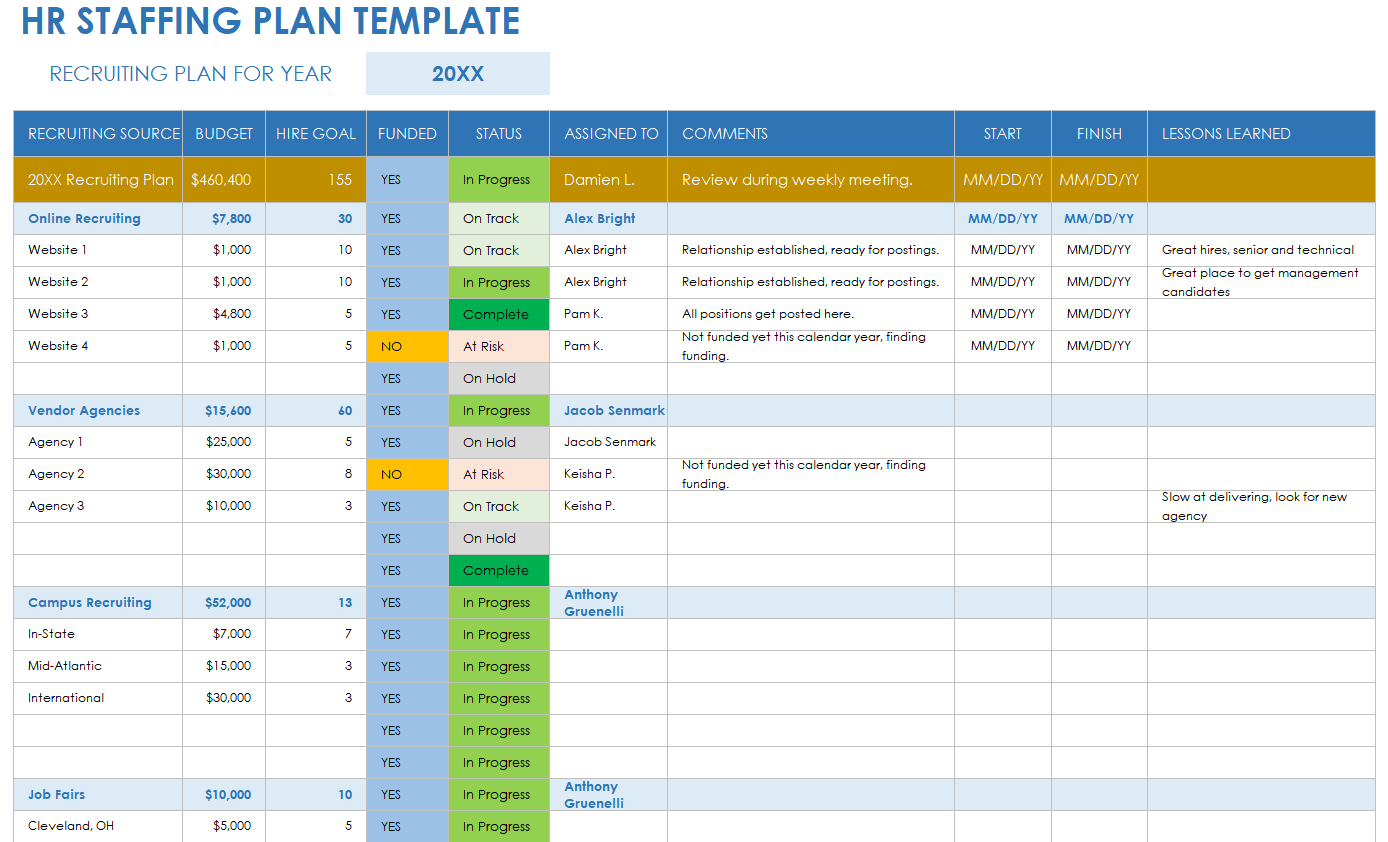
Tips to create HR Plan Templates:
Creating HR Plan Templates involve several key considerations. Here are some tips to guide you:
1. Understand Organizational Goals: Begin by aligning your HR plan with the organization’s strategic objectives. Understanding the business’s long-term vision and goals will help tailor HR strategies to support them effectively.
2. Conduct a Comprehensive Analysis: Perform a thorough assessment of the organization’s current state, including its structure, workforce demographics, and culture. Conduct SWOT analysis to identify internal strengths and weaknesses, as well as external opportunities and threats.
3. Involve Key Stakeholders: Collaboration with key stakeholders, including department heads, managers, and employees, is crucial. Their input will provide valuable insights into workforce needs and priorities.
4. Define Clear Objectives: Clearly define the objectives of your HR plan, ensuring they are specific, measurable, achievable, relevant, and time-bound (SMART). These objectives will guide your HR strategies and initiatives.
5. Tailor Strategies to Needs: Develop HR strategies that address the identified needs and objectives. This may include recruitment and selection, training and development, performance management, employee relations, and compensation and benefits.
Related Article: 3 Tips To Create Cost Management Plan Template | PMITOOLS
6. Ensure Flexibility: Your HR plan should be flexible enough to adapt to changing business needs and external factors. Build in mechanisms for periodic review and adjustment as necessary.
7. Consider Diversity and Inclusion: Incorporate diversity and inclusion initiatives into your HR plan to ensure a diverse and equitable workplace. Implement strategies to attract, retain, and develop a diverse workforce.
8. Budget Appropriately: Allocate resources effectively to support your HR strategies. Consider budget constraints and prioritize initiatives based on their impact on organizational goals.
9. Establish Metrics for Evaluation: Define key performance indicators (KPIs) to measure the success of your HR plan. These metrics should align with your objectives and provide meaningful insights into the effectiveness of HR initiatives.
10. Communicate and Engage: Ensure effective communication and engagement with employees throughout the HR planning process. Transparency and involvement will foster buy-in and support for HR initiatives.
11. Review and Revise Regularly: Regularly review and revise your HR plan to ensure it remains relevant and effective. Solicit feedback from stakeholders and adjust strategies as needed to address changing priorities or challenges.
For HR Management Templates: HR Management Template (Strategy, Performance) Excel (ucube.biz)
Top 3 HR Plan Templates:
Shrm hr strategic plan template:.
- Comprehensive template offered by the Society for Human Resource Management (SHRM).
- Covers all aspects of HR planning, including workforce planning, talent acquisition, performance management, and diversity and inclusion.
- Customizable and aligns with SHRM’s competency model.
- Provides guidance for developing strategic HR initiatives.
- Suitable for organizations of all sizes and industries.
HR Planning Toolkit by CIPD:
- Offered by the Chartered Institute of Personnel and Development (CIPD).
- Provides templates and guidance for various HR planning aspects, such as workforce planning, talent management, and performance management.
- Includes tools for conducting skills audits, forecasting workforce requirements, and developing action plans.
- Designed for organizations to develop effective HR plans tailored to their specific needs.
- Suitable for businesses and HR professionals seeking practical tools and resources.
HR Strategic Plan Template by HR Council for the Nonprofit Sector:
- Tailored for nonprofit organizations by the HR Council for the Nonprofit Sector.
- Helps nonprofits align HR strategies with their mission and objectives.
- Covers areas such as talent acquisition, performance management, and employee engagement.
- Includes sections for goal-setting, strategy development, and progress monitoring.
- Suitable for nonprofit organizations aiming to develop strategic HR plans that support their unique missions.
Related Article: Strategic human resource planning – Wikipedia
Conclusion:
In short, HR Plan Templates are the valuable tools for HR professionals to develop strategic initiatives aligned with organizational goals. By using HR plan templates, organizations can ensure consistency, efficiency, and effectiveness in their HR practices, ultimately leading to a more engaged workforce and better business outcomes.
About The Author
Related Articles
Hr management templates, employee management system, employee task tracker template, employee performance report template, recruitment plan template excel, hr roadmap template, leave a reply cancel reply.
Your email address will not be published. Required fields are marked *
Save my name, email, and website in this browser for the next time I comment.
PMITOOLS is all related to project management blog, download templates/tools now
- Privacy Policy
RECENT POSTS
- Project Management Templates – Guide 2024 July 12, 2024
- Supply Chain Roadmap Template July 8, 2024
- Construction Project Management July 5, 2024
NEW: Create engaging, efficient and insightful employee surveys – find out how
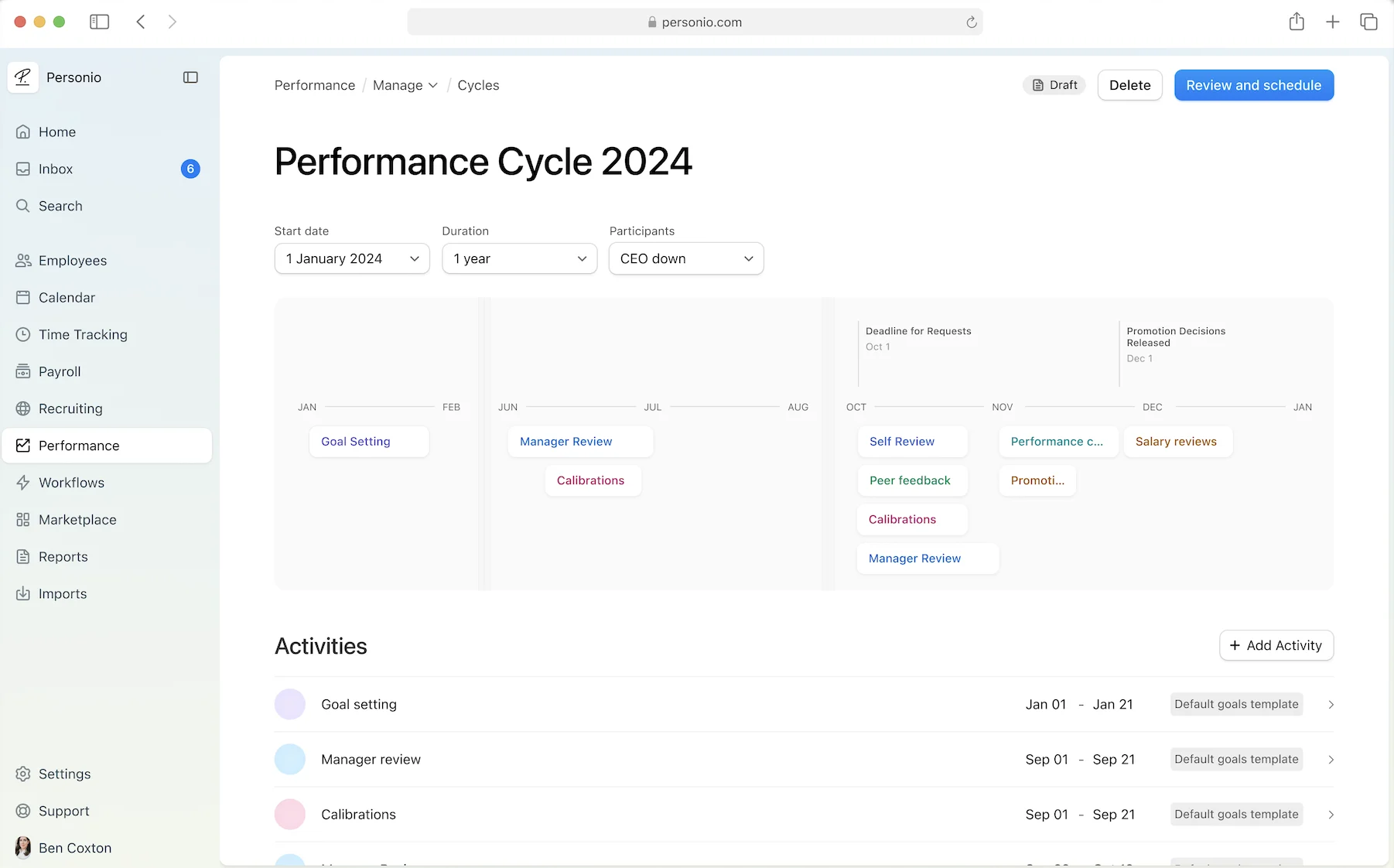
Revolutionise your processes
Check out the leading performance review software solutions to transform your workplace evaluations.
Latest blog posts, hr strategy template & planning guide.
No matter how good your intentions are for your team, improvising your HR strategy as you go is a recipe for frustration. Think of it this way: Not having an HR strategy or not following a template is like planning a vacation without putting together an itinerary or knowing how you’ll reach your destination.
When you have a well-planned HR strategy, you offer a clear roadmap to align your people with your overall business objectives: Objectives like finding and attracting the best employees for the job, retaining them and growing their skills.
This guide draws from the latest HR trends and best practices to provide you with a plug and play HR strategy template. By exploring how to improve the employee experience, the guide will also help you better engage your team and make them more productive.
- 1 HR strategy example template
- 2 7 steps for creating a human resource strategy
- 3 Key performance indicators for strategic human resource management
- 4 Benefits of having an effective HR strategy
- 5 9 HR tactics for success
- 6 Build an effective HR strategy to achieve business goals
HR strategy example template
Crafting an HR strategy from scratch can be daunting. Your strategy needs to be comprehensive yet focused, covering essential elements without going into overwhelming detail.
This template shares the most important components to include in your HR strategy.
1. HR mission and vision statements
Outline the core purpose and focus of the HR department.
2. Organisational values and goals
Establish the principles and values that guide the organisation.
Set long-term objectives aligned with the company's overall strategy.
3. HR objectives and key results (OKRs)
Identify specific, measurable goals for the HR team.
Track progress with key results that demonstrate progress and achievement.
4. Summary of key HR initiatives
Highlight major projects and actions that will help achieve strategic goals.
Examples: Implement an employee wellness programme, upgrade the recruitment process and launch leadership development initiatives.
5. HR operating model and skills needed
Describe the HR operating model, i.e. how your HR team functions and is organised. Include team structure, technology and processes.
Identify the skills and competencies required to execute your HR strategy.
6. Resources
Allocate financial and personnel resources required to implement the HR strategy.
Include budget estimates and resource planning for each HR project.
7. Risks and risk management
Identify potential risks and develop strategies to mitigate them.
Create contingency plans for unforeseen challenges.
8. Strategic priorities
Establish the key focus areas for the HR department.
Prioritise initiatives based on their impact on business goals and objectives.
7 steps for creating a human resource strategy
Your people are one of your most important assets; without employees, there would be no one to drive your business forward.
And your HR strategy plays a key role in maximising the value employees are able to provide, as well as keeping them happy, productive and successfully running your business. Therefore, a well-rounded HR strategy should outline specific actions to attract, retain and develop top talent.
Our people strategy whitepaper lays out the key components of a winning human resource strategy. But in short, your HR strategy should do the following.
1. Define your vision
Your vision outlines the long-term aspirations of your organisation and provides direction for all HR activities. It should be aspirational, based on the outcomes you want to achieve and guide your organisation towards its future goals.
2. Identify key metrics
Collecting both quantitative and qualitative data is crucial for tracking performance and progress towards goals.
Quantitative data includes metrics like diversity ratios, hiring rates, turnover rates and performance metrics.
Qualitative data encompasses feedback from both employees and leadership, to offer a comprehensive view of where you are currently and how you can get where you want to be.
3. Anticipate challenges and outcomes
Your strategy should identify gaps and issues before they arise. Anticipate challenges and monitor outcomes by setting clear objectives, estimating the time and resources required to achieve them and establishing a way to measure progress.
An example of a challenge your strategy could anticipate is recruiting talent within a strict timeline. When designing your strategy, you should anticipate this challenge and offer proactive steps to overcome it.
4. Incorporate feedback
Gather feedback from all levels of your organisation to ensure your strategy is well-informed and widely supported. That means getting input from C-level executives and senior management on what OKRs should look like, as well as getting employee perspectives on what they need to thrive in the workplace.
5. Inspire your team
To be effective, your strategy has to inspire and engage everyone involved. So avoid overly corporate language in favour of language that speaks to your teams. Present your strategy in an accessible and compelling manner, ensuring it’s easy to understand and motivates your team.
6. Clearly communicate your strategy
Write your HR plans and strategy so that a primary school student could understand it – which ensures it’s approachable for all team members. Use concise and straightforward language, and make sure your strategy is well-formatted and presentable.
7. Be dynamic
A people strategy should be a living, breathing document that you modify regularly. Continuously review your progress, gather feedback and make necessary changes to keep it relevant and effective.
“An effective HR strategy includes clear goal setting, transparent communication and collaborative goal development with employees. This approach ensures employees understand their roles and increases engagement.”
– Maxime Bouillon , Co-founder and CEO at Archie
Key performance indicators for strategic human resource management
To measure the success of your HR strategy, assign and track HR key performance indicators (KPIs) . These metrics provide valuable insights into the effectiveness of your HR projects and help you make informed decisions.
Here are some crucial KPIs to consider:
eNPS: A metric assessing average employee satisfaction
Retention rate: Percentage of employees who stay at your organisation over a given period
Quality of hire: Value that new hires bring to your organisation
Time-to-hire: Duration from job posting to candidate acceptance
Turnover rate: Percentage of employees who leave the company within a given period (can segment by seniority, location and other factors)
90-day quit rate: Percentage of employees who leave your organisation within the first three months of hire
Gender pay gap: Difference in average pay between employees of different genders
“From my experience, tracking employee turnover rates is crucial for understanding retention efforts and maintaining workforce stability. Similarly, employee engagement and satisfaction scores provide essential insights into workplace morale and alignment with company objectives.”
– Michael Ashley , Founder of Ashleyinsights.com
Most organisations opt for a pick-and-mix approach, selecting the KPIs that are most relevant and meaningful to their business needs. By focusing on the KPIs that matter most to your organisation, you can better manage performance and achieve your strategic objectives.
Manage employee performance

Invest in employee growth – and motivate your people to stick around – with personalised performance appraisal software.
Benefits of having an effective HR strategy
As we mentioned, the right HR strategy can transform your organisation by boosting employee engagement, improving productivity and ensuring alignment between HR initiatives and business goals. It also helps unlock specific benefits, including:
Realistic forecasting
An in-depth HR strategy enables more accurate forecasting of your workforce needs. By analysing current and future talent requirements, you can anticipate and plan for potential shortages or surpluses to ensure your organisation is always well-prepared and properly staffed.
Avoiding non-compliance costs
Maintaining compliance with employee paperwork and regulatory requirements is a complex task that can lead to significant costs if not managed properly. A robust HR strategy standardises and streamlines these processes, helping you reduce the risk of non-compliance with key regulations.
For example, your strategy should help ensure GDPR compliance, which requires strict protections for employee data. You must also adhere to working hours, minimum wage and anti-discrimination regulations. Non-compliance can lead to costly fines and reputational damage.
More productive employees
Organisations can enhance productivity and overall job performance by addressing employees' needs and aligning their roles with their strengths and interests. This is one way that a good HR strategy can help foster an environment that boosts employee engagement and satisfaction.
Employee retention
Effective HR strategies make for a more rewarding workplace and help to increase employee engagement and improve retention rates. Creating a supportive and fulfilling work environment is essential for retaining your top players and will also help you save on recruitment and training costs.
9 HR tactics for success
You’ll have to do a considerable amount of groundwork to set up a successful HR strategy. This includes conducting extensive strategic human resources planning and taking deliberate steps to evaluate and optimise the employee experience.
At the same time, you need to incorporate HR in digital transformation . A forward-thinking HR strategy embraces digital tools and data-driven insights to maintain a competitive edge.
Here are nine human resource tactics to help you retain your people and reach your organisational goals. We’ll be addressing these on a high level to give you a general idea of what to focus on, but for a more in-depth look at how to design a people strategy, download our whitepaper .
1. Ask strategic questions
Pose strategic questions to different departments when designing your strategy. Engaging various departments provides a holistic view of the company's needs and HR challenges .
This approach aligns HR with the broader business goals and prepares your team to proactively address future challenges by understanding departmental requirements.
2. Conduct research
Do thorough research to find answers to those strategic questions you’re asking. In addition to speaking with employees to gauge their needs and get a sense of how to enhance their experience, this involves gathering data on industry trends, competitor strategies and internal performance metrics.
This research should help you understand the current state of the organisation and identify areas for improvement. Then, leverage this information to develop a well-informed and intentional HR strategy.
3. Set goals that align with your HR strategy
Once you have a clear understanding of your strategic objectives, set specific goals that align with your HR strategy. Improve the effectiveness of your goal-setting by using the SMART framework (specific, measurable, achievable, relevant and time-bound):
Specific: Clearly define what you want to achieve.
Measurable: Establish criteria to track progress.
Achievable: Set realistic and attainable goals.
Relevant: Ensure the goals align with broader business objectives.
Time-bound: Set deadlines to achieve the goals.
4. Plan your projects
Prioritise your projects based on urgency and impact. This involves categorising projects into short-term and long-term initiatives, allocating resources effectively and setting timelines. Prioritising projects helps you address the most critical tasks first, driving immediate and significant impact.
5. Speak to your C-suite
Regularly check in with business leaders within your company to gauge how the human resources department is performing in areas like employee development, engagement and retention. Ensure you have the support of senior leadership and that HR initiatives are aligned with the direction the business is headed in.
6. Thoughtfully design your employee experience
It’s not enough to hope that employees enjoy their work environment; you need to design experiences that engage and excite them. Start by working with the insights you gathered in the above steps and focusing on the goals you’ve set, then create policies to align with these findings and objectives.
Keep in mind that designing an optimised employee experience will often involve providing opportunities for growth and development. But at any rate, the best approach for designing your HR strategy relies on employee feedback and opinions.
Different stages of the employee lifecycle
Thinking deeply about the employee experience throughout the talent lifecycle enables you to cater to each point of their journey and improve it. By offering ideal experiences, you’re more likely to find and retain top talent.
Attracting the right employees : Develop a strategy to attract new talent by defining your company’s unique value proposition and using targeted recruitment channels. Highlight what makes your organisation a great place to work to ensure you attract candidates who align with your culture and values.
Recruiting the best employees : Implement a structured recruitment process to identify and select top talent. Use assessment tools, structured interviews and skills tests to ensure candidates meet the required competencies and fit well with your team.
Onboarding new hires : Create a comprehensive onboarding process to help new hires integrate smoothly into the company. Provide clear information about their roles, expectations and the company's culture. Offer training and support to ensure they can quickly become productive team members.
Developing your employees : Establish a continuous development programme to help employees enhance their skills and advance their careers. This includes regular training sessions, mentorship opportunities and access to learning resources. Encourage employees to set personal development goals and support them in achieving them.
Retaining your employees : Focus on retention by creating a positive work environment and recognising employee' contributions. Offer competitive compensation, benefits and opportunities for career advancement. Conduct regular engagement surveys to understand employees' needs and address any concerns promptly.
Managing the exit process: Develop a structured offboarding process to ensure a smooth transition when employees leave. Conduct exit interviews to gather feedback and identify areas for improvement. Provide support during the handover period to minimise disruption and maintain productivity.
“To implement an HR strategy effectively, promote employee commitment, motivation and engagement through training and development plans. Use 360-degree feedback and conduct regular, casual one-on-one check-ins.”
7. Implement HR systems
Your HR system includes whatever technology and well-defined procedures that help you complete HR tasks quickly and accurately. A robust HR solution like Personio will help you streamline tasks like recruiting, onboarding, payroll, training and performance management.
And by creating standard operating procedures (SOPs) for every HR task you’ll have clear guidelines for your HR team, which helps ensure consistency and reduce errors.
Whether it's a digital platform or a well-organised manual system, having one place for all your HR information allows easy access to employee records, performance data and compliance documents. This improves accuracy and ensures smooth handling of all HR processes.
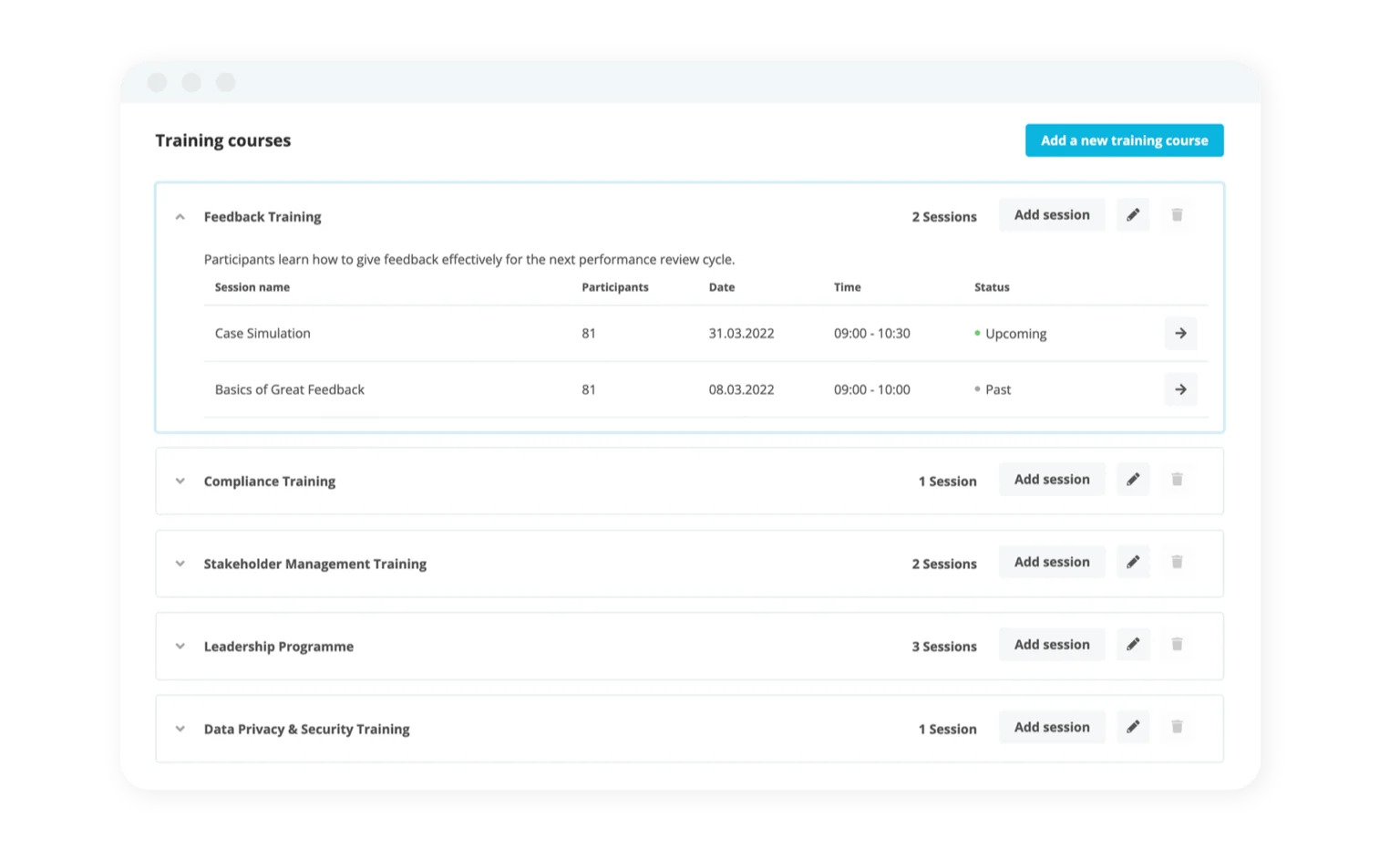
8. Improve employee advocacy
When your employees speak positively about their workplace, it enhances your company's reputation and builds loyalty. And when employees feel valued and included, they’re more likely to advocate for your company.
To improve how your employees perceive your company, work on creating a supportive and engaging work environment. To do so, actively seek employee feedback through surveys and open forums, and use this information to address concerns and make improvements.
Additionally, promote a culture of recognition by regularly celebrating employees' achievements and contributions.
Another tactic is to invest in professional growth by offering training, mentorship and clear career advancement pathways. Develop transparent communication by keeping employees informed about company goals and updates.
Better training management with Personio

Keep your people happy by investing in their personal growth with a specialised training management platform.
9. Analyse your strategy
Considering the vital role HR teams play in achieving broader business initiatives, the success of your strategy will significantly impact business performance, development practices and talent management.
To ensure your strategy is effective, use measurable KPIs to gauge how well your HR processes are working and identify areas that need adjustments. Regularly reviewing metrics such as employee satisfaction, turnover rates and productivity levels allows you to manage performance and make data-driven decisions to refine your strategies.
Build an effective HR strategy to achieve business goals
Returning to our earlier analogy: Just as a well-planned vacation means you’ll have a stress-free and enjoyable journey, an effective HR strategy ensures your business reaches its desired objectives.
By aligning your HR initiatives with your business objectives, you can boost productivity, enhance employee engagement and support sustainable growth.
At Personio, we understand the importance of seamless HR management. Our all-in-one HR platform is designed to simplify and optimise every aspect of your HR strategy. From performance management to employee development, our tools can help you carry out your HR plans effectively and achieve your business goals.
To learn more about how Personio can help you bring your HR strategy to life, check out our performance management and training management tools.
Or, if you’ve got any questions, please get in touch . We’re happy to talk about how our flexible solution can solve your unique challenges.
14 days of Personio. For free.
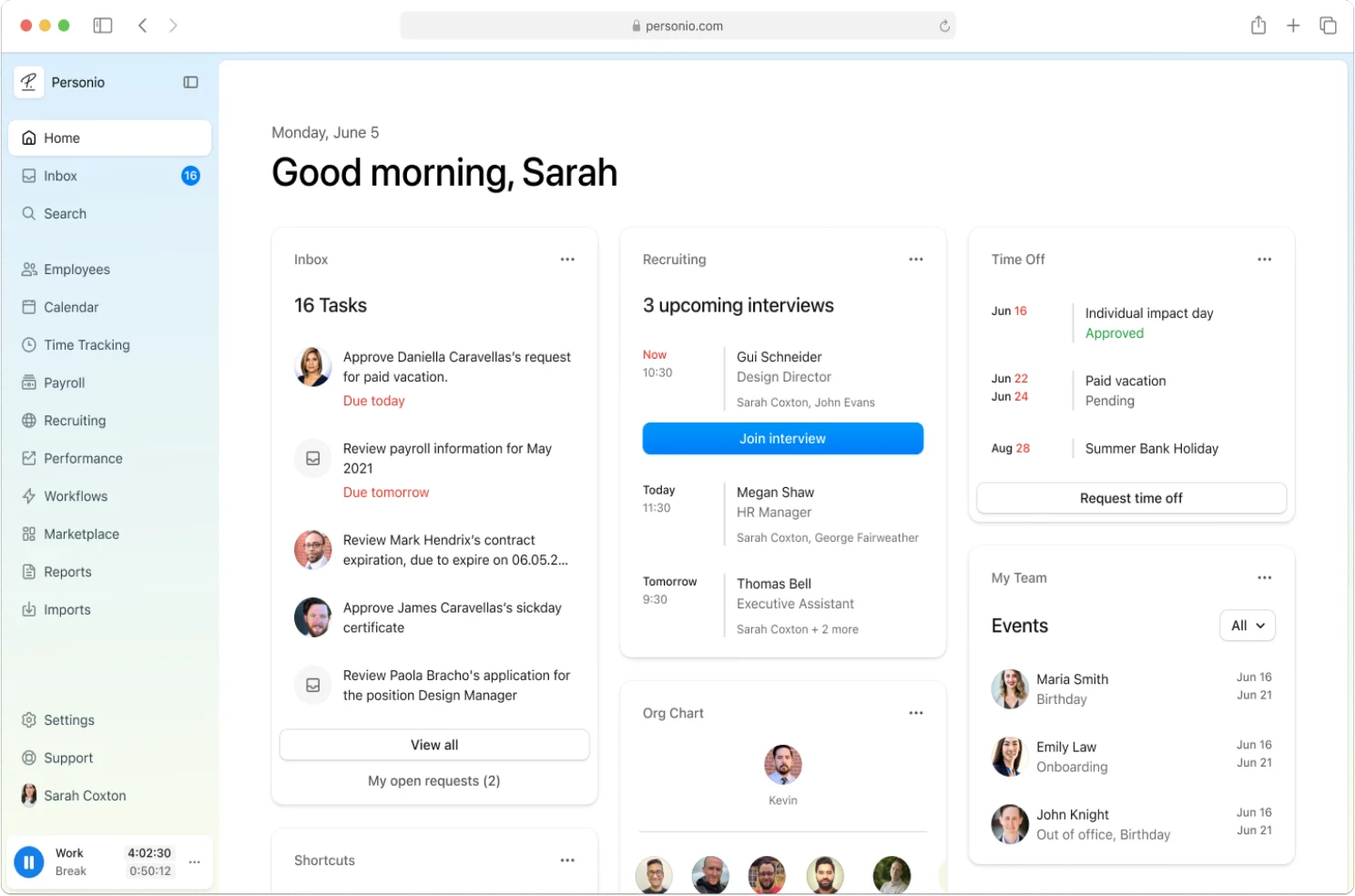
How to Write a Business Plan Executive Summary (Example Included!)

How do you turn your brilliant business idea into a reality? You've done your homework and know that to get investors or partners, you need a business plan . But more than that, you want to really stand out and make a strong first impression—and that's where the business plan executive summary steps in.
This key section gives a quick snapshot of your entire business strategy, and is designed to catch the interest of potential investors, stakeholders, or partners. It can be the difference between landing that dream deal or getting lost in the slush pile.
So, what's better than a business plan executive summary example to point you in the right direction? Below, you'll find a great one—plus tips on what to include, what to avoid, and how to craft yours.
What is a business plan executive summary?
A business plan executive summary is a condensed overview of the key elements of your business plan. It introduces your business, what you offer (products or services), your target market, and what sets you apart from the competition. It also outlines your financial projections and funding needs (if applicable) and gives a clear picture of your company description and vision.
Your business plan executive summary could be decisive in several situations:
- Pitching to investors: Investors often make preliminary decisions based on the executive summary. A well-crafted summary can get you a meeting and a chance to present your full business plan.
- Summarizing for stakeholders: Stakeholders need to quickly understand your business's direction and key strategies. An executive summary gives them a concise update.
- Business competitions: In many business plan competitions, judges rely on the executive summary to decide which plans move to the next round.
Now that you understand the importance of an executive summary in a business plan, let’s see the key components that make up a winning one.
What should an executive summary include in a business plan
Crafting an effective executive summary means transforming the most critical elements of your business plan into a clear and compelling story. It's typically positioned at the beginning of the document but is written last to ensure it accurately reflects the entire plan.
Here are the key parts of an executive summary in a business plan:
Mission statement
Your mission statement is the heart of your business; it can grab your audience's attention and clarify your business’s core values and objectives. Briefly describe your company’s purpose and what you aim to achieve.
Company history and management team
Provide a brief overview of your business’s history, noting key milestones and achievements. Introduce your management team, highlighting their experience and expertise. This section helps build credibility and shows that you have a capable team behind the business.
Products or services
Describe the products or services your business offers, focusing on what makes them unique and how they meet market needs. This part should clearly explain the value your offerings provide.
Target market
Define your target customers, including their demographics, needs, and pain points. Highlight the demand for your products or services and how your business meets this demand. Assess your main competitors, identifying their strengths, weaknesses, and market share.
Competitive edge
Identify what sets your business apart from the competition. This could be unique technology, excellent customer service, a strong brand, patents, or trademarks—anything that really gives you an edge. Emphasize these strengths to show why your business will thrive in the market.
Financial projections
Give a high-level overview of your financial projections, covering revenue, profit margins, and growth expectations. This section should reassure readers about your business’s financial viability and potential for success. Do not forget to include the amount of funding you're seeking and how you'll use it to achieve your goals.
Speaking of funding, you can build your dream business with the help of a high-paying job—browse open jobs on The Muse »
How to write a business plan executive summary: Dos and Don'ts
So, how do you write an executive summary for a business plan? Here's what you should do—and what you should avoid.
- Hook them early: Start with a captivating introduction that grabs the reader's attention. This could be a strong opening statement or an impactful statistic that highlights your most compelling value proposition.
- Write with clarity: Keep your language clear and straightforward. Using jargon or technical terms could confuse your audience.
- Tell a story : People are naturally drawn to stories. Try to frame your business plan executive summary as a narrative that includes challenges and successes.
- Focus on impact: Prioritize the most important information. Remember, it's a summary, not the full story.
- Quantify your success: Use data and metrics whenever you can to back up your claims about market size, growth potential, and financial projections.
- Proofread like a pro: Typos and grammatical errors can leave a negative impression. Double (or triple) check your work before sending it out. Don’t just use spelling and grammar check—actually re-read it to catch any mistakes.
- Showcase your passion: That should be the easy part. Just let your enthusiasm for your business and its mission shine through!
- Bury the lead: Don't wait until the end to share your most important information. Start strong and capture their interest right away.
- Be too vague: Instead, be specific and provide concrete details. Vague statements don’t add value or clarity, so they don't belong in your business executive summary.
- Ignore your audience: Tailor your summary to the needs and interests of your audience. Consider what they need to know and what will capture their interest.
- Overpromise and underdeliver: Be realistic about your projections and timelines. Setting unrealistic expectations can damage your credibility.
- Get bogged down in details: Save the nitty-gritty details for your full business plan. Focus on the key highlights in your executive summary.
- Forget the call to action: Tell your readers what you want them to do next. Do you want them to invest? Partner with you? Clearly outline your desired outcome.
- Write in a vacuum: Get feedback from trusted advisors or mentors before finalizing your summary. Fresh eyes can help spot areas for improvement.
Business plan executive summary example
Wondering how these tips look in action? Here's the business plan summary example you've been looking for.
This one is for a fictitious company—let's call it Econnovate—specializing in renewable energy solutions. Use it as a guide to craft your own business plan executive summary.
Mission and vision statements
Econnovate is revolutionizing the energy landscape with innovative, sustainable solutions that empower businesses and communities to embrace a cleaner future. Our mission is to use the power of renewable energy sources to provide innovative, affordable, and sustainable energy solutions to reduce our reliance on fossil fuels and create a more environmentally conscious world.
Founded in 2021, Econnovate is a team of passionate engineers and environmental enthusiasts dedicated to developing cutting-edge renewable energy technologies. Our team boasts over 50 years of combined industry experience, including experts in technology, marketing, and operations. Headquartered in Denver, CO, we operate with a global mindset, serving clients across diverse industries and geographies.
Our products
Econnovate's flagship product, SolarMax, is a cutting-edge solar panel system that offers 20% more efficiency than conventional panels. Additionally, we provide EcoBattery, a state-of-the-art energy storage solution that maximizes the utility of our solar panels, ensuring energy availability even during non-sunny periods. Our products are designed to be both cost-effective and easy to install, making sustainable energy accessible to a wider audience.
The global renewable energy market is expected to grow at a CAGR of 7.8% over the next decade. Our target market includes environmentally conscious homeowners and businesses seeking sustainable energy solutions. With increasing regulatory support and growing environmental awareness, the demand for our products is poised for substantial growth.
Econnovate’s proprietary solar technology not only increases efficiency but also reduces costs, giving us a significant edge over competitors. We not only provide renewable energy solutions but also adhere to sustainable practices in our own operations. Additionally, our exceptional customer service and strong brand reputation further differentiate us in the marketplace. We also offer comprehensive warranties and maintenance services, ensuring long-term customer satisfaction and loyalty.
We project a 30% annual revenue growth over the next five years, with profitability expected to be achieved by year three. Our robust financial model is based on conservative estimates and thorough market analysis. By year five, we anticipate generating $50 million in annual revenue, with a healthy profit margin of 15%.
We are seeking $2 million in funding to scale our manufacturing capabilities and expand our market reach. This investment will enable Econnovate to double production capacity and increase market share by 15% within two years. The funds will be allocated to enhancing our production facilities, boosting our marketing plan, and expanding our sales team.
1. What is an executive summary in a business plan?
It's a concise summary of the key points of a business plan, highlighting the business’s mission, products or services, market, competitive advantages, financial projections, and funding needs. The goal is to give a quick overview that captures the reader’s interest and encourages them to read the full plan.
2. How long should an executive summary be?
An executive summary is typically one to two pages long. It should provide a concise overview without overwhelming the reader. Focus on the most important aspects of your business plan, making sure each point is clear and impactful.
3. Can I use a template to write an executive summary?
Yes! Templates offer an effective structure and help ensure you cover all essential elements. But don't just fill in the blanks. Tailor the template to fit your business and make it your own. (Feel free to use our example as a guide.)
4. Should an executive summary be written in first person or third person?
An executive summary is typically written in the third person to maintain a professional tone. However, if your business plan is for internal use or a more personal presentation, using the first person can be appropriate. The key is to keep your writing clear and professional at all times.
5. How do I make my executive summary stand out?
To make your executive summary stand out, focus on being clear and compelling. Start with a strong opening statement that grabs attention. Use visual elements like bullet points, headings, and charts to make it easy to read. Highlight your unique selling points and ensure your summary is free of complex jargon and technical language.
Remember, your executive summary is often the first impression of your business, so make it count!

Access to 13 certificate programs, courses and all future releases
Personal Coaching and Career Guidance
Community and live events
Resource and template library

- Compensation & Benefits
- The 21 Best Employee Incentive...
The 21 Best Employee Incentive Programs [+ Real-Life Examples]
Some employers overlook the importance of boosting employee morale for business success. But in addition to improving work performance by up to 44% , employee incentive programs can attract quality candidates and reduce turnover by 65% .

What is an employee incentive program?
- Monetary incentives, like bonuses or profit-sharing, offer employees concrete financial rewards
- Non-monetary incentives , such as public recognition or paid time off , can further motivate employees and make them feel valued.
The benefits of employee incentive programs
- Greater productivity: Employees who feel valued usually also feel more motivated to be productive and perform to the best of their abilities.
- Cost reduction: While employee incentive programs require financial investment, they ultimately help companies save money by decreasing turnover and absenteeism , improving efficiency and work quality, and enhancing customer satisfaction.
- Talent retention: Companies with high employee satisfaction can avoid unnecessary hiring costs, as their turnover rates tend to be low. Employees who know they’re appreciated are more likely to stay with a company.
- Greater talent attraction: A robust employee incentive program signals to potential hires that your organization invests in its employees’ success, making it even more attractive to them.
- Improved company culture: Employee incentive programs can help create and reinforce a culture of motivation, self-management, ownership, belonging, and responsibility among employees.
- Strategic goal achievement: Employee incentive programs can target specific goals to support your organization’s strategic development
- More effective collaboration: A variety of incentive programs aimed at individuals, teams, and departments can encourage employees to collaborate cross-functionally and more effectively.
21 examples of employee incentive programs
- Wellness incentive programs
- Points-based incentive programs
- Sales incentive programs
- Gift card incentive programs.
Employee wellness incentive programs
1. fitness incentives.
HR tip When working on fitness incentives, highlight their benefits and communicate their availability to employees. Offer flexible hours for exercise schedules to increase participation rates.
2. Health incentives
3. mental and emotional wellness, real-life example, 4. financial wellness, 5. social and community wellness, points-based employee incentive programs, 6. milestone rewards, 7. peer-to-peer appreciation, 8. meeting customer satisfaction goals, 9. employee referral program.
- Completes and submits a job application
- Completes or passes an interview
- Completes their onboarding process.
10. Learning and development program

Employee sales incentive programs
11. role-specific incentives, 12. omnichannel sales incentives, 13. sales commissions, 14. sales spiffs.
HR tip Implement a leaderboard that tracks individual sales performance to create competition and excitement in your incentive program. Top performers can win prizes, bragging rights, and early access to new products or sales territories. You can also gamify the process with points, badges, and virtual challenges.
15. Team sales goals
16. team profit sharing, employee incentive gift card programs, 17. closed-loop gift cards, 18. open-loop gift cards, 19. employee of the month gift cards, 20. perfect attendance gift cards, 21. spot bonuses, developing an effective employee incentive program: best practices, determine your goals, find out employees’ priorities, evaluate your options based on gathered data.
- How much are you willing to spend to get the most value?
- How easy is it to implement your incentive program?
- Can it be adjusted to accommodate changing business needs or a growing workforce?
Get feedback on your shortlisted ideas
Ensure fairness throughout the process, maintain and update the program regularly, weekly update.
Stay up-to-date with the latest news, trends, and resources in HR

Related articles

Salary Benchmarking Guide: How To Pay Your Employees Fairly

14 Compensation Philosophy Examples [+ Free Template]

Your Guide To Creating a Salary Increase Letter (Plus Free Template)
New articles.

Using AI in HR: The Impact, Hurdles & Actions HR Leaders Must Take

Generative AI in HR: Examples & How To Successfully Start Using AI
Subscribe to our weekly newsletter, are you ready for the future of hr.
Learn modern and relevant HR skills, online

ConsumerSearch.com
- Home & Garden
- Fitness & Sports
- Family & Pets
- Health & Beauty
Essential Components of an HR Policy Manual: A Complete Template and Guide
In today’s fast-paced business landscape, having a well-defined HR policy manual is crucial for any organization. An HR policy manual serves as a comprehensive guide that outlines the company’s policies, procedures, and guidelines related to human resources management. It provides employees with clear expectations, establishes consistency in decision-making, and ensures compliance with legal requirements.
Creating an effective HR policy manual can be a daunting task, but fear not. This article will guide you through the essential components of an HR policy manual template to help you develop one for your organization.
I. Introduction
The introduction section of the HR policy manual sets the tone for the entire document. It should include a brief overview of the organization’s mission, vision, and values. This section is also an excellent opportunity to communicate the importance of following company policies and foster a positive workplace culture.
II. Employment Policies
The employment policies section covers all aspects related to hiring, onboarding, and termination processes. It should include guidelines on recruitment practices such as job postings, candidate selection criteria, and interview procedures. Additionally, it should outline procedures for conducting background checks, reference checks, and drug screenings if applicable.
This section should also include policies regarding employee classifications (full-time vs. part-time), work hours and schedules, attendance expectations (including tardiness and absenteeism), leaves of absence (such as vacation time or medical leave), performance evaluations, promotions or transfers within the company hierarchy.
III. Code of Conduct
The code of conduct section outlines expected behaviors from employees at all levels within the organization. It establishes standards for professionalism in areas such as dress code, ethical behavior in dealing with colleagues or clients/customers/vendors/suppliers/stakeholders/contractors/partners/competitors/business associates etc., confidentiality agreements/intellectual property rights protection measures etc.
This section may also cover topics like conflicts of interest, anti-harassment policies, social media usage guidelines, and rules regarding the use of company resources. It is essential to clearly communicate the consequences of violating these policies to maintain a respectful and inclusive work environment.
IV. Benefits and Compensation
The benefits and compensation section details the organization’s policies regarding employee benefits, salary structures, and compensation packages. It should include information on healthcare benefits (medical, dental, vision), retirement plans (401(k), pension plans), life insurance policies, disability insurance, paid time off (vacation, sick leave), and other perks or incentives offered by the organization.
Furthermore, this section should outline the process for salary reviews or adjustments based on performance evaluations or market trends. It is essential to ensure transparency in communicating compensation-related information to employees to foster trust and avoid misunderstandings.
An HR policy manual serves as a vital tool for organizations to establish clear guidelines and expectations for their employees. By covering essential components such as introduction, employment policies, code of conduct, and benefits/compensation in your HR policy manual template, you can create a comprehensive guide that promotes consistency in decision-making across all levels of your organization.
Remember that an HR policy manual should be regularly reviewed and updated to reflect any changes in laws or organizational practices. By providing your employees with a well-structured HR policy manual template that is regularly maintained, you can ensure a harmonious workplace environment focused on compliance with legal requirements while fostering positive employee experiences.
This text was generated using a large language model, and select text has been reviewed and moderated for purposes such as readability.
MORE FROM CONSUMERSEARCH.COM

Filter by Keywords
10 Best HR Software for Small Business 2024
Praburam Srinivasan
Growth Marketing Manager
July 12, 2024
Running a small business is fulfilling, but HR tasks? Not so much. Payroll, onboarding, and chasing timesheets can take up all your time.
Luckily, HR software does a remarkable job streamlining your HR processes and freeing up your valuable time. With features like automated payroll, employee management, and performance tracking, these tools take the weight off your shoulders, letting you focus on what truly matters—growing your small business.
This blog cuts through the clutter, revealing the top 10 contenders for the best HR software for small businesses in 2024.
What Should You Look for in HR Software for Small Businesses?
- 1. ClickUp (Best for teams looking for a holistic HR solution)
- 2. BambooHR (Best for small businesses seeking simplicity in managing HR processes)
- 3. Greenhouse (Best for growing businesses with complex hiring needs)
- 4. Rippling (Best for mid-sized businesses needing a comprehensive HR suite)
- 5. Deel (Best cloud-based HR software for managing a global workforce)
6. Paycor (Best HR software for small businesses with integrated payroll needs)
- 7. HROne (Best for growing businesses needing streamlined HR management)
- 8. Gusto (Best HR software for small businesses that need an all-in-one solution)
- 9. GreytHR (Best for small businesses looking for an affordable HR software solution)
- 10. Keka (Best for small businesses and teams looking for user-friendly HR software)
Find the Missing Piece for Your HR Team
With so many HR software solutions on the market, choosing the right one for your small business can feel daunting.
But don’t worry, here are the key features to consider when making your decision:
- Ease of use: Look for HR software that’s intuitive and user-friendly for both you and your employees
- Scalability: As your small business grows, your HR needs will too. Choose software that can scale with you
- Affordability: HR software should fit your budget. Many offer tiered pricing plans based on company size
- Features: Identify your HR needs—like payroll, time tracking, and performance management. Make sure the software has relevant features to cover those bases
- Integration: Does the HR software integrate with your existing accounting or payroll software? This can save you a lot of time and headaches
10 Best HR Software for a Small Business to Use in 2024
Building a thriving business relies on a happy and productive team. Streamline your processes, prioritize employee well-being, and unlock the full potential of your workforce with HR tools.
Let’s discover tools to help you manage your HR operations effectively.
1. ClickUp ( Best for teams looking for a holistic HR solution )

Are you feeling overwhelmed by the ever-growing demands of HR management?
ClickUp for Human Resources is one of the best HRIS systems available today. It helps simplify and optimize every aspect of your people and HR operations, from seamless onboarding and performance management to intuitive payroll processing and comprehensive reporting.
It enables you to nurture a thriving workforce and propel your small business forward.
ClickUp Docs

ClickUp Docs lets you create a central repository for company policies, procedures, and FAQs. This empowers employees with self-service access to information, reducing the burden on the HR department for answering repetitive questions.
Collaborate on documents simultaneously, ensuring everyone stays on the same page with the latest updates. Version history lets you track changes and revert if needed.
ClickUp Automations

ClickUp Automations help you set up automated workflows to trigger tasks like sending welcome emails, assigning training materials, and granting system access upon new hire signup. This ensures a smooth and consistent onboarding experience for new hires.
It can also streamline leave request processes, automatically notify managers, update calendars, and trigger approval workflows, which reduces manual tasks and potential errors.
ClickUp Brain

Need a concise summary of employee performance reviews or onboarding documents? ClickUp Brain can automatically generate summaries, saving small business owners and HR teams valuable time wading through lengthy texts.
This AI-powered feature can also assist by generating content based on your prompts, freeing up HR professionals to focus on more strategic tasks.
ClickUp’s Templates for Efficiency
ClickUp has a library of pre-built, free HR templates . These templates provide a strong foundation to get you started and save you time building processes from scratch.
ClickUp’s HR Knowledge Base Template

Say goodbye to scattered documents and frustrated employees!
The ClickUp HR Knowledge Base Template lets you create a centralized knowledge base for company policies, procedures, and frequently asked questions. Empower your employees with self-service access to the information they need, reducing the burden on HR staff.
ClickUp’s Employee Directory Template

ClickUp’s Employee Directory Template keeps your team connected and information readily available with a user-friendly employee directory.
This template lets you store employee contact details, photos, and departmental information on a single HR platform. The search functionality makes finding the colleague you need easy.
ClickUp best features
- Workflow creation: Develop clear and consistent workflows and templates for performance reviews , onboarding, and other HR processes. This ensures everyone is on the same page, reduces errors, and keeps tasks moving smoothly
- HR project management: Human resource planning and initiatives, big or small, can be effectively managed within ClickUp. Track the progress of a new training program, collaborate on policy revisions, and assign tasks to team members—all within a centralized platform
- Improved communication and collaboration: ClickUp enables seamless communication between your HR team and employees. Use comments, chat, and document-sharing features to keep everyone in the loop and ensure clear communication on HR-related matters
- Document management: Store employee handbooks , training materials, and company policies in a centralized location. This allows for easy access, reduces clutter, and empowers employees with self-service access to information
- Goal setting and tracking: Set clear HR goals for the team to track progress on initiatives and ensure everyone is aligned. Use ClickUp to measure success with HR metrics and identify areas for improvement
ClickUp limitations
- Some complex HR processes may require some customization and setup time for optimal functionality
ClickUp pricing
- Free forever
- Unlimited: $7/month per user
- Business: $12/month per user
- Enterprise: Custom pricing
- ClickUp Brain: Add to any paid plan for $7 per member per month
ClickUp ratings and reviews
- G2: 4.7/5 (9,540+ reviews)
- Capterra: 4.6/5 (4,140+ reviews)
2. BambooHR ( Best for small businesses seeking simplicity in managing HR processes )

BambooHR is a user-friendly HR software solutions platform that streamlines tasks like onboarding, compensation management, payroll, and employee data management, freeing you from the shackles of spreadsheets and endless filing.
Whether you’re looking to streamline the onboarding process for new hires or want the assurance that payroll is managed automatically and accurately, BambooHR effortlessly handles every HR task.
BambooHR best features
- Navigate easily with a clean and intuitive interface, even if you are a non-technical user
- Streamline repetitive HR tasks like expense reporting and PTO requests
- Gain valuable insights into your workforce with built-in reporting tools
- Access on-the-go with a mobile app for both employers and employees
BambooHR limitations
- Some reviewers note that BambooHR offers fewer customization options for workflows and reports compared to competitors
- Offers basic applicant tracking features, but scaling up for larger hiring volumes could become cumbersome as your company and needs grow
BambooHR pricing
- Custom pricing
BambooHR ratings and reviews
- G2: 4.4/5 (2,190+ reviews)
- Capterra: 4.6/5 (2,830+ reviews)
3. Greenhouse ( Best for growing businesses with complex hiring needs )

Greenhouse is a robust HR tool designed to help businesses of all sizes cultivate their dream team. Its robust ATS goes beyond simple resume collection.
It streamlines the hiring process for both the business and the candidate with features like confirmation emails upon application submission, interview-scheduling updates, and timely notifications about application status.
This platform helps with ongoing workforce planning and engagement initiatives to retain top talent . By attracting a wider pool and identifying high-potential candidates during current recruitment drives; Greenhouse builds a robust talent pipeline for you.
A positive candidate experience through streamlined communication increases the likelihood of top talent staying connected, creating a pool of engaged individuals ready to contribute to your organization’s long-term success.
Greenhouse best features
- Streamline your entire recruitment process, from attracting top talent to managing interviews and offers
- Create a positive candidate experience with customizable career pages and automated communication tools
- Integrate this HR software with popular productivity and communication tools
- Set goals, track performance, and provide feedback to employees with dedicated features
- Gain valuable insights into your small business’s recruitment process with analytics
Greenhouse limitations
- Due to its robust features, it has a steeper learning curve
- It is on the pricier side compared to some competitors
Greenhouse pricing
Greenhouse ratings and reviews.
- G2: 4.4/5 (2,200+ reviews)
- Capterra: 4.5/5 (670+ reviews)
4. Rippling ( Best for mid-sized businesses needing a comprehensive HR suite )

Rippling offers a comprehensive suite that tackles payroll, benefits administration, performance management, and more, all under one roof. It brings efficiency by having a single platform to manage your entire workforce, eliminating the need for multiple logins and fragmented workforce data.
Rippling empowers your HR team to focus on strategic initiatives and employee engagement, navigate the complexities of managing a workforce, and ensure everyone is happy, compliant, and productive.
Rippling best features
- Simplify the onboarding process for new hires with automated workflows
- Stay on top of complex employment laws and regulations with built-in compliance features
- Prioritize data security with features like role-based access control and encryption
- Scale to accommodate the growing needs of your small business and customize workflows and reports
Rippling limitations
- It doesn’t integrate as seamlessly with specific third-party business tools compared to some competitors
- Some small business owners report a learning curve to master its full functionality
Rippling pricing
Rippling ratings and reviews.
- G2: 4.8/5 (2,380+ reviews)
- Capterra: 4.9/5 (3,000+ reviews)
💡Pro Tip: Use employee onboarding templates to ensure a smooth and informative experience for your new team members. These templates can help you cover everything from essential paperwork to company culture immersion while giving your new hires a clear understanding of their role and goals.
5. Deel ( Best cloud-based HR software for managing a global workforce )

The world is your oyster for finding exceptional talent, but managing a global workforce can be a logistical nightmare.
International regulations, payroll complexities, and contractor classification issues can quickly turn your dream team into a bureaucratic headache. Deel simplifies your international HR processes and ensures compliance from the get-go.
This comprehensive HR platform handles payroll and tax administration for employees and contractors worldwide, eliminating the burden of navigating unfamiliar regulations. Deel lets you focus on attracting top talent, regardless of location, while they take care of the behind-the-scenes complexities of workforce management.
Deel best features
- Manage payroll and ensure compliance for international employees and contractors
- Provide your global workforce with flexible payment options, including international bank transfers and local currencies
- Ensure proper classification of independent contractors to minimize legal risks
- Automate tasks like contract generation and tax calculations for a smoother workflow
Deel limitations
- Lacks some features for broader employee management needs
- Some companies find fees to be slightly higher than some competitors
Deel pricing
- Deel Contractor Management: $49/month
- Deel EOR: $599/month
- Deel Payroll: $29/employee/month
- Deel US Payroll: $19/employee/month
- Deel US PEO: $79/employee/month
- Deel HR: Free
- Deel Engage: $20/employee/month
- Deel Immigration: Custom pricing
Deel ratings and reviews
- G2: 4.8/5 (3,480+ reviews)
- Capterra: 4.7/5 (810+ reviews)

Paycor is a human resources software that seamlessly integrates payroll processing with its HR features.
It is a unified system for onboarding new hires, managing employee data, and processing payroll accurately and on time. Paycor eliminates the need for manual HR data entry and ensures seamless communication between departments.
Its built-in compliance management features help you stay on top of federal and state employment laws across multiple locations, giving you peace of mind and avoiding costly penalties.
Paycor best features
- Integrate payroll processing with HR functions to reduce the need for manual data entry
- Stay compliant with federal and state employment regulations across multiple locations using automated features
- Manage employee benefits administration, enrollment, and deductions conveniently within the HR platform
- Track employee hours accurately with time and attendance tracking features
- Receive valuable insights into your workforce with robust reporting and analytics tools
Paycor limitations
- Reporting and workflows are less customizable compared to some competitors
- Some users reported potentially higher implementation costs associated with Paycor’s software
Paycor pricing
Paycor ratings and reviews.
- G2: 3.9/5 (720+ reviews)
- Capterra: 4.4/5 (2,800+ reviews)
7. HROne ( Best for growing businesses needing streamlined HR management )

As your small business expands, so do your HR support needs. Juggling recruitment, onboarding, and performance management can quickly become overwhelming. HROne helps you streamline core HR processes and tasks.
This human resources software has everything you need, from an ATS to attract top talent to onboarding automation for a smooth transition for new hires. But that’s not all—HROne also helps you build a culture of engagement and development with its performance management tools.
Set clear goals for your team, track progress, and provide constructive feedback —all within a user-friendly HR platform.
HROne best features
- Use a user-friendly ATS to attract and manage qualified candidates, streamlining your recruitment process
- Automate workflows to reduce onboarding headaches and ensure a smooth transition for new hires
- Set employee goals, track progress, and provide feedback to employees with performance management features
- Boost employee engagement with tools such as internal communication features and recognition programs
- Access paystubs, timesheets, and company information on the go with a mobile app for employees
HROne limitations
- Requires integration with a separate payroll provider, potentially adding complexity to the HR system
- Some users report concerns regarding the tool’s ability to scale effectively
HROne pricing
- Basic: $1.02/user/month
- Professional: $1.38/user/month
HROne ratings and reviews
- G2: 4.8/5 (1,430+ reviews)
- Capterra: Not enough reviews
8. Gusto ( Best HR software for small businesses that need an all-in-one solution )

Between chasing candidates and tackling daily tasks, HR can easily be overlooked. Gusto offers an all-in-one solution that’s both user-friendly and powerful.
Gusto is a cloud-based solution designed to streamline HR for small businesses. Unlike some limited software, Gusto offers features like effortless payroll with automatic tax filing, a curated marketplace for vetted benefits providers, and employee self-service options for pay stubs and time-off tracking.
Gusto simplifies onboarding with automated tasks and electronic document collection and even offers tools for performance management. The best part? Gusto scales with you, adapting to your growing workforce while enabling your HR team to focus on strategic initiatives.
Gusto best features
- Navigate easily with a user-friendly interface for HR managers and employees
- Automate payroll processing, including federal and state tax calculations and deductions
- Administer a wide range of employee benefits options with its administration tools.
- Track employee hours accurately and simplify payroll with time-tracking features.
- Ensure compliance with employment regulations through automated tax filing and reporting features
Gusto limitations
- Growing businesses with complex pay structures or bonuses might require a more specialized solution
- Only offers basic recruiting features, which won’t be quite as helpful as your company grows
Gusto pricing
- Simple: $40/month
- Plus: $80/month
- Premium: Custom pricing
Gusto ratings and reviews
- G2: 4.5/5 (2,000+ reviews)
- Capterra: 4.6/5 (3,880+ reviews)
9. GreytHR ( Best for small businesses looking for an affordable HR software solution )

Growing your team is exciting, but HR costs can quickly strain your budget. GreytHR understands this struggle and offers a cost-effective solution for core HR management tasks, performance tracking, and reporting.
This software equips your growing team with the tools they need to streamline onboarding, track employee performance, and generate valuable reports on key metrics—all within a budget-friendly package.
GreytHR empowers you to make data-driven decisions and cultivate a collaborative work environment for your team. Don’t let financial constraints hinder your growth; GreytHR is the perfect partner for scaling your small business with strategic solutions.
GreytHR best features
- Manage employee onboarding , time tracking, payroll processing, and other core HR tasks efficiently
- Use performance management features to set goals, track employee progress, and provide feedback
- Generate data-driven workforce insights with reporting tools, tracking key HR metrics like employee engagement and turnover rates
- Access payslips, timesheets, and company announcements on the go with a mobile app for employees
GreytHR limitations
- Has fewer integrations with other software for small businesses
GreytHR pricing
- Starter: Free
- Essential: $41.81/month
- Growth: $65.74/month
- Enterprise: $89.66/month
GreytHR ratings and reviews
- G2: 4.4/5 (840+ reviews)
- Capterra: 4.3/5 (250+ reviews)
10. Keka ( Best for small businesses and teams looking for user-friendly HR software )

Launching a business or managing a small team can feel overwhelming. The last thing you need is complex small business HR software to add to the chaos. Keka offers a user-friendly HR platform specifically designed for small businesses and teams.
It offers essential HR features like onboarding, scheduling, time tracking, and an employee self-service portal—all at an affordable price. Manage new hire paperwork, easily track employee hours, and empower your team with self-service access to information.
Keka keeps things simple and efficient, allowing you to focus on building a solid foundation for your team and achieving your entrepreneurial goals.
Keka best features
- Simplify HR management for small HR teams with limited experience with a clean and easy-to-use interface
- Choose from competitive pricing plans, making it a budget-friendly option for small businesses
- Handle essential HR tasks, including employee onboarding, time tracking, and leave requests with ease
- Provide employees with a self-service portal for convenient access to payslips and timesheets
Keka limitations
- Limited customization options for workflows and HR operations reports
Keka pricing
- Basic: $9/user/month
- Advanced: $16/user/month
- Enterprise: $22/user/month
Keka ratings and reviews
- G2: 4.5/5 (960+ reviews)
- Capterra: 4.4/5 (70+ reviews)
No more feeling overwhelmed by their complex functionalities or limited features.
The HR software solutions explored in this blog can help you simplify tasks, ensure compliance, and empower your team.
ClickUp makes it easy to create a clear, visual workflow for onboarding new hires and tracking performance reviews, all within a single HR system. HR professionals can keep handbooks, training materials, and company policies in one place, making access and collaboration a breeze.
In a nutshell, ClickUp is a centralized hub for small businesses, enhancing organization, communication, and collaboration within the HR team.
Sign up for ClickUp today and experience the power of effortless organization.
Questions? Comments? Visit our Help Center for support.
Receive the latest WriteClick Newsletter updates.
Thanks for subscribing to our blog!
Please enter a valid email
- Free training & 24-hour support
- Serious about security & privacy
- 99.99% uptime the last 12 months
HR Department Management Checklist
Save, fill-In The Blanks, Print, Done!
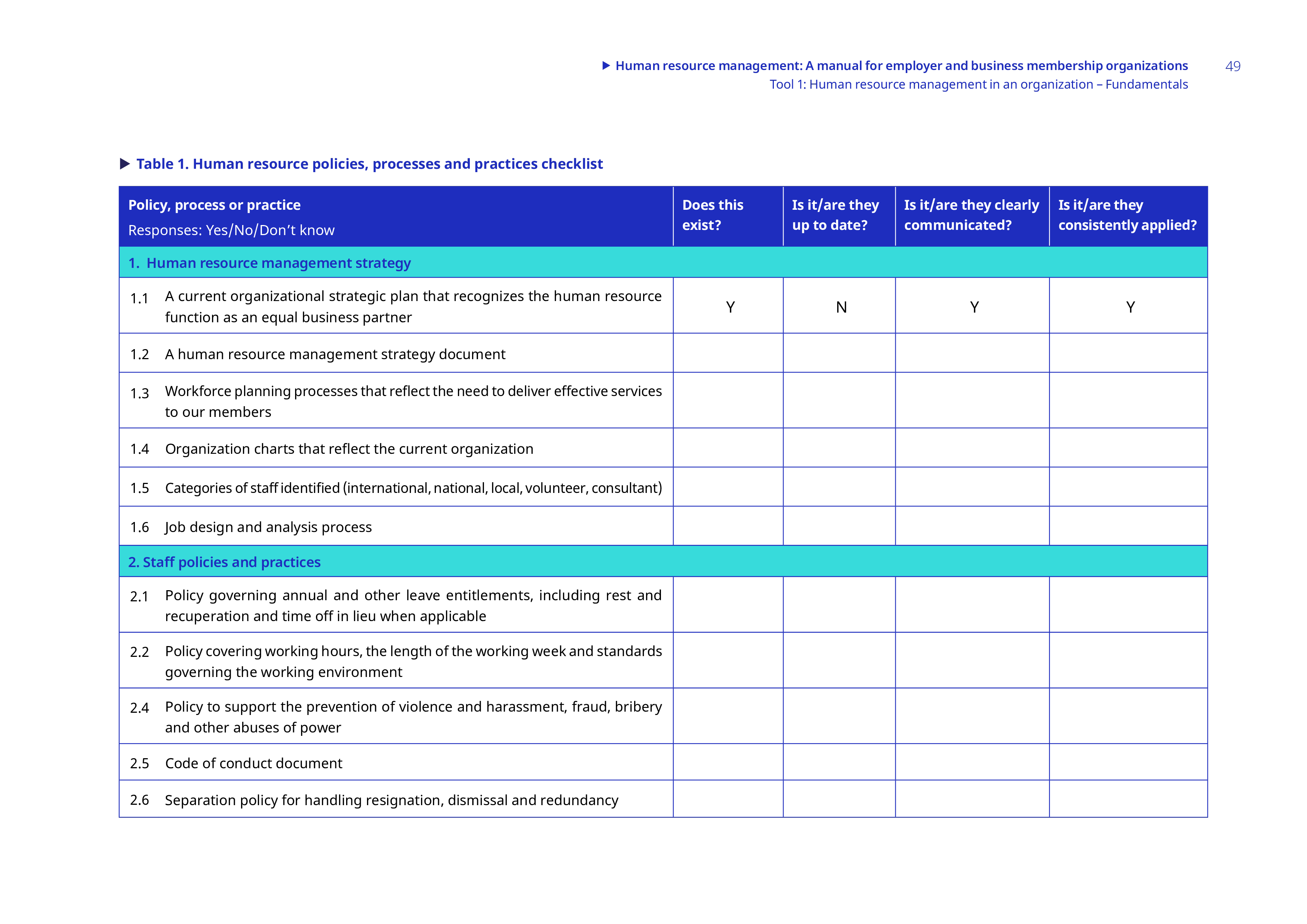
Download HR Department Management Checklist
- This Document Has Been Certified by a Professional
- 100% customizable
- This is a digital download (115.74 kB)
- Language: English
- We recommend downloading this file onto your computer.

- Compliance: Ensuring all HR policies and practices comply with current labor laws and regulations is essential to avoid legal issues and penalties.
- Consistency: A standardized approach to HR processes promotes fairness and uniformity in managing employees, from recruitment to termination.
- Clarity: Clear and well-documented HR policies provide guidance to employees and management, reducing misunderstandings and disputes.
- Efficiency: Streamlined HR processes enhance operational efficiency, saving time and resources.
- Risk Management: Regularly updating HR policies helps mitigate risks associated with non-compliance and employee grievances.
- Employee Satisfaction: Fair and transparent HR practices contribute to higher employee morale and satisfaction.
- Strategic Alignment: Ensuring HR practices align with organizational goals supports strategic planning and business growth.
- Continuous Improvement: Regular reviews of HR processes facilitate continuous improvement and adaptation to changing business needs.
DISCLAIMER Nothing on this site shall be considered legal advice and no attorney-client relationship is established.
Leave a Reply. If you have any questions or remarks, feel free to post them below.
GDPR Compliance Templates
Related templates, hr policy - non-discrimination policy, hr policy - overtime policy guidance, hr policy - sexual harassment policy.
- Holiday Hr Policy
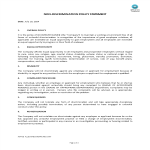
Latest templates
- IT Support Analyst Job Description
- Application Letter Fresher
- Executive Sous Chef Job Description
- Formal Job Application Letter For Administrative Assistant
Latest topics
- GDPR Compliance Templates What do you need to become GDPR compliant? Are you looking for useful GDPR document templates to make you compliant? All these compliance documents will be available to download instantly...
- Influencer Marketing Templates What makes a good influencer? Check out our effective and useful Influencer Marketing Templates here!
- IT Security Standards Kit What are IT Security Standards? Check out our collection of this newly updated IT Security Kit Standard templates, including policies, controls, processes, checklists, procedures and other documents.
- Business Credit Application Forms How to create a Business Credit Application Form? Check out our Credit Application Form templates here.
- Short Sick Leave Email Sample How to write a short sick leave email? Check out our Short Sick Leave Email Sample templates here!
The golden rule for every business man is this: Put yourself in your customer’s place. | Orison Swett Marden

ONLY TODAY!

IMAGES
VIDEO
COMMENTS
Here are six steps to help you succeed at the human resource planning process. 1. Assess current employees' skill levels. The first step to creating a future-forward HR plan is to assess employees' current skill sets, and compare them to your operational needs moving forward.
With an HR business plan template, you can help your company recruit new employees, retain existing employees, and guide the development of the workforce so that you collectively meet your business objectives, regardless of any changes in the industry or economy. When creating your HR business plan, you need to perform a needs analysis of your ...
Download. : Free HR business plan template. Every success story starts with a plan. Using this template, you can help flesh out a business plan for your HR function with: Best practices for HR business partnerships. A helpful template to realise your people team's goals. Tangible ways to action and activate an HR strategy.
8 steps to creating an effective HR strategy plan. Whether you're working off a template or starting from scratch, there are some essential steps that should go into the development of any great human resources strategy. Here's everything you need to consider at each stage. 1. Establish your HR strategy's aims.
Step 2: Clarify the Roles and Job Descriptions. Human resources as a discipline covers multiple roles. The next important step in creating your HR business plan is to clearly define the roles and responsibilities of each area in HR. Whether it is recruitment or payroll or employee engagement, each area of HR is equally important.
By using the Business Plan Template in ClickUp and following the steps outlined below, HR managers can develop a comprehensive plan to support the company's human resources needs and drive employee success. 1. Assess current HR practices. Start by evaluating the current HR practices and initiatives within your organization.
Line managers, human resource managers and other HR professionals, CEOs, department managers, team leaders, and unions are all examples of professionals who could use such a template. You can use our HR strategic plan template to improve your company's workforce management, achieve common business goals, and maximize your human capital.
Evaluate and adapt compensation and benefits programs to be more competitive. 5. Create the document layout and design. There's no point in preparing an HR strategic plan if it's not accessible and engaging. The key to getting people to read and absorb the plan is to present the information clearly and concisely.
Start your strategic HR plan by establishing your current state, outlining what you'd like to achieve, and identifying the metrics to get you there. Focus on: Clarifying your overarching business strategy and goals. Identifying the metrics related to your desired outcomes. 2.
Step 1: Identify the current supply of human resources. The planning process starts by analyzing the current labor pool. Identify the strengths and weaknesses of your organization with regard to the number of employees, their skills, experiences, qualifications, positions, performance levels, age, benefits, salary levels, languages spoken ...
Traditionally, a marketing plan includes the four P's: Product, Price, Place, and Promotion. For an human resource consulting business, your marketing plan should include the following: Product: In the product section, you should reiterate the type of HR consulting company that you documented in your Company Analysis.
How to Create an HR Plan in MS Word. According to the Society of Human Resource Management, 57 percent of business organizations think that employee retention is one of the biggest challenges that companies are facing today. These issues are the things that need to be addressed by HR leaders. And resolving them starts with an effective HR plan.
Develop A Human Resource Business Plan - The first step in starting a business is to create a detailed human resource business plan that outlines all aspects of the venture. This should include potential market size and target customers, the services or products you will offer, pricing strategies and a detailed financial forecast.
Human Capital Maximizers (HCM) is a human resource consulting company located in Portland, Oregon. HCM has expertise in a wide range of HR areas and is targeting the emerging company market. HCM will offer this market the ability to compensate client's employees with stock options from their company. This will be especially appealing to many ...
11+ HR Strategic Plan Templates - PDF, Word. With every business, there's always going to be a common goal that everyone will be working towards. However, how everyone will go about in achieving them might differ and that could highly affect the business's success. For those in human resources, there has to be some sort of sample plan in ...
Tips for Creating an HR Strategic Plan. Acquiring an HR strategy template or a downloadable HR strategic plan PDF sample is easy. Coming up with your own strategic plan from scratch is hard. However, it doesn't have to be too difficult. Below are some tips that are bound to come in handy down the line. Tip 1: Always Think of Your Future Needs
HR Strategy & Processes Templates. Form a strong foundation for your HR practices and achieve organizational excellence with our HR strategy & processes templates. Quickly design comprehensive HR strategies, streamline essential processes, and align HR initiatives with your overall business goals. Whether you're designing employee policies ...
This HR strategic plan template is a great starting point for visualizing and communicating your own HR strategic plan. An HR strategic plan allows HR to communicate how HR operates and identify areas of improvement. HR Strategic Plan Template HR personnel should look at the HR strategy every year, maybe more than once a year. An HR Strategic ...
Here is a free business plan sample for a HR consulting practice. January 29, 2024. Embarking on the journey to become a human resources consultant can be both exciting and daunting. In the following paragraphs, we will present you with a comprehensive business plan outline tailored for a human resources consulting firm.
Here is a list of the most important sections for a comprehensive and compelling business plan: 1. Executive Summary. An executive summary is a quick, concise overview of the HR consultancy business plan, highlighting the most essential aspects of your HR consulting firm. Though it is the first section, writing your plan summary would be more ...
HR Strategic Plan Templates. HR Managers Need Great HR Strategic Plans. Create One with Template.net's Free Sample Human Resource Strategic Planning Templates, HR Business Partner Management Plans, Annual HR Implementation Plans, Workforce Planning, Strategic Action Plans, and Strategy Roadmaps, You Can Make Great of Your HR Departments Plans ...
A good business plan guides you through each stage of starting and managing your business. You'll use your business plan as a roadmap for how to structure, run, and grow your new business. It's a way to think through the key elements of your business. Business plans can help you get funding or bring on new business partners.
In short, HR Plan Templates are the valuable tools for HR professionals to develop strategic initiatives aligned with organizational goals. By using HR plan templates, organizations can ensure consistency, efficiency, and effectiveness in their HR practices, ultimately leading to a more engaged workforce and better business outcomes.
Published: 09 July 2024 Summary. Use this tool to document the key components of a business unit's strategic workforce plan, which includes a workforce plan summary, an implementation plan, an overview of the individual initiatives required to achieve strategic objectives and an implementation risk map.
4. Summary of key HR initiatives. Highlight major projects and actions that will help achieve strategic goals. Examples: Implement an employee wellness programme, upgrade the recruitment process and launch leadership development initiatives. 5. HR operating model and skills needed
Business competitions: In many business plan competitions, judges rely on the executive summary to decide which plans move to the next round. Now that you understand the importance of an executive summary in a business plan, let's see the key components that make up a winning one. What should an executive summary include in a business plan ...
HR Business Partner 2.0 Become a truly strategic partner to the business Certificate Program. ... Resources & Guides The largest library of HR articles, templates & resources. ... Often part of a broader sales compensation plan, a sales incentive program may offer specific rewards for particular achievements (e.g., a 10% increase in conversion ...
Creating an effective HR policy manual can be a daunting task, but fear not. This article will guide you through the essential components of an HR policy manual template to help you develop one for your organization. I. Introduction. The introduction section of the HR policy manual sets the tone for the entire document.
ClickUp Brain can automatically generate summaries, saving small business owners and HR teams valuable time wading through lengthy texts. This AI-powered feature can also assist by generating content based on your prompts, freeing up HR professionals to focus on more strategic tasks. ClickUp's Templates for Efficiency
Compliance: Ensuring all HR policies and practices comply with current labor laws and regulations is essential to avoid legal issues and penalties. Consistency: A standardized approach to HR processes promotes fairness and uniformity in managing employees, from recruitment to termination. Clarity: Clear and well-documented HR policies provide guidance to employees and management, reducing ...